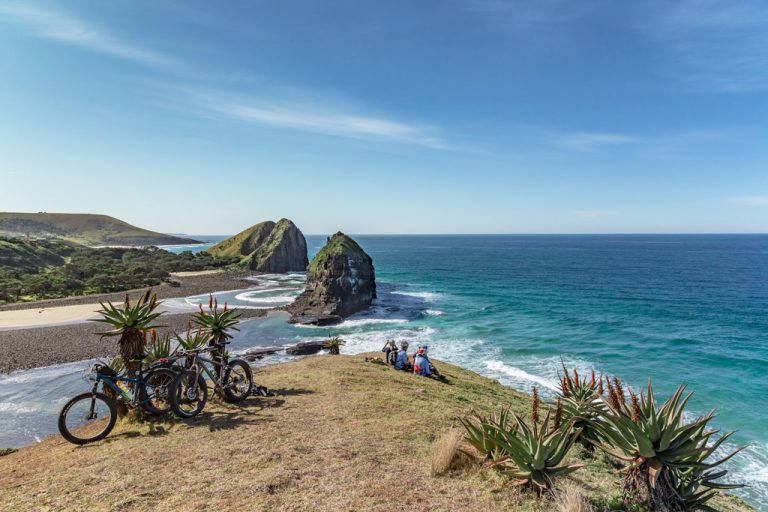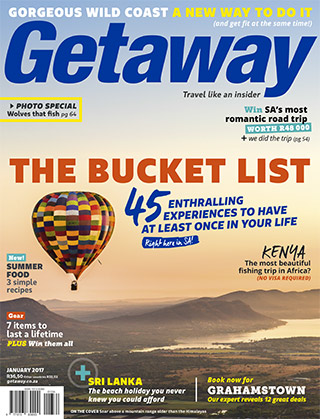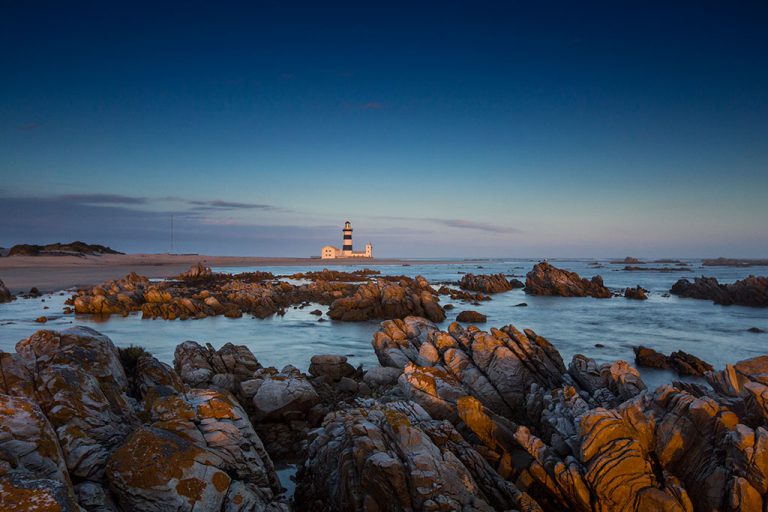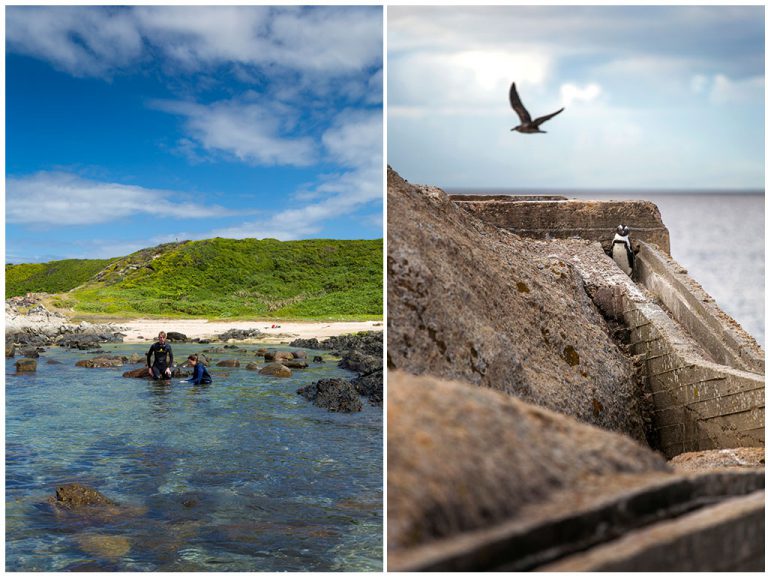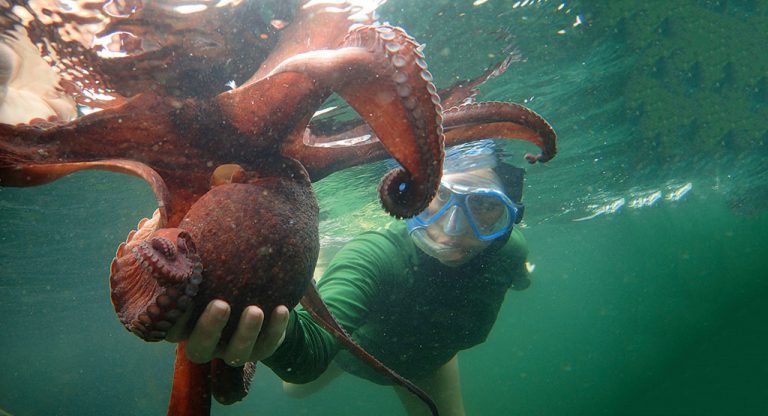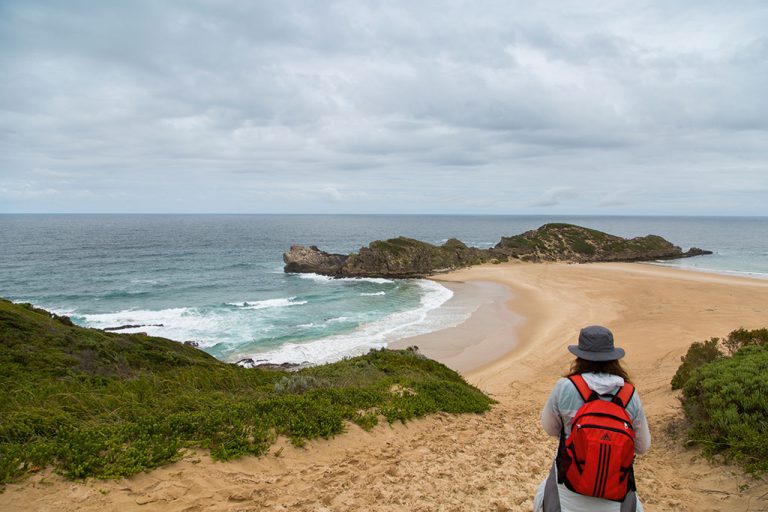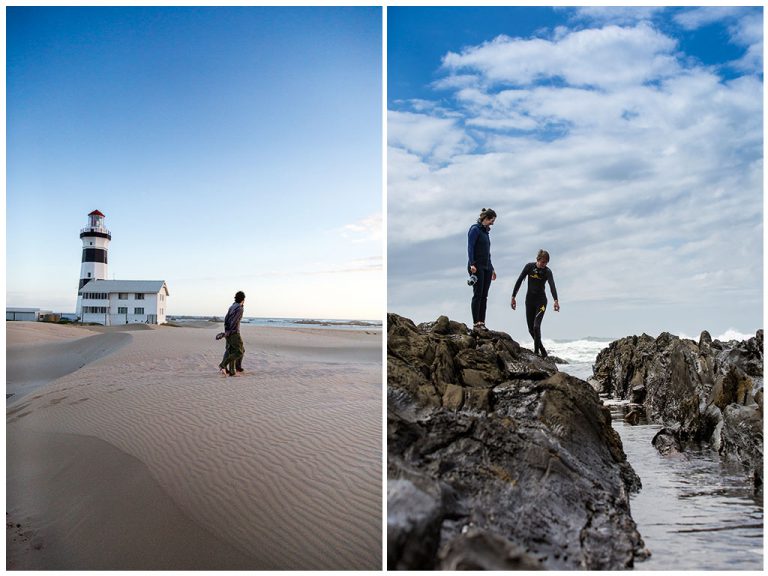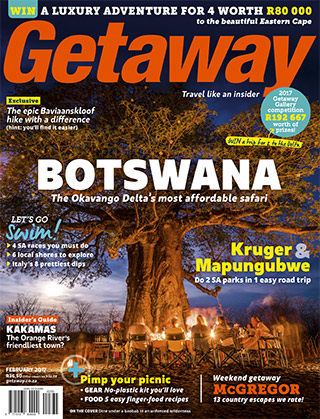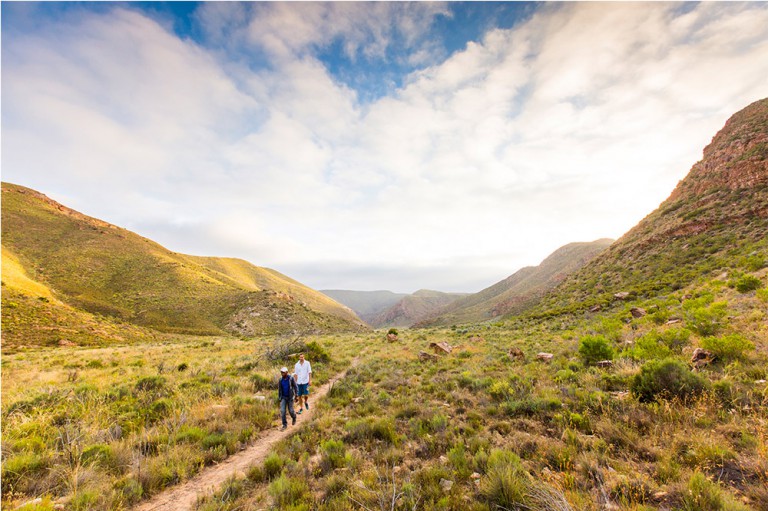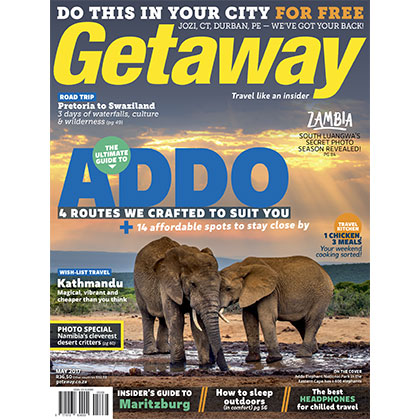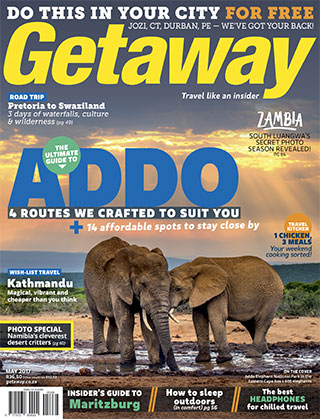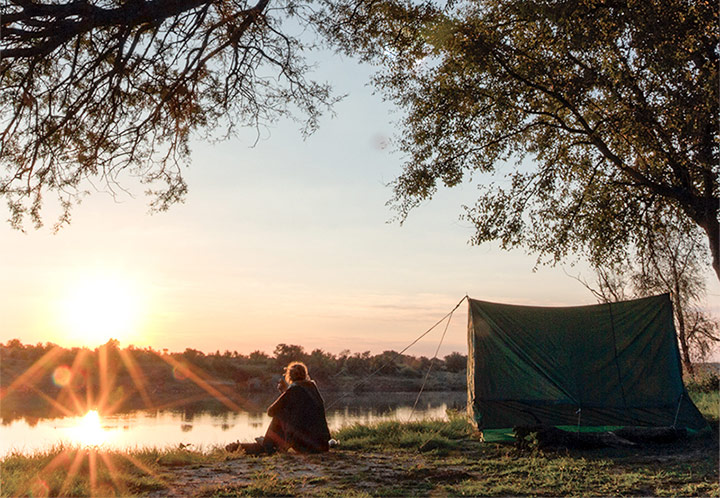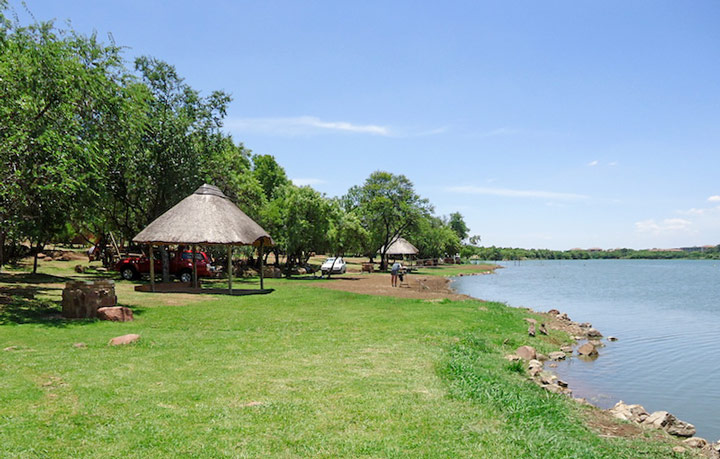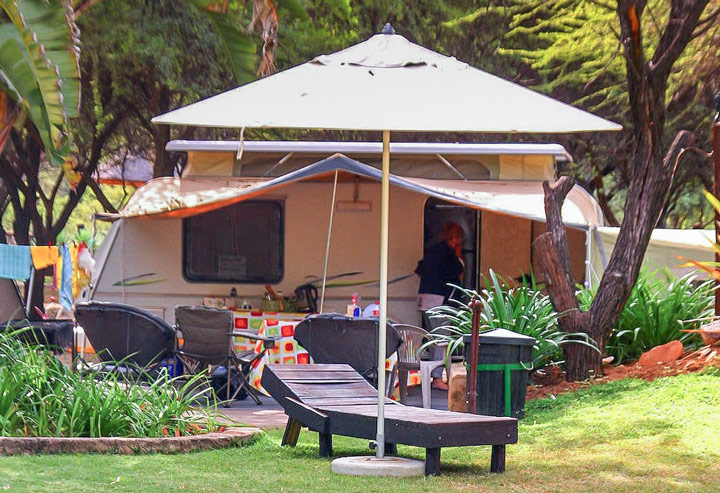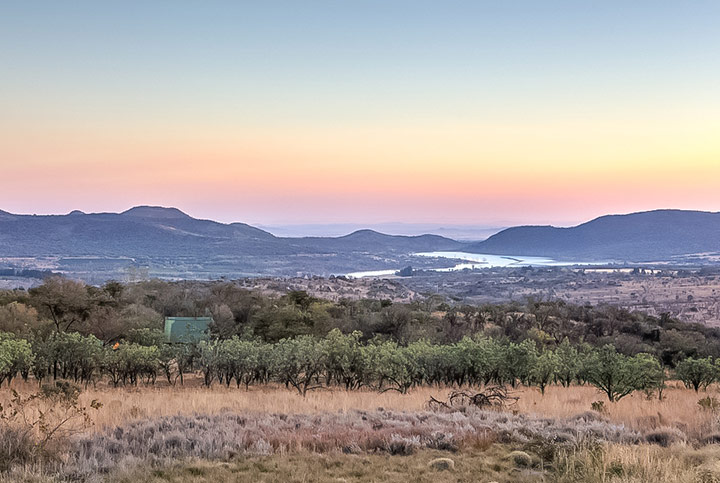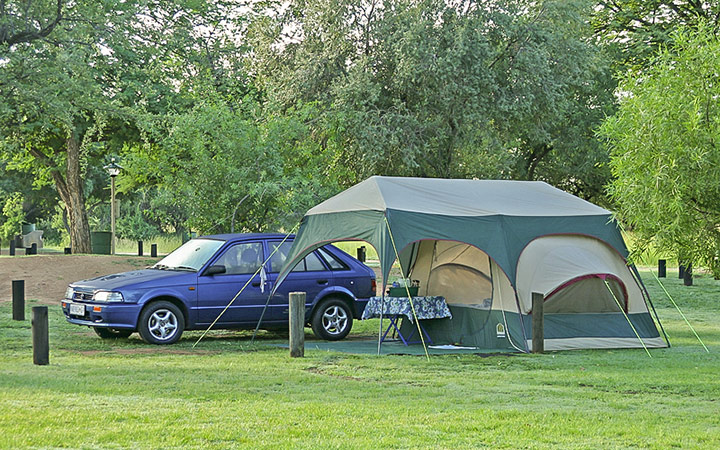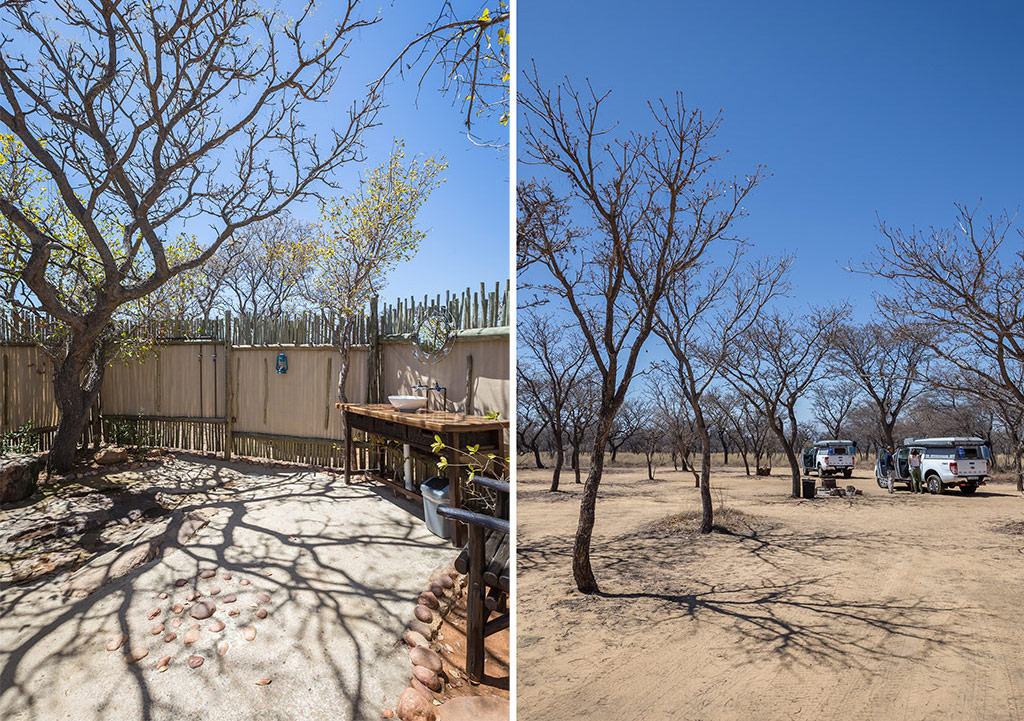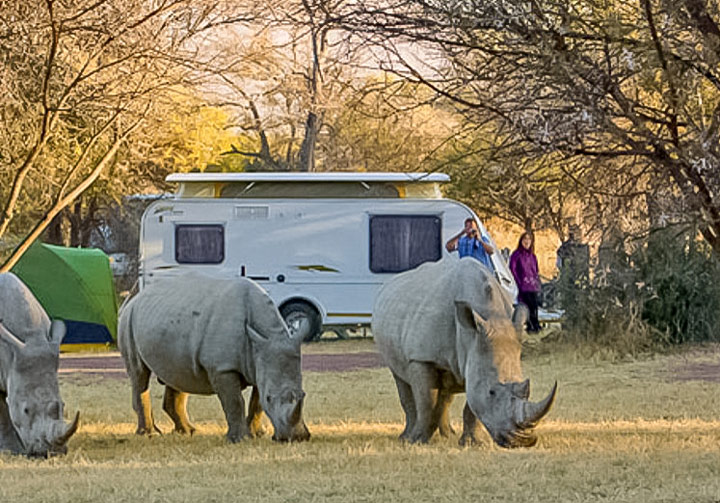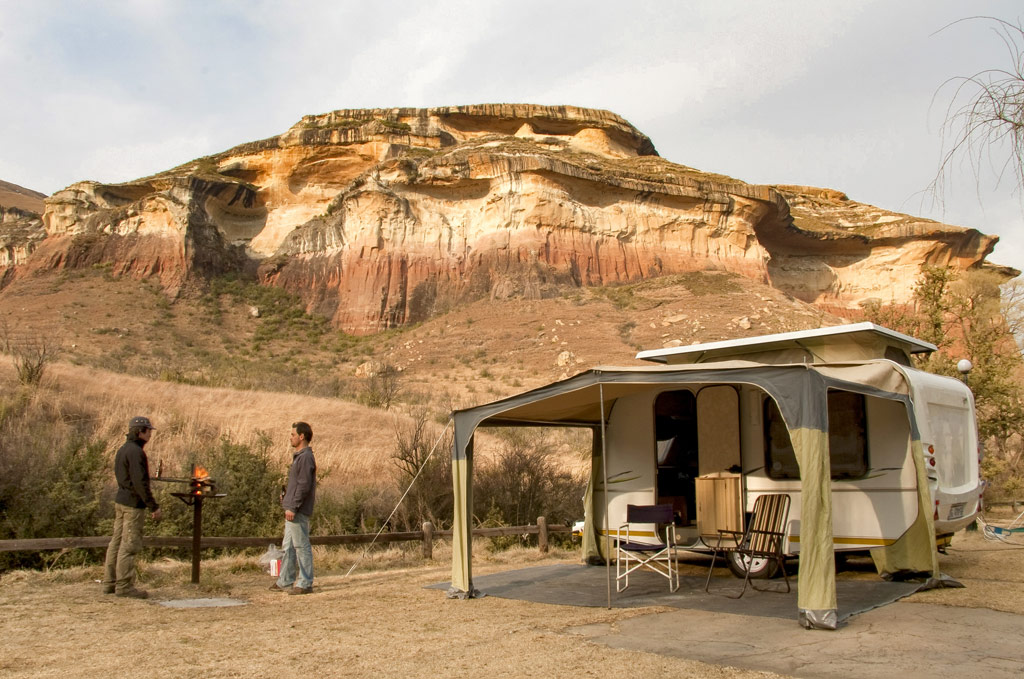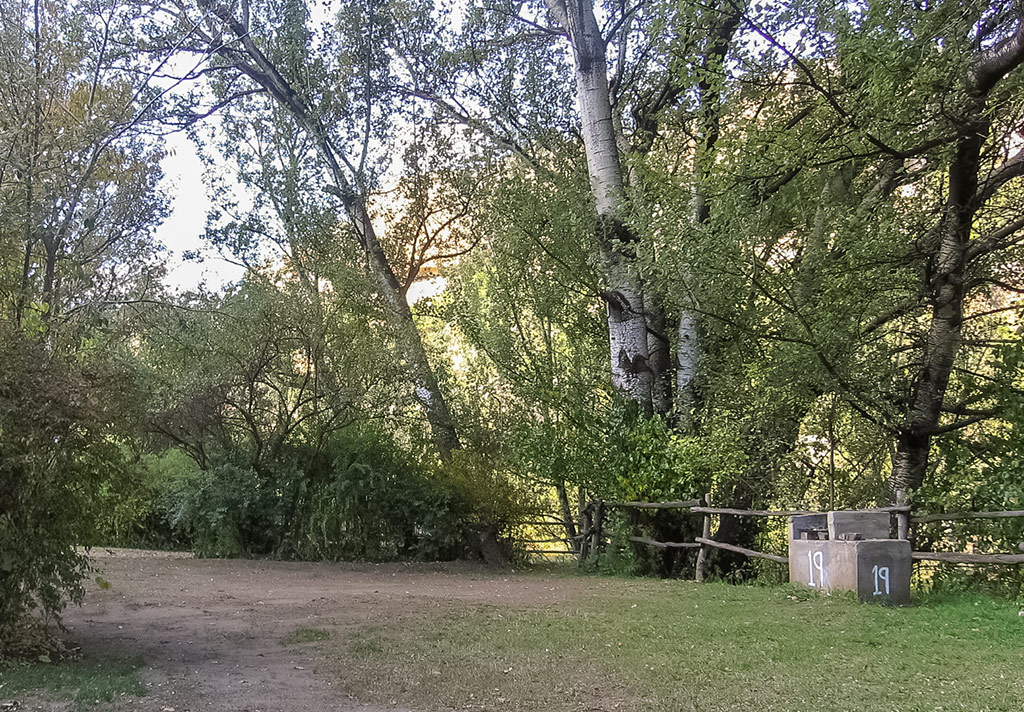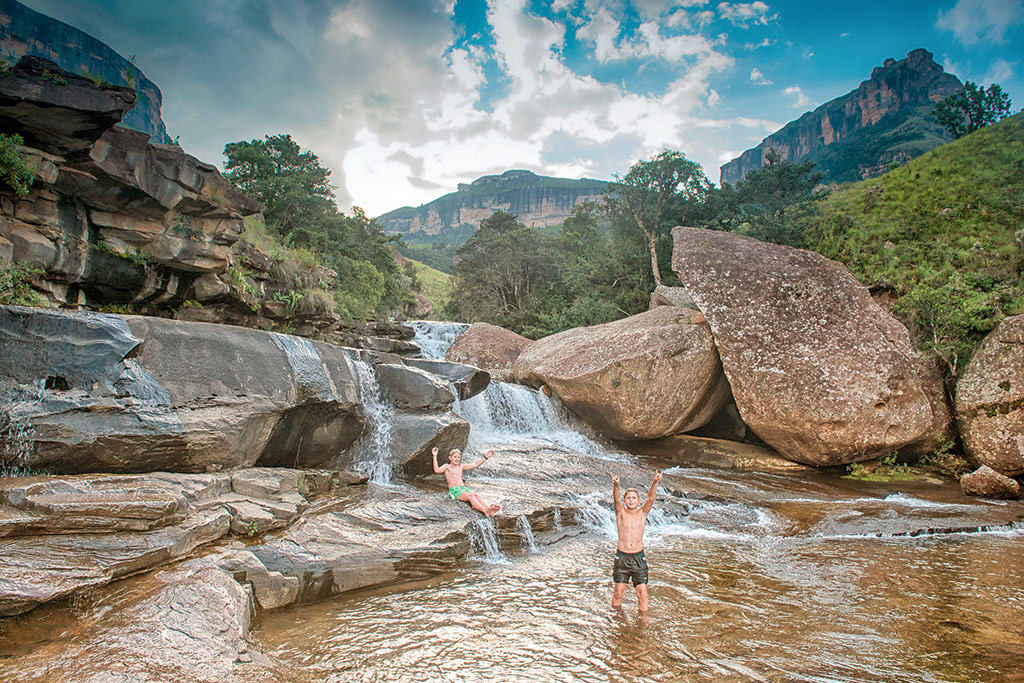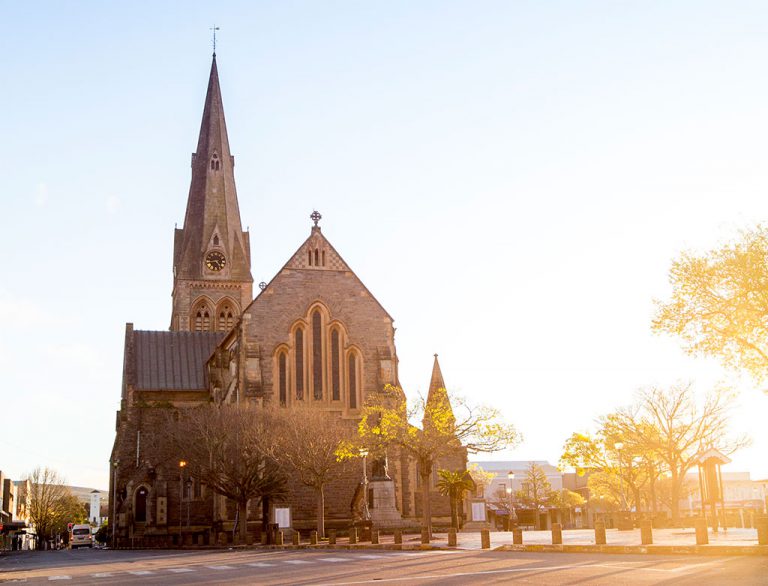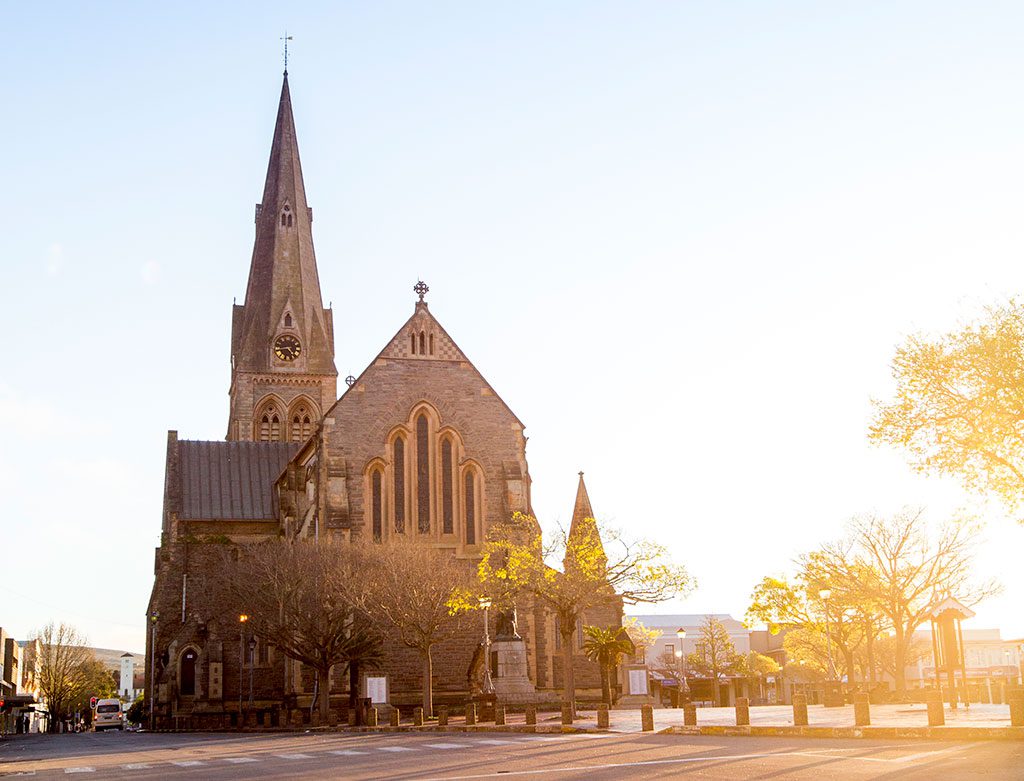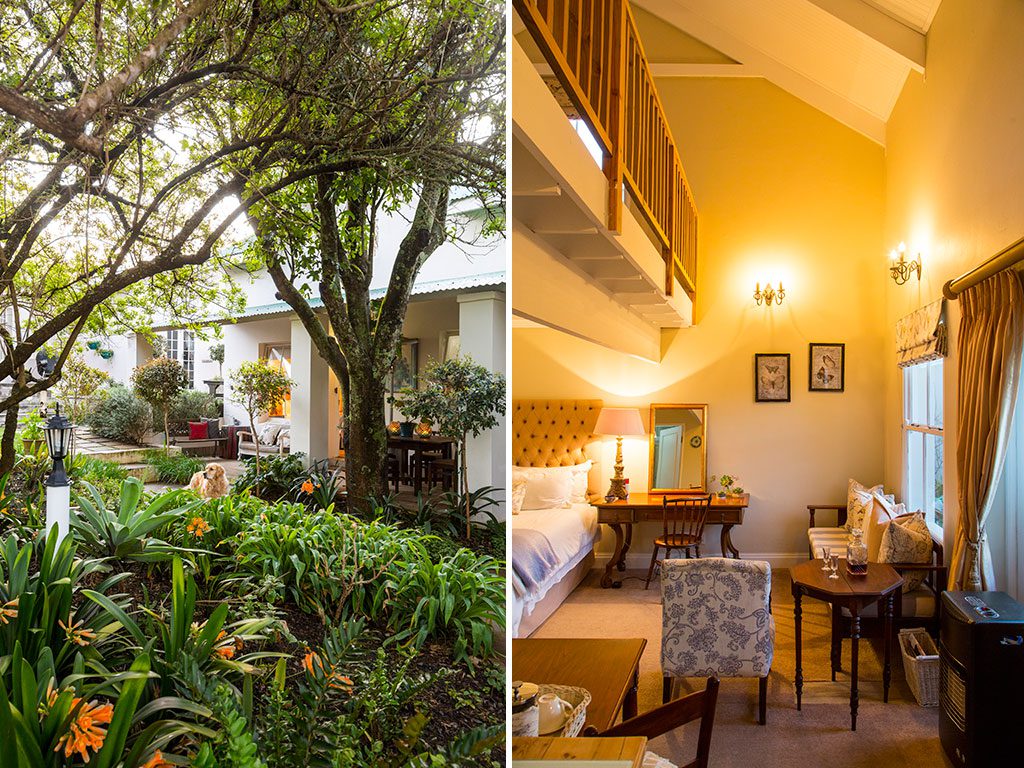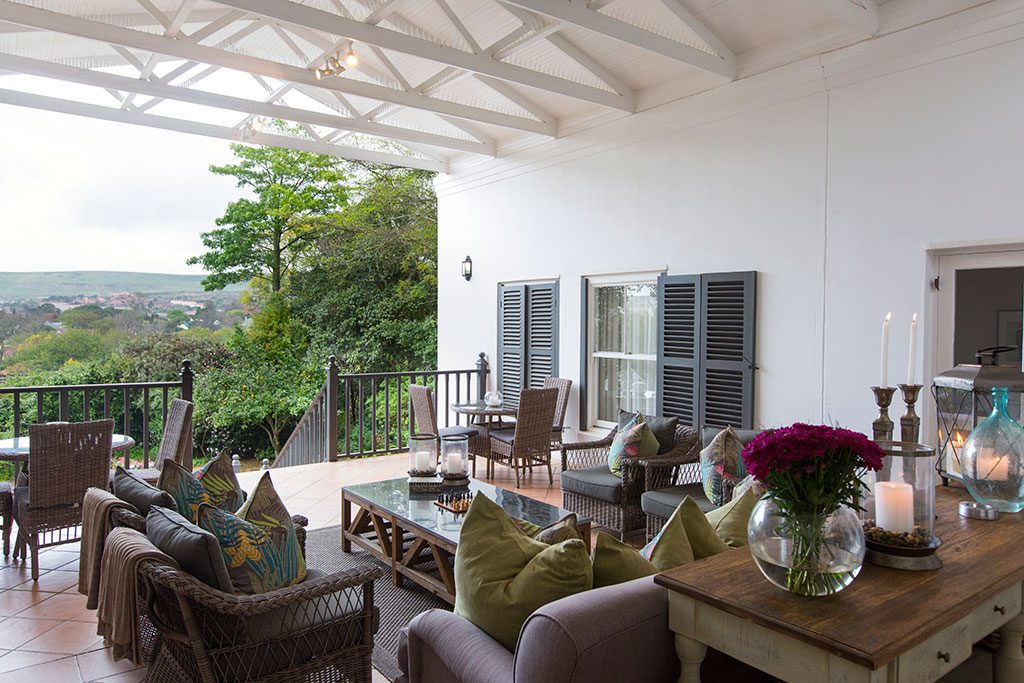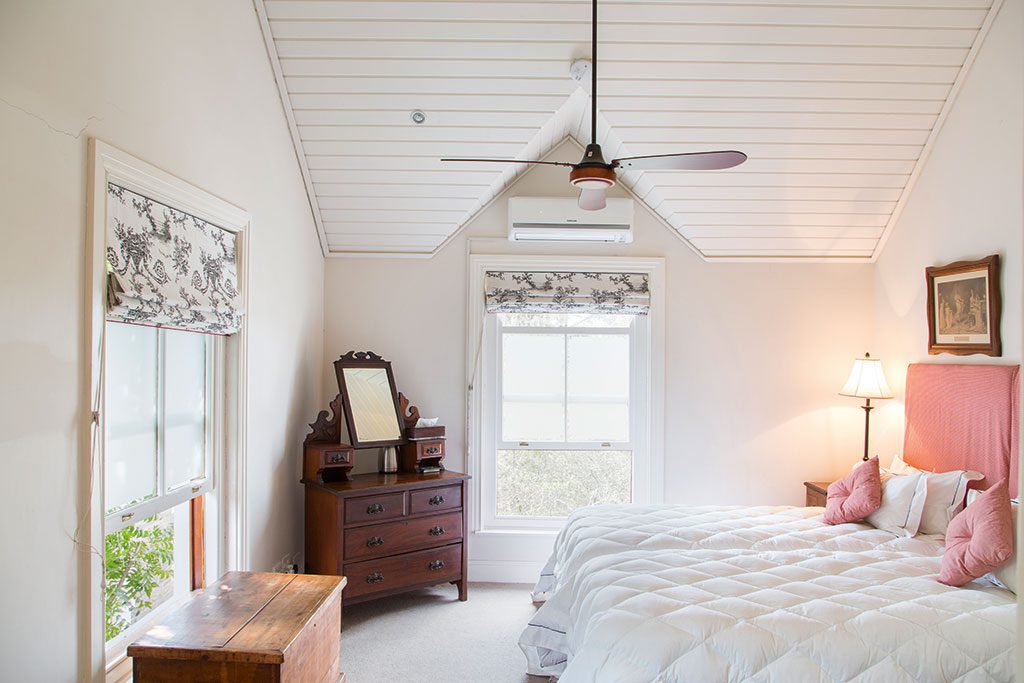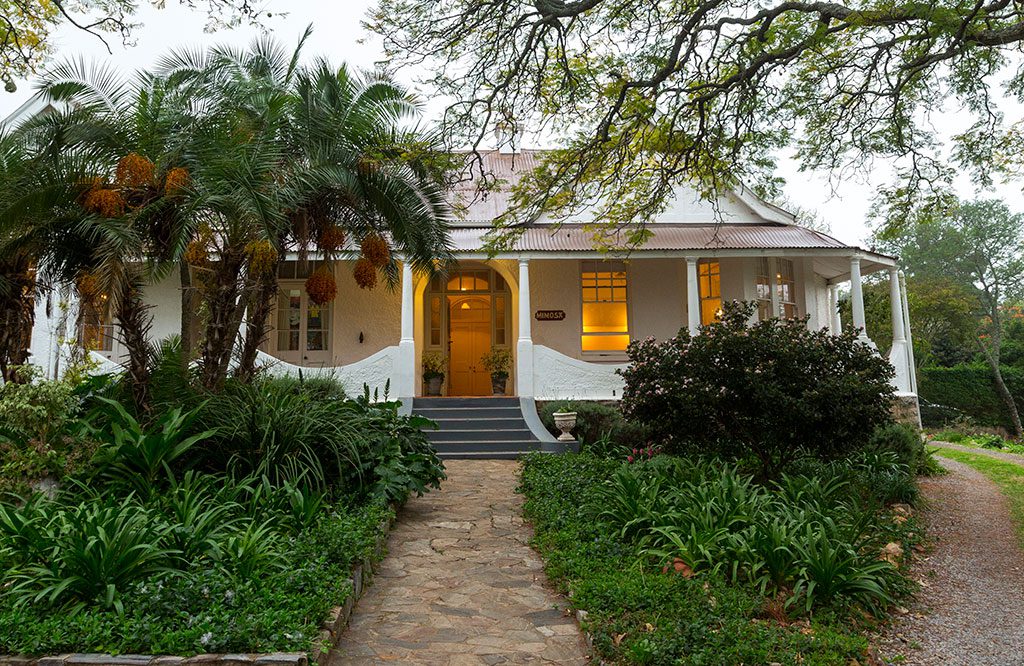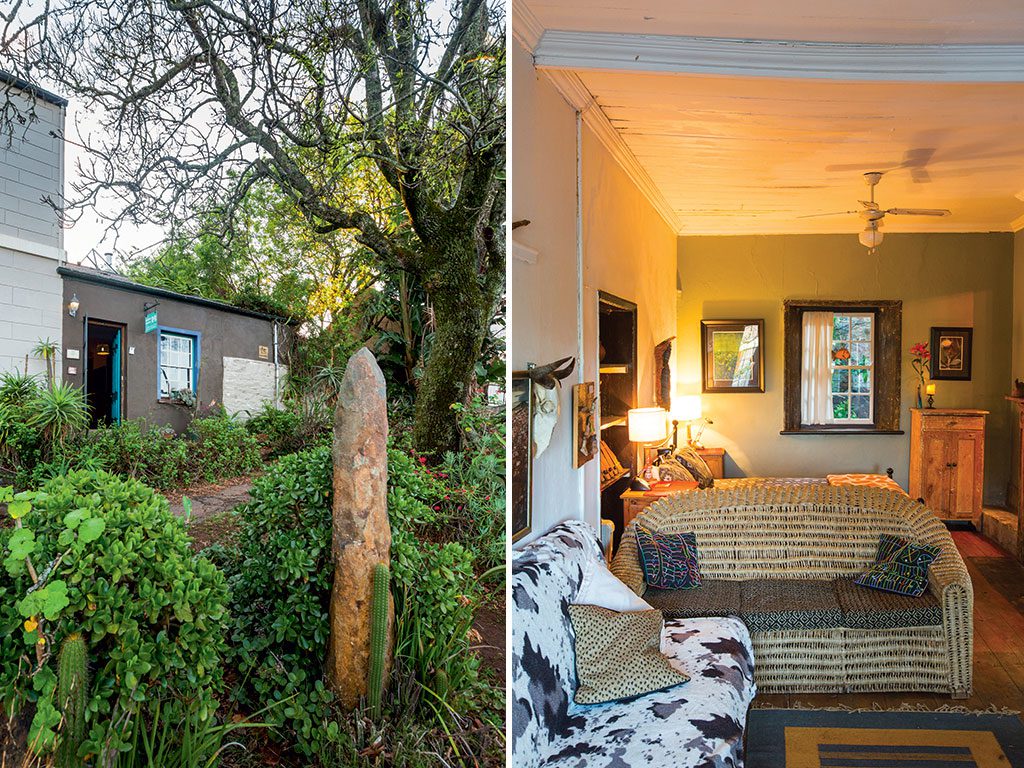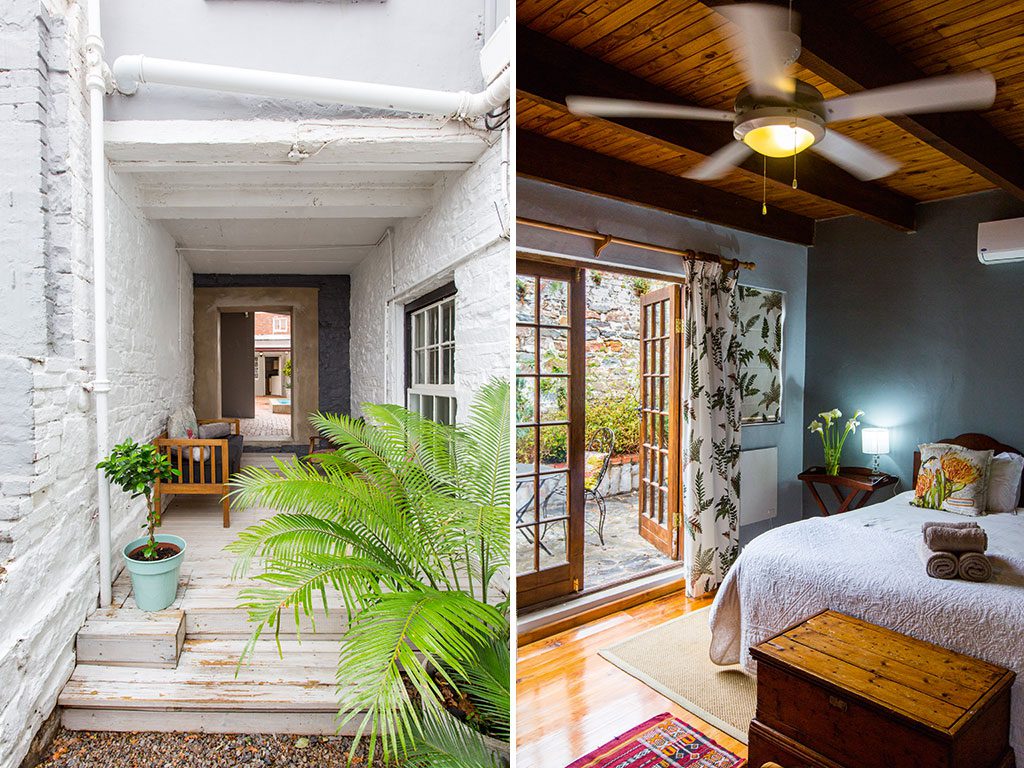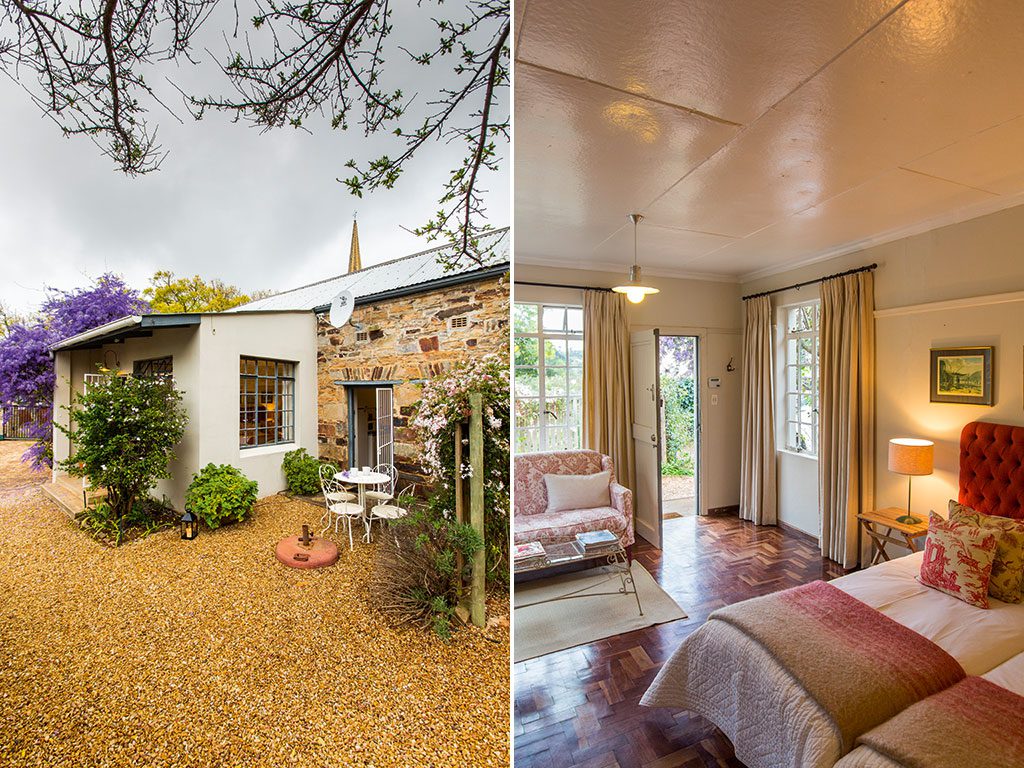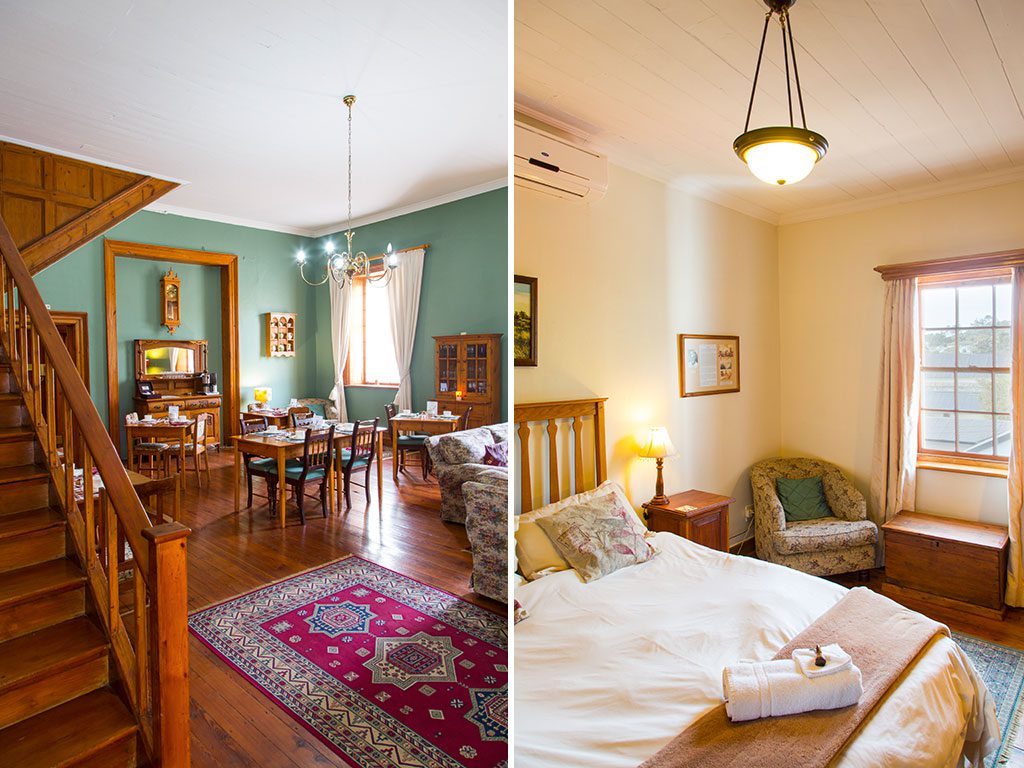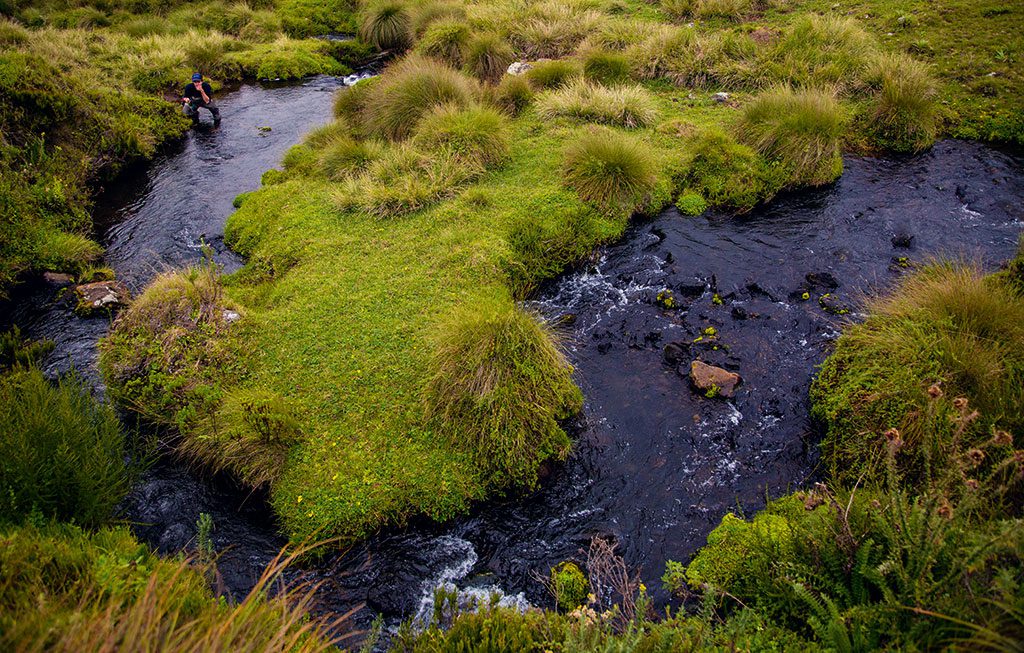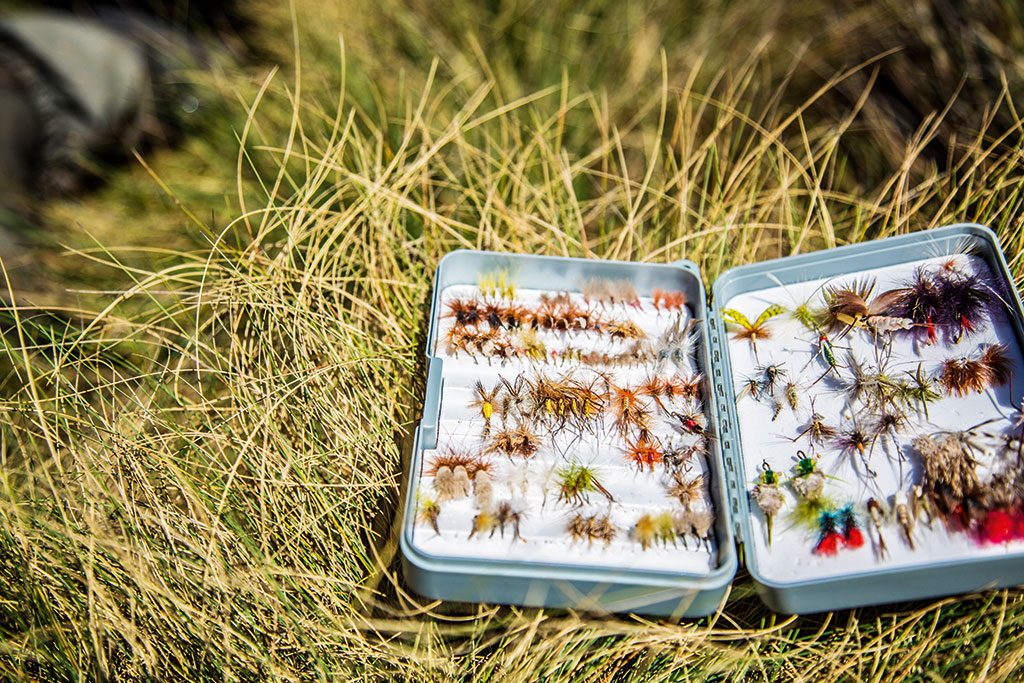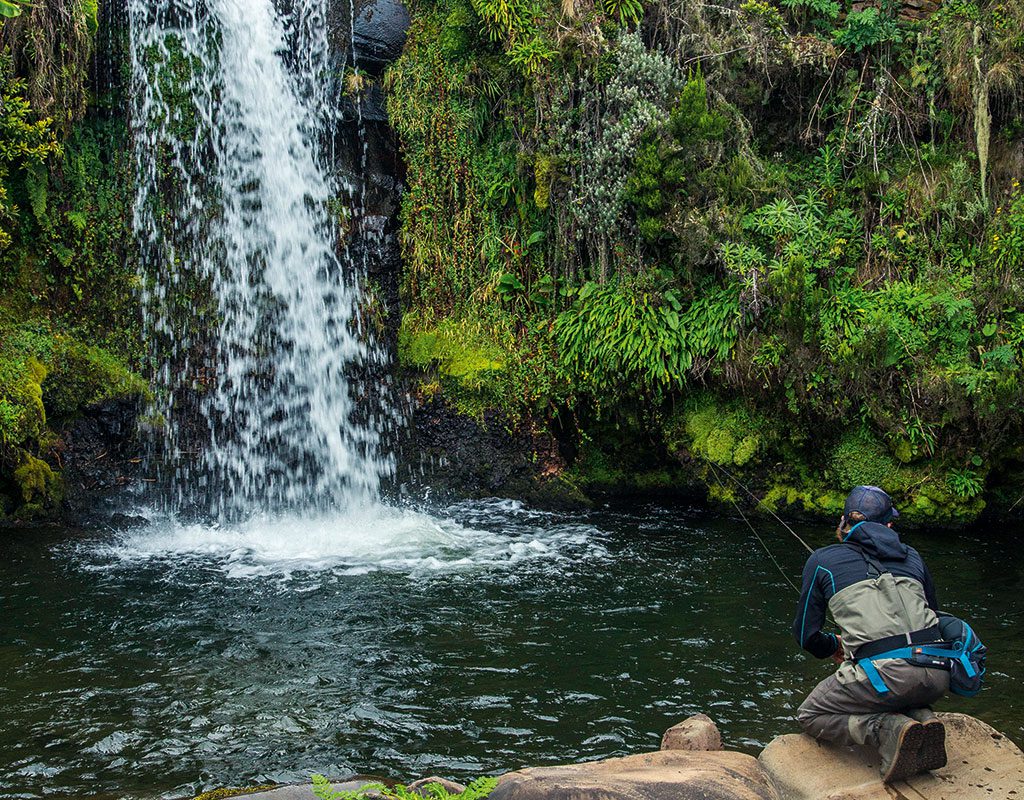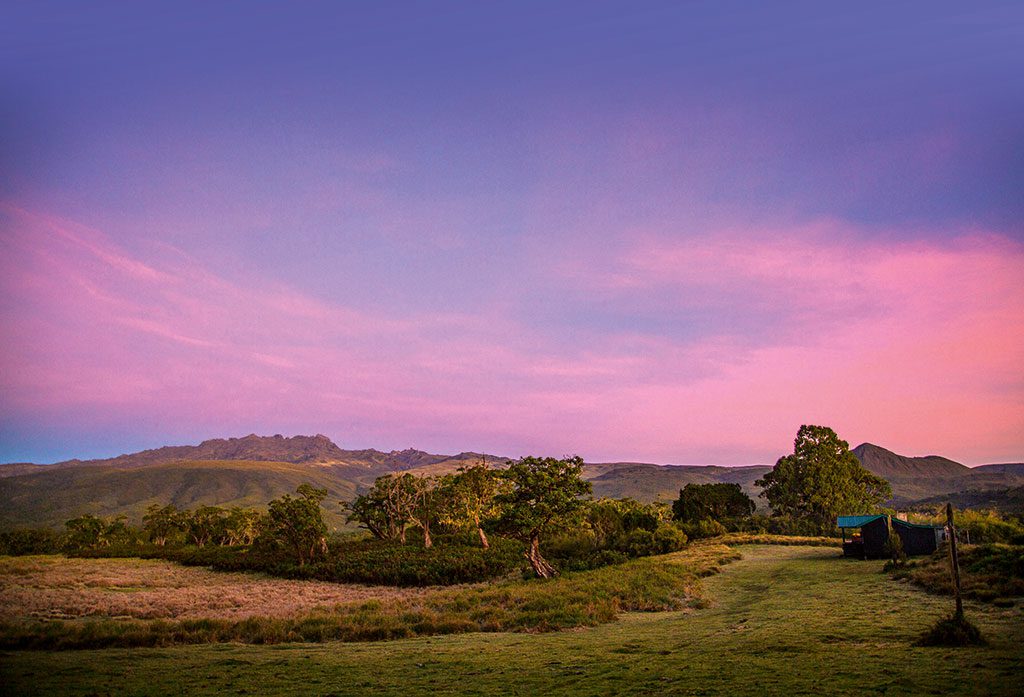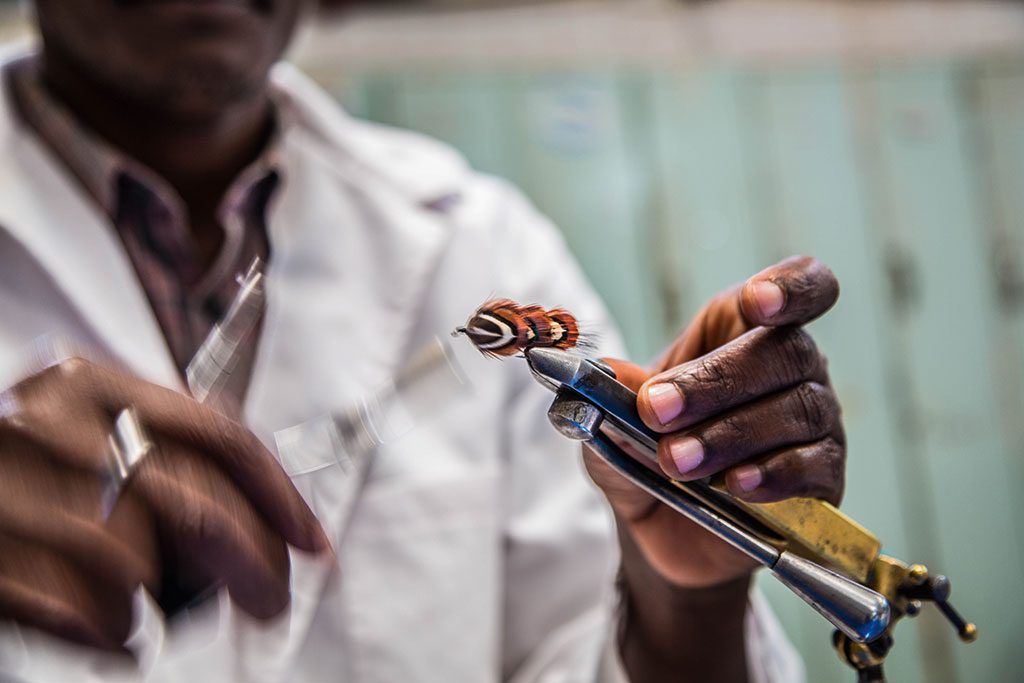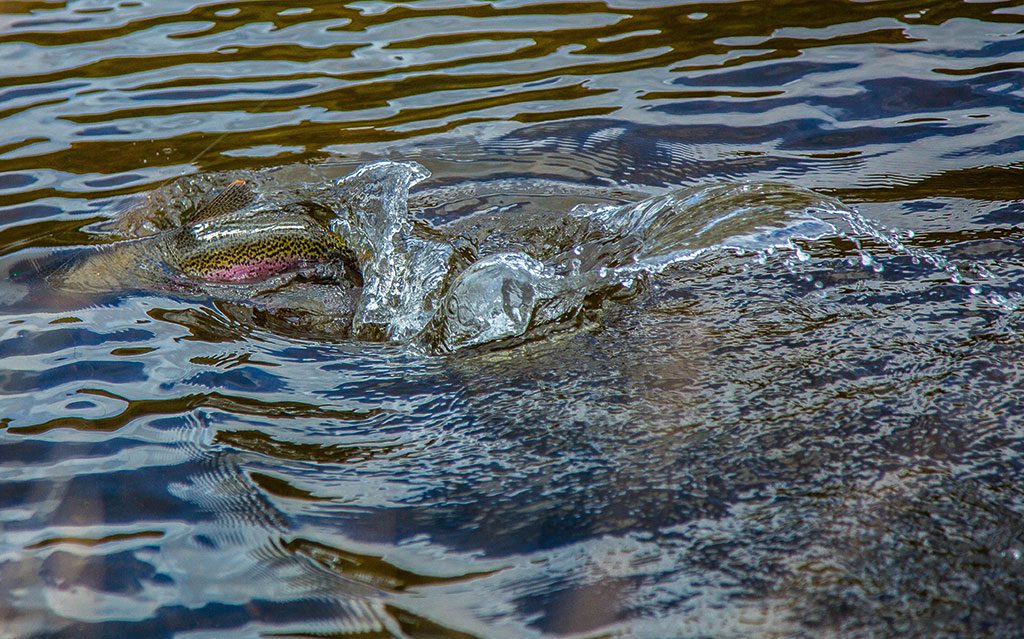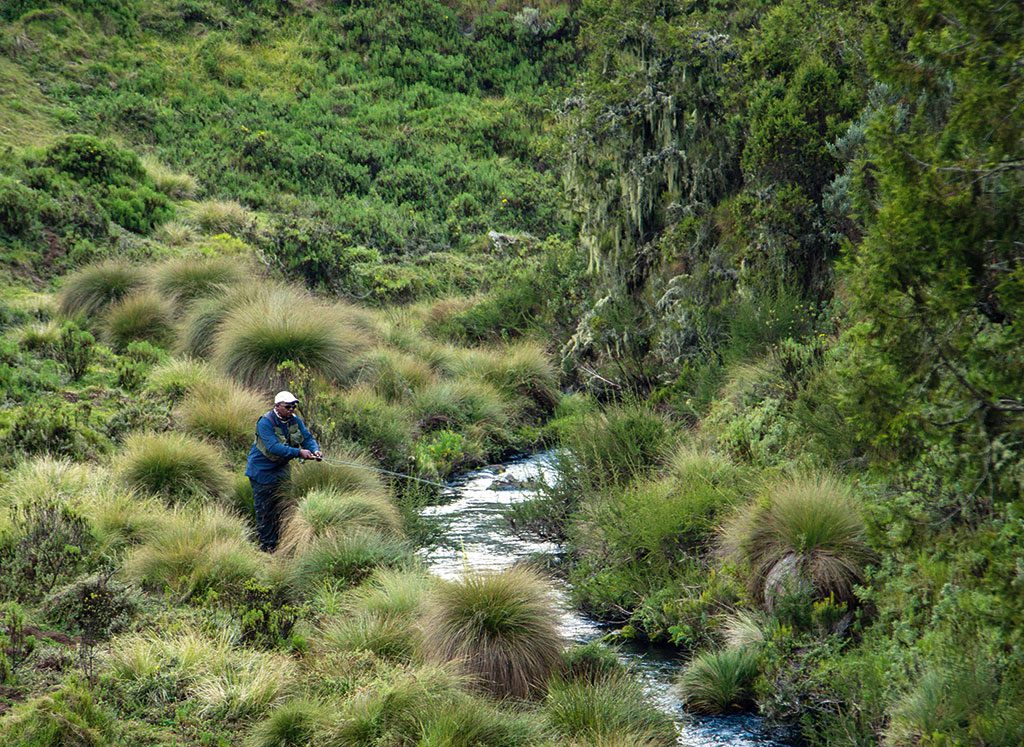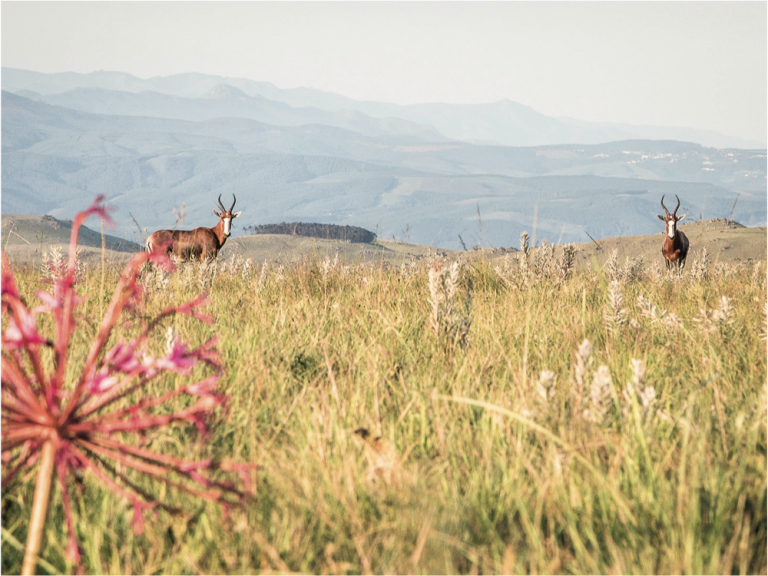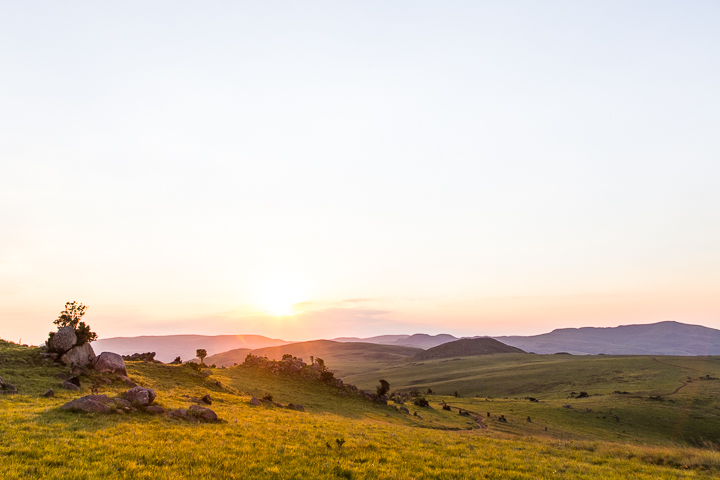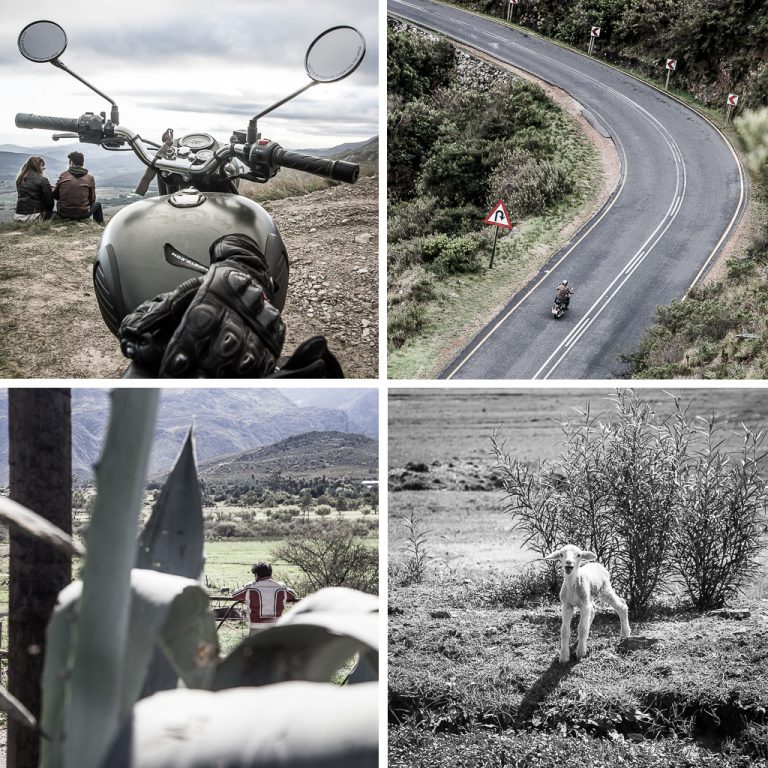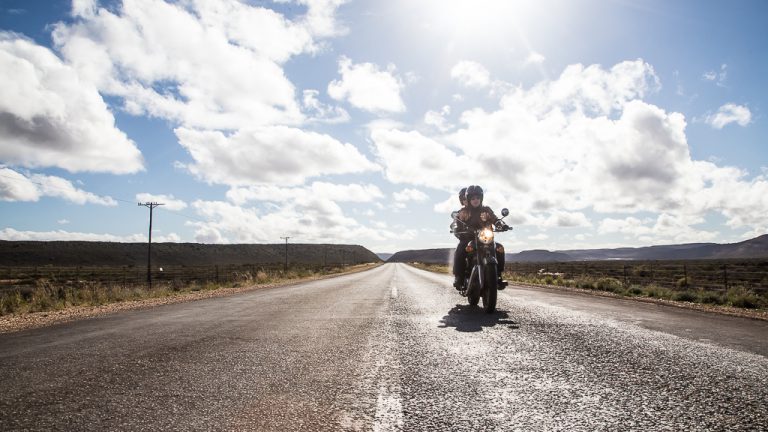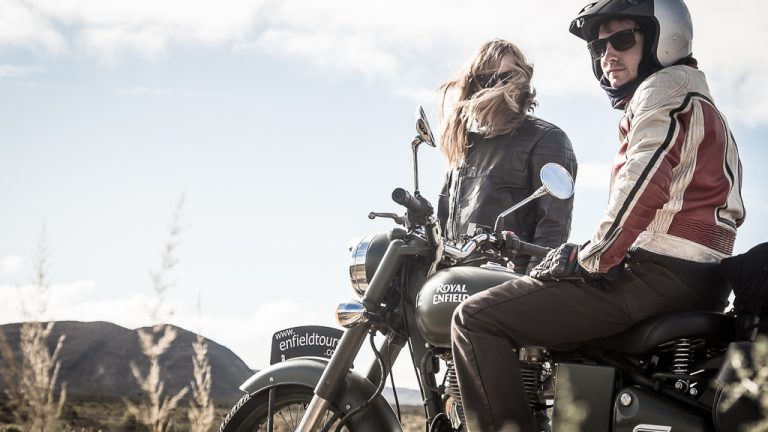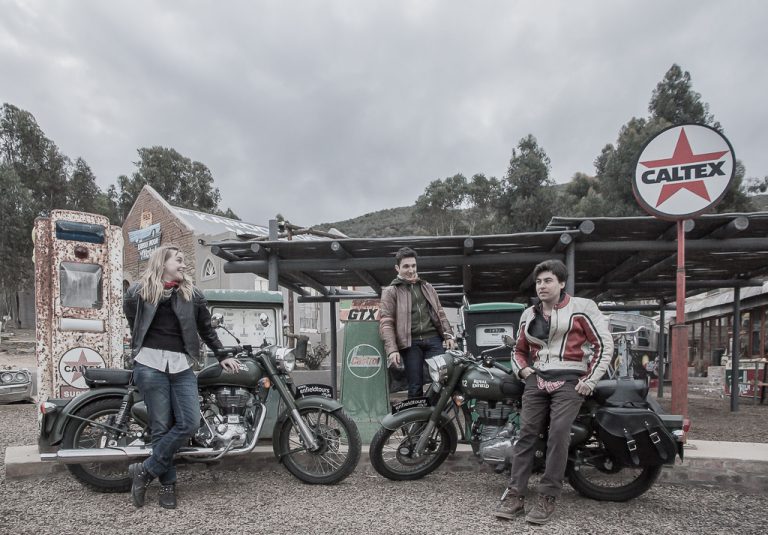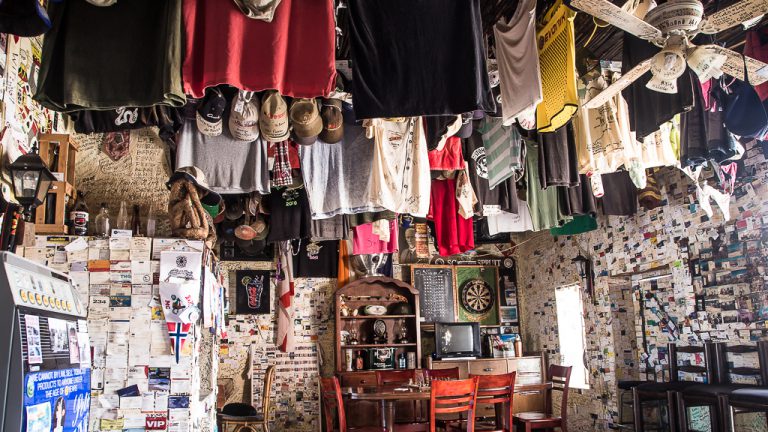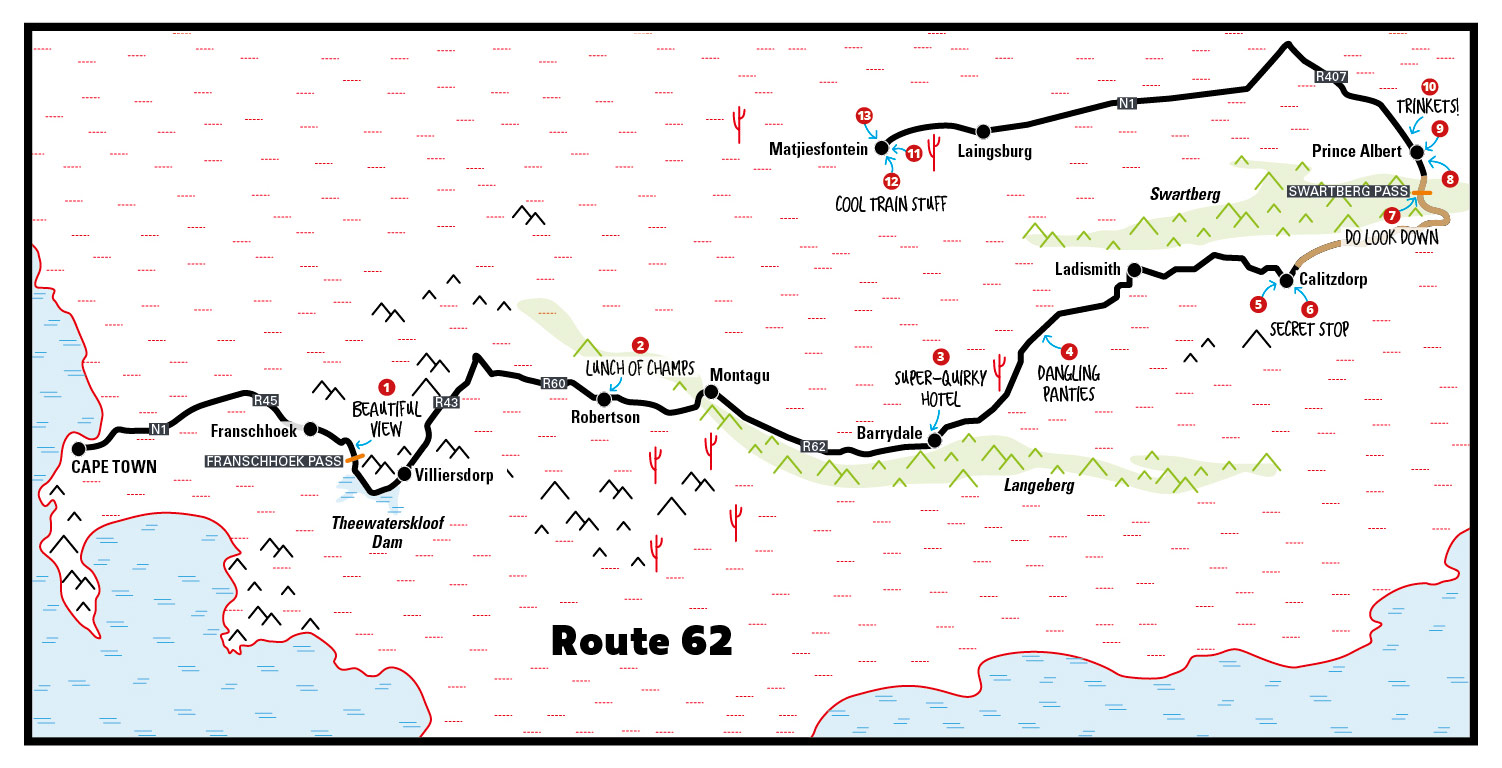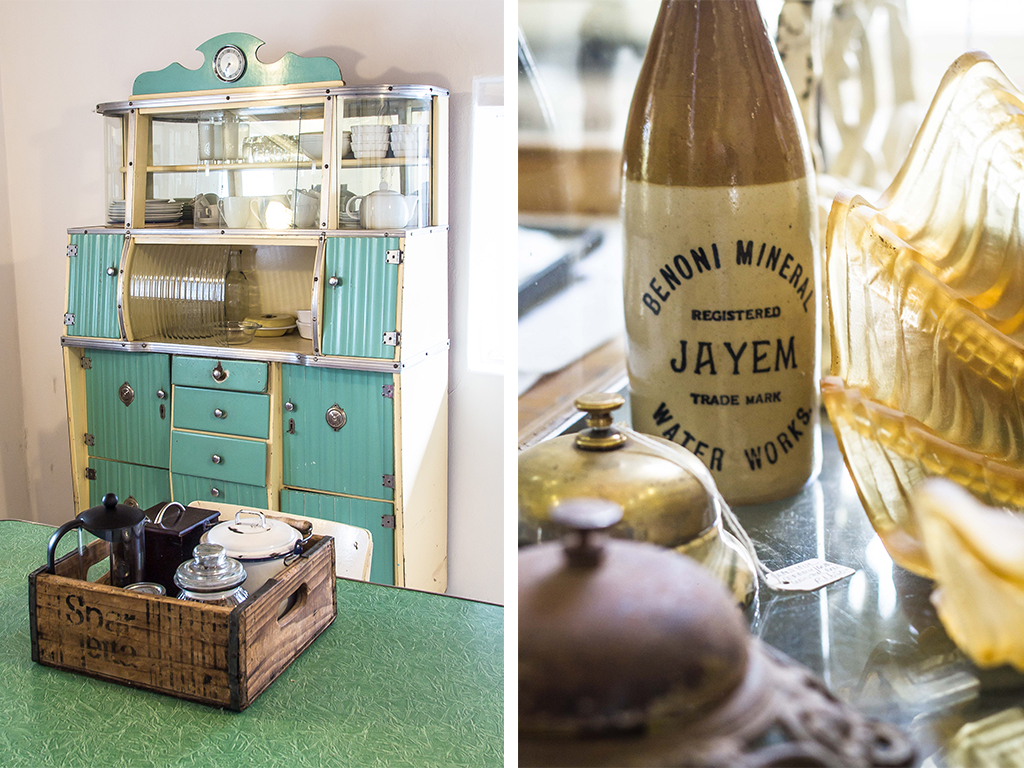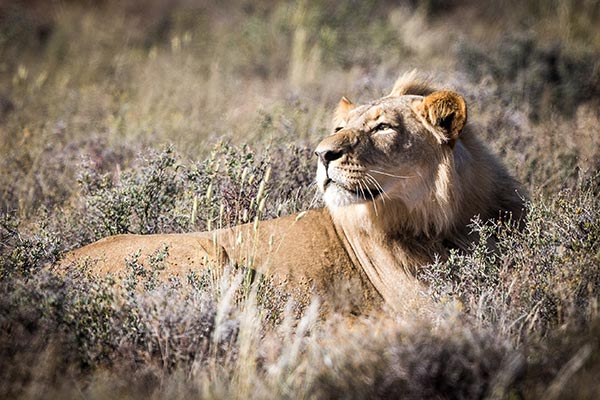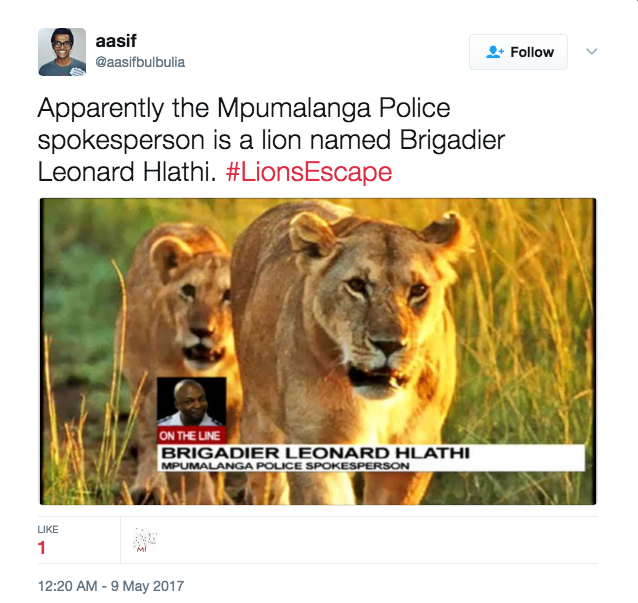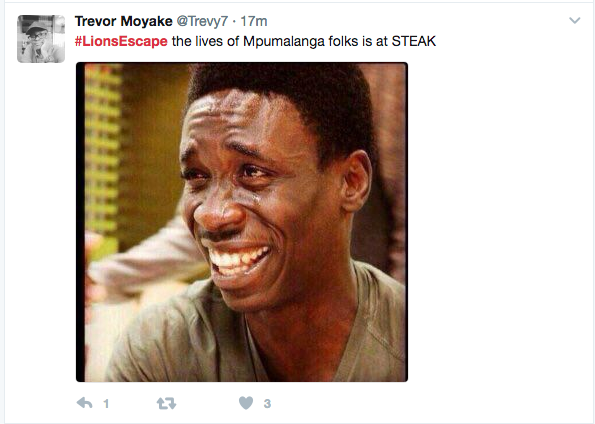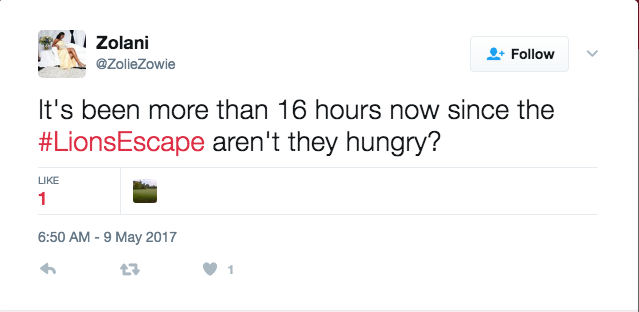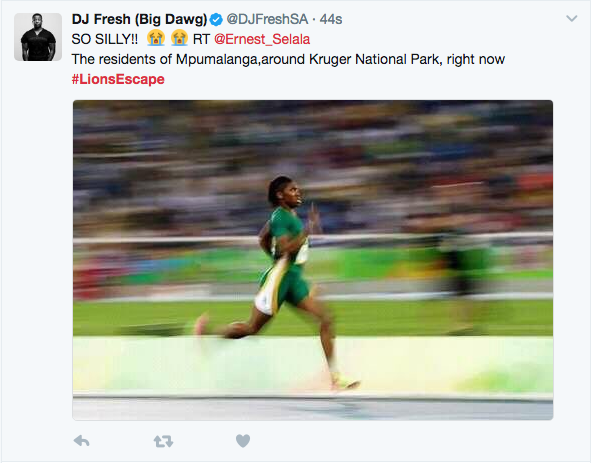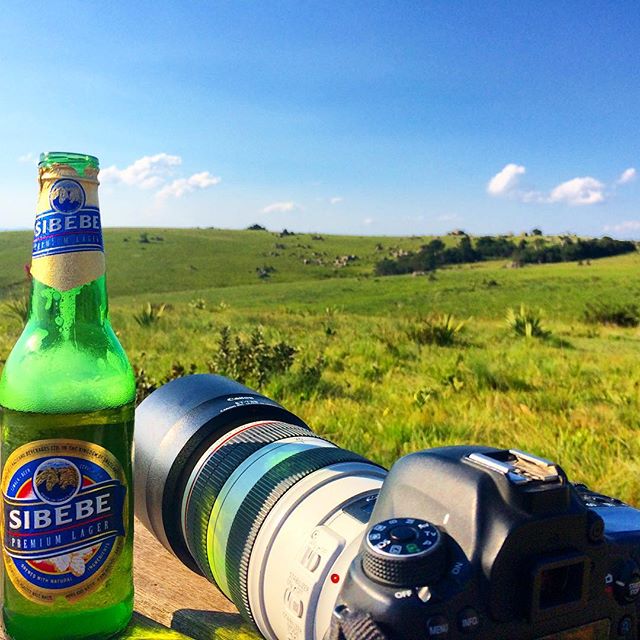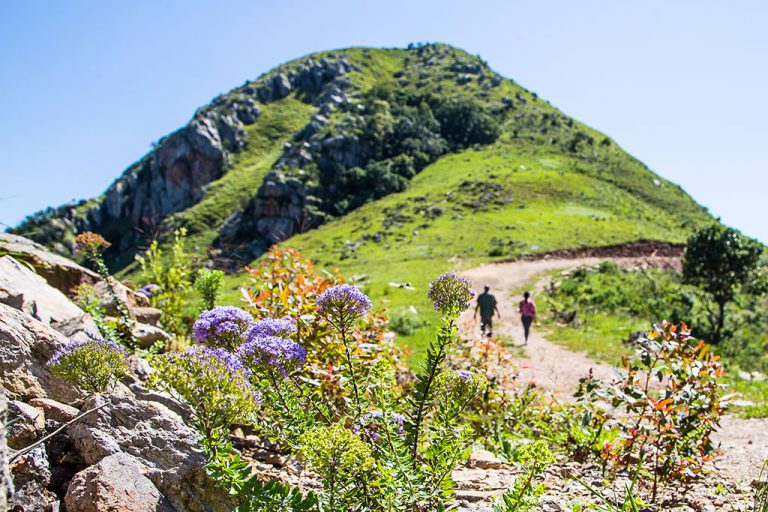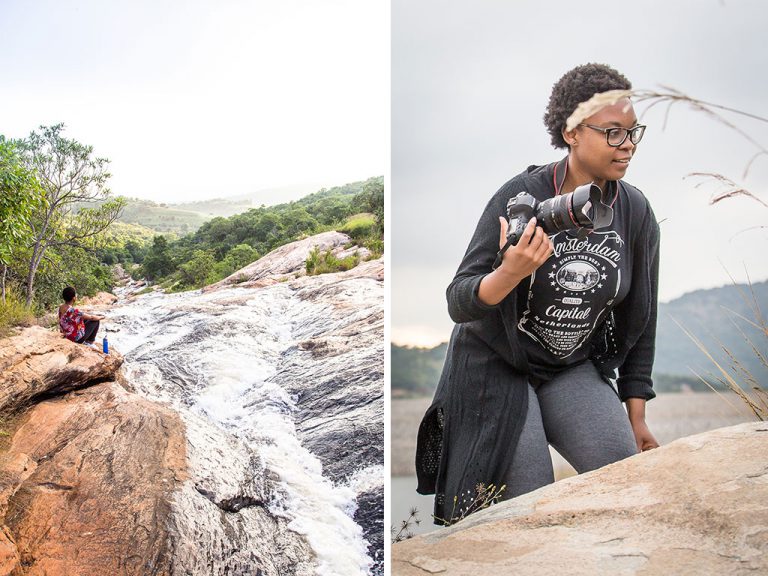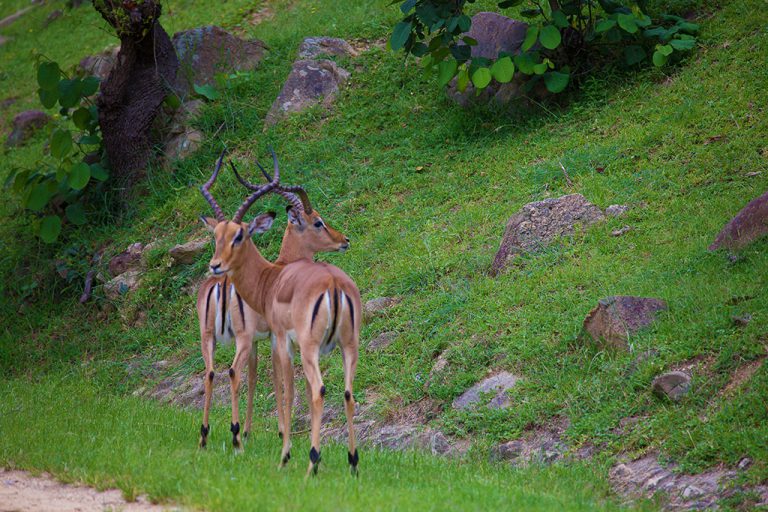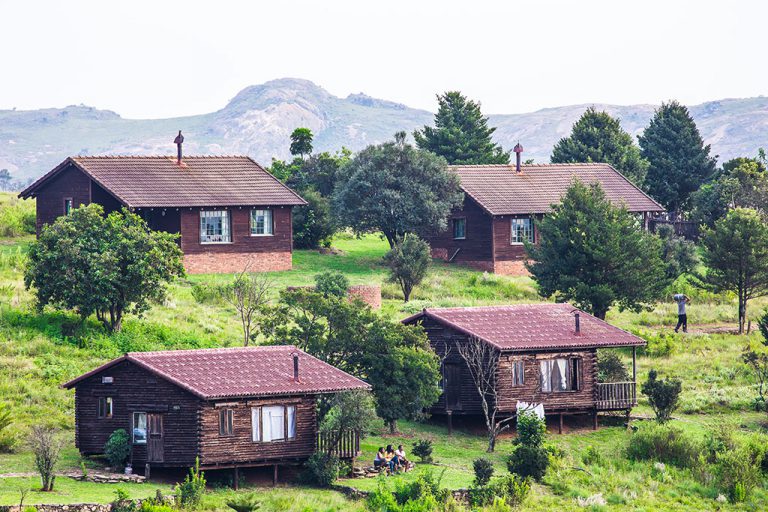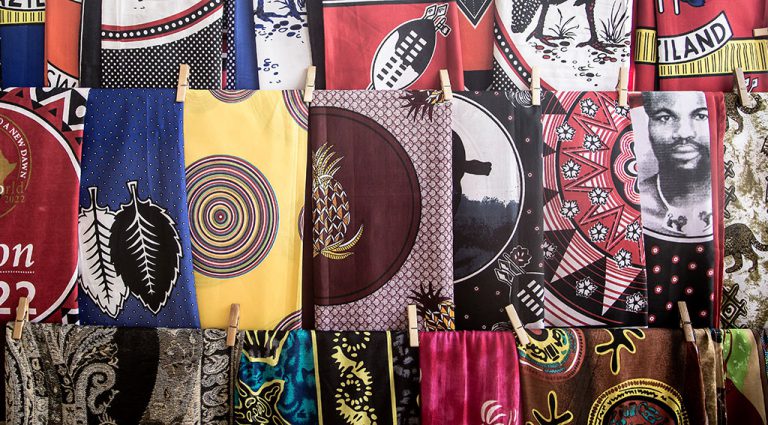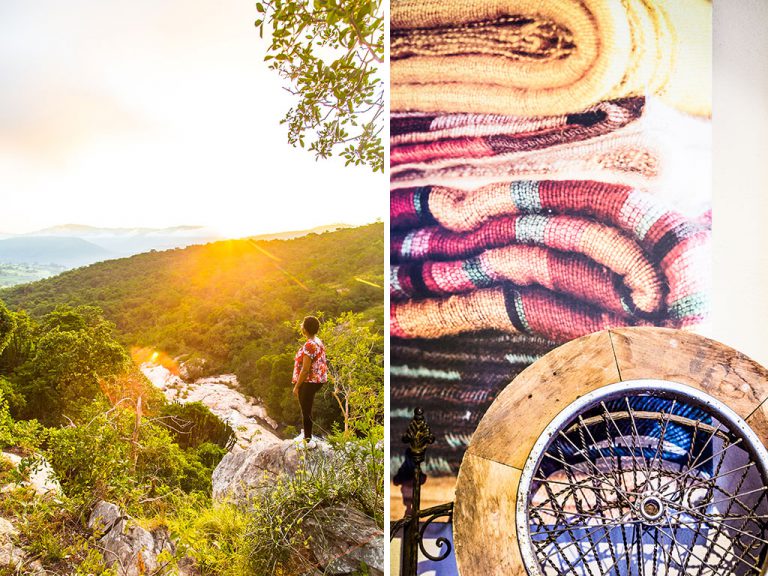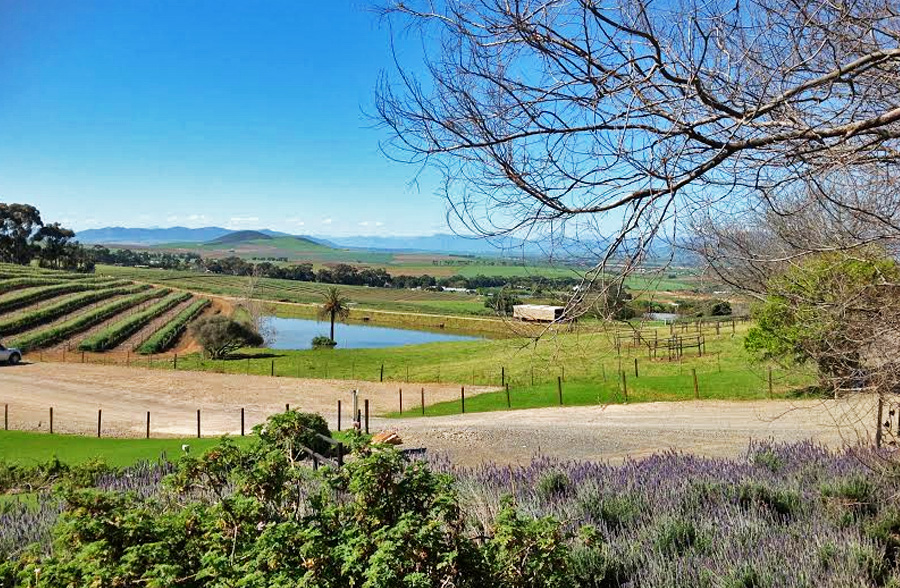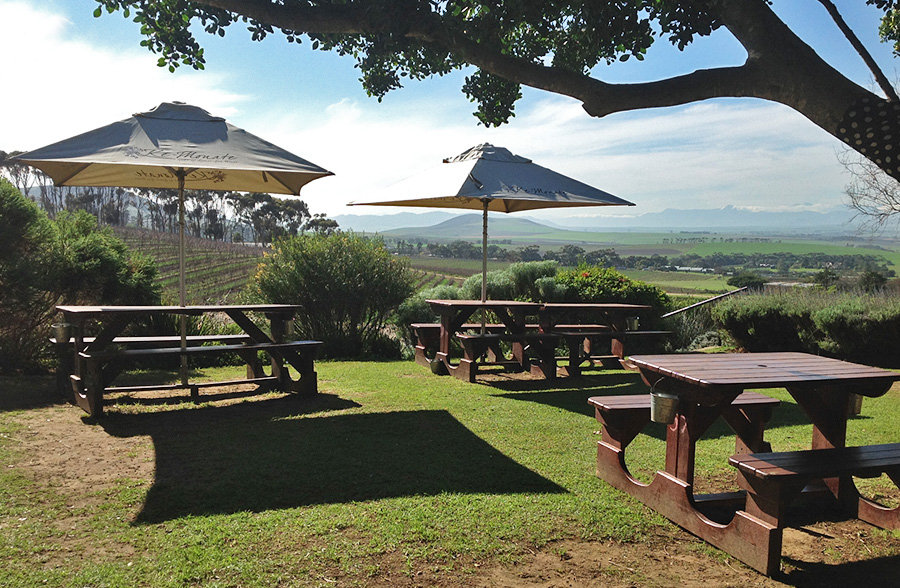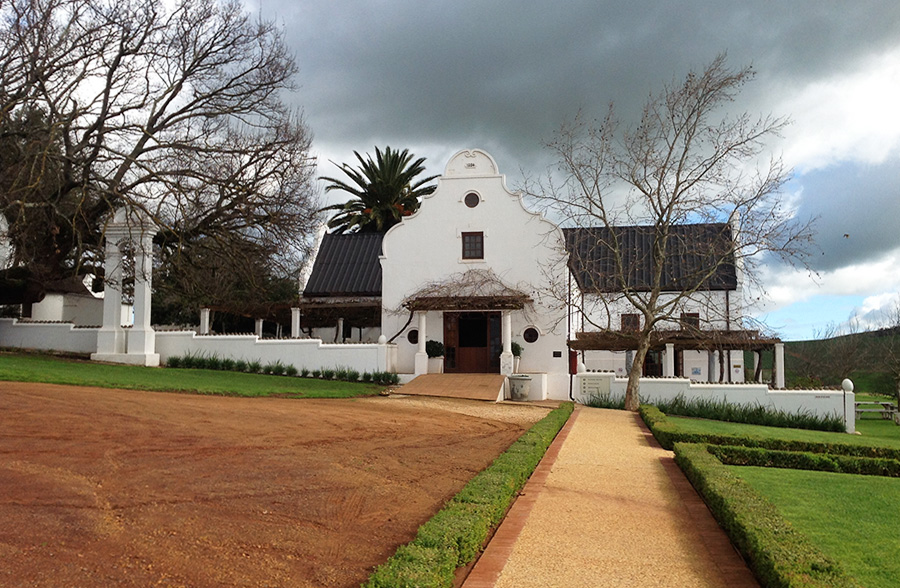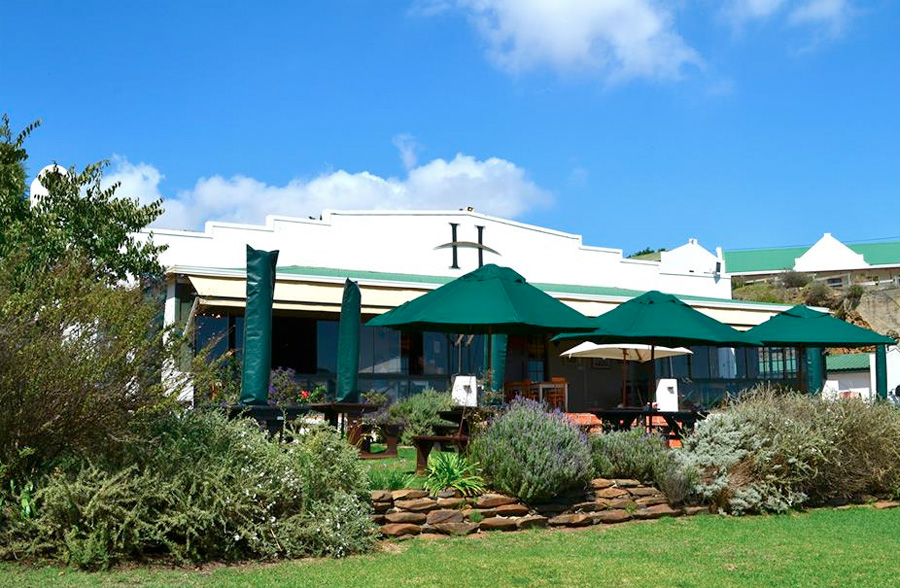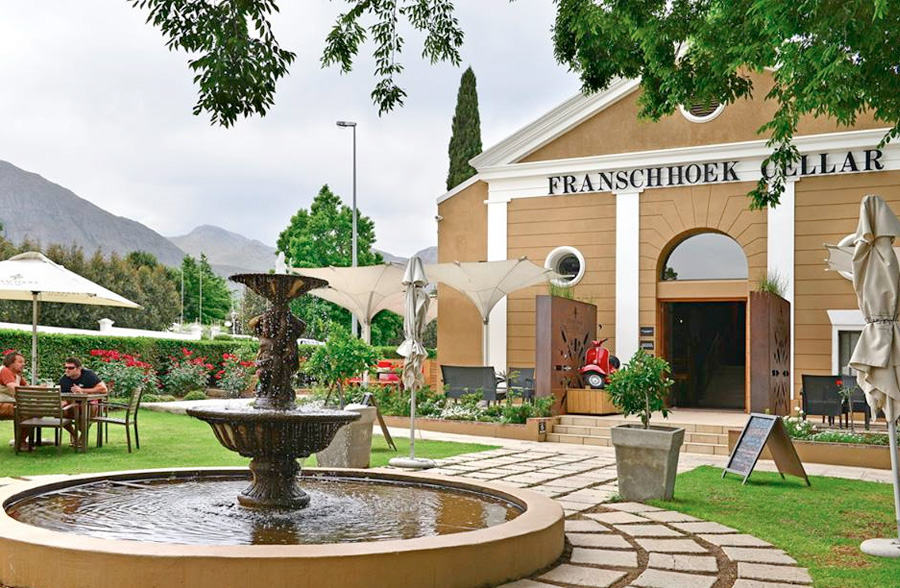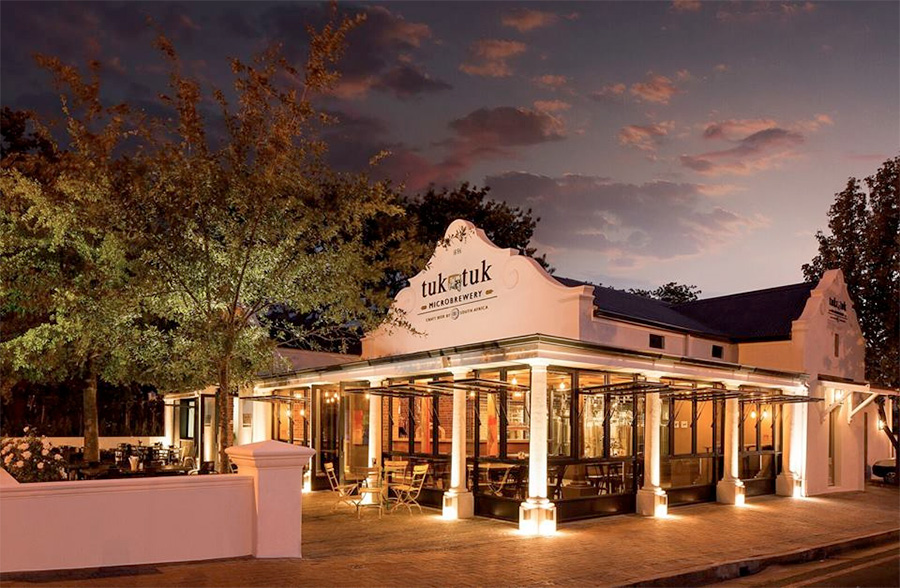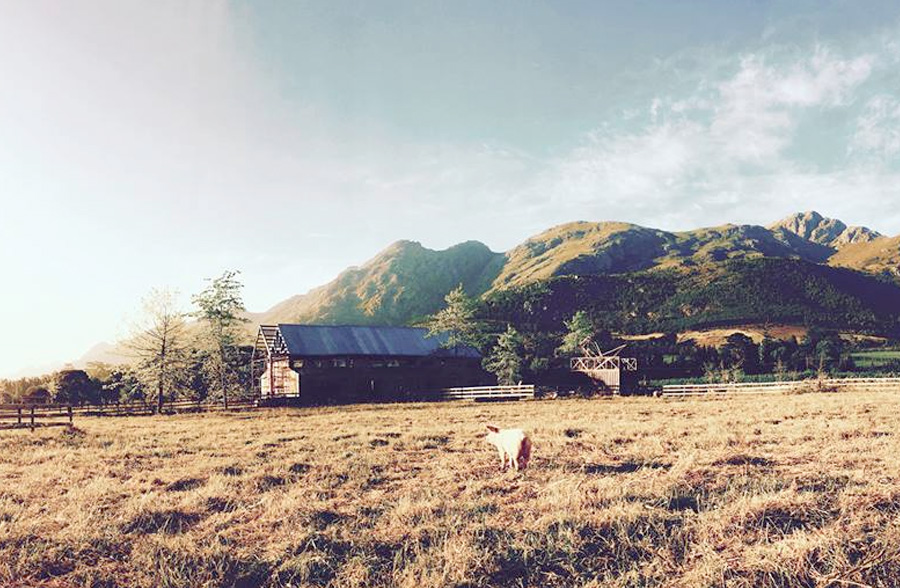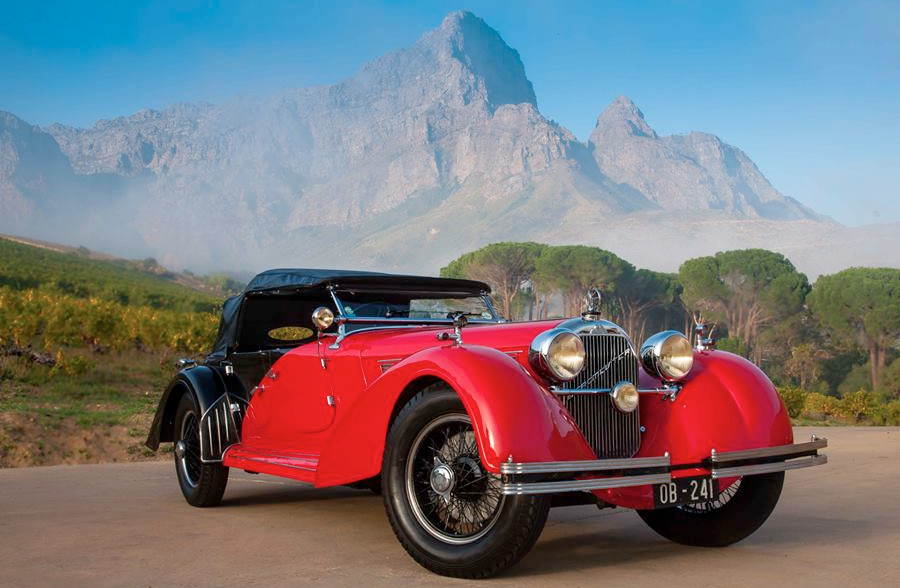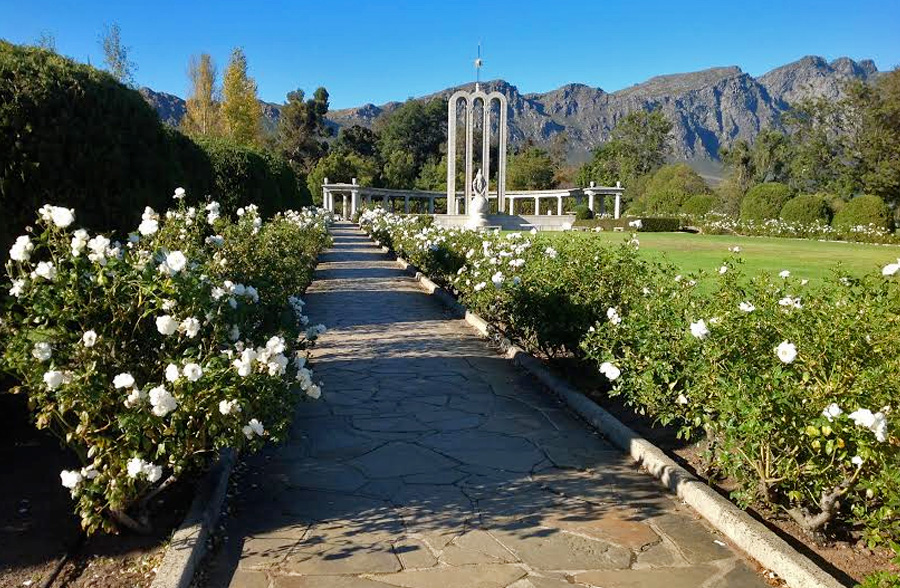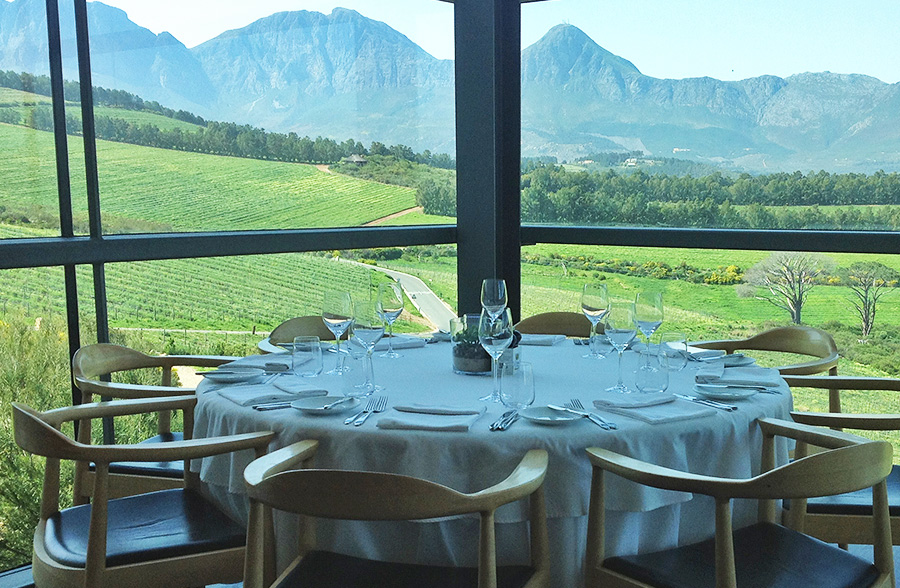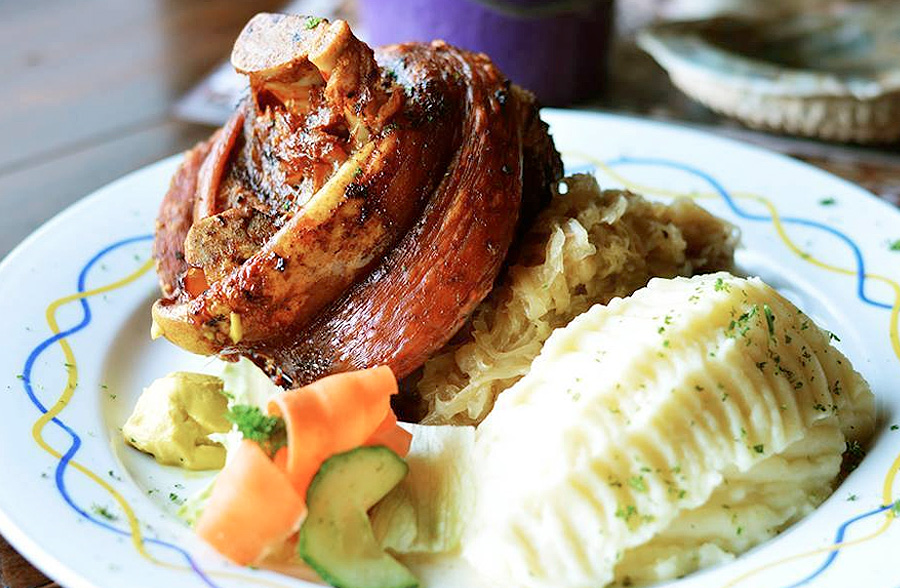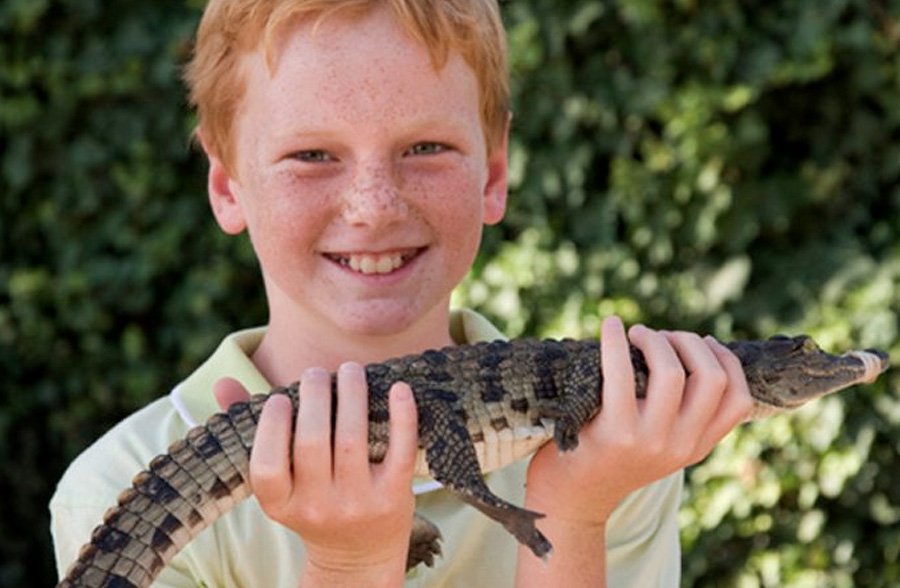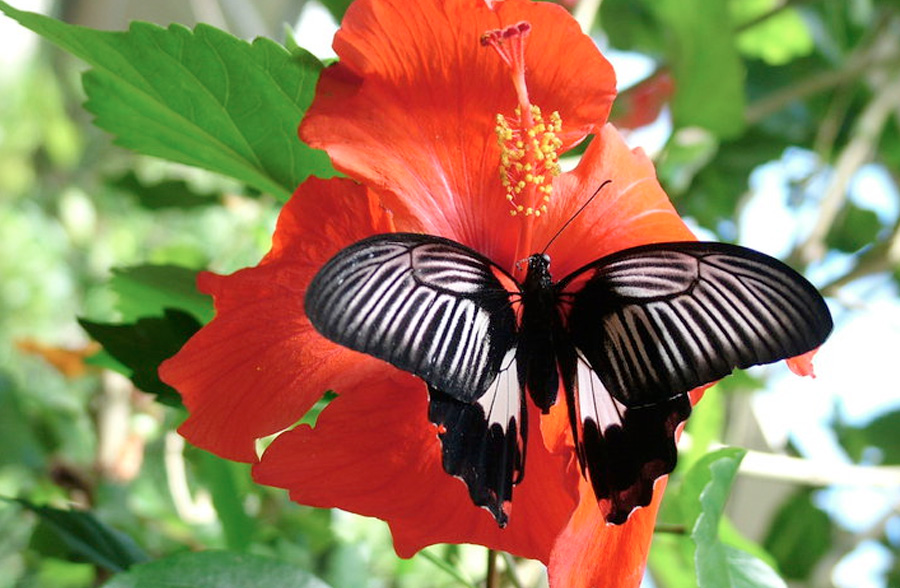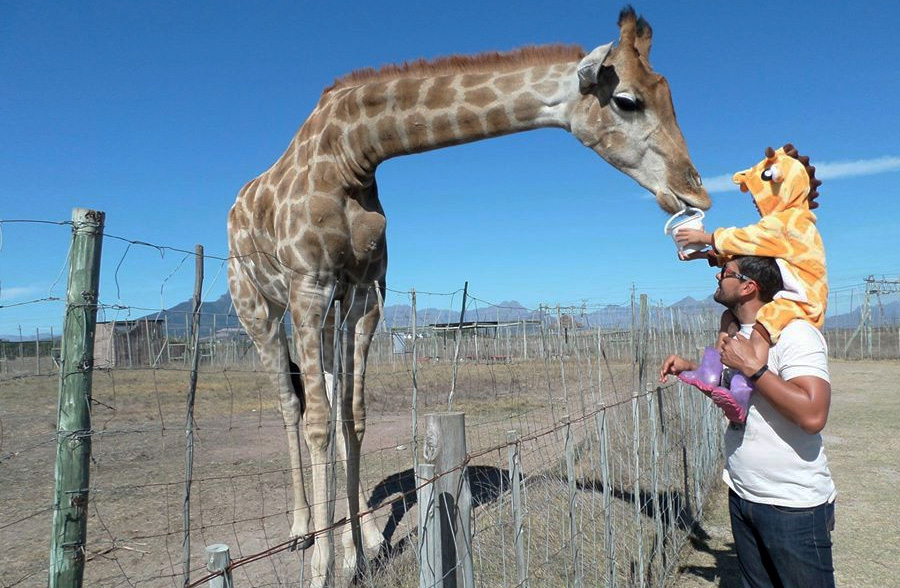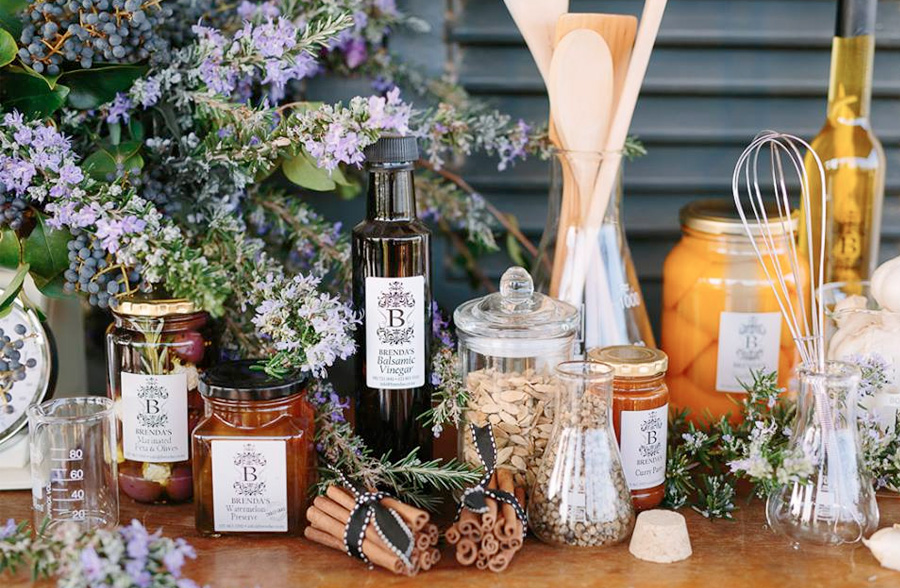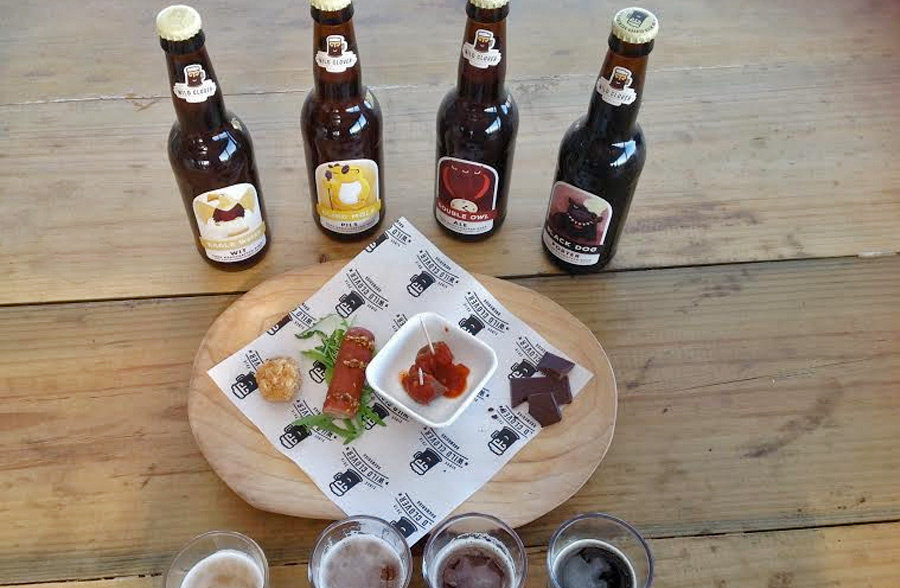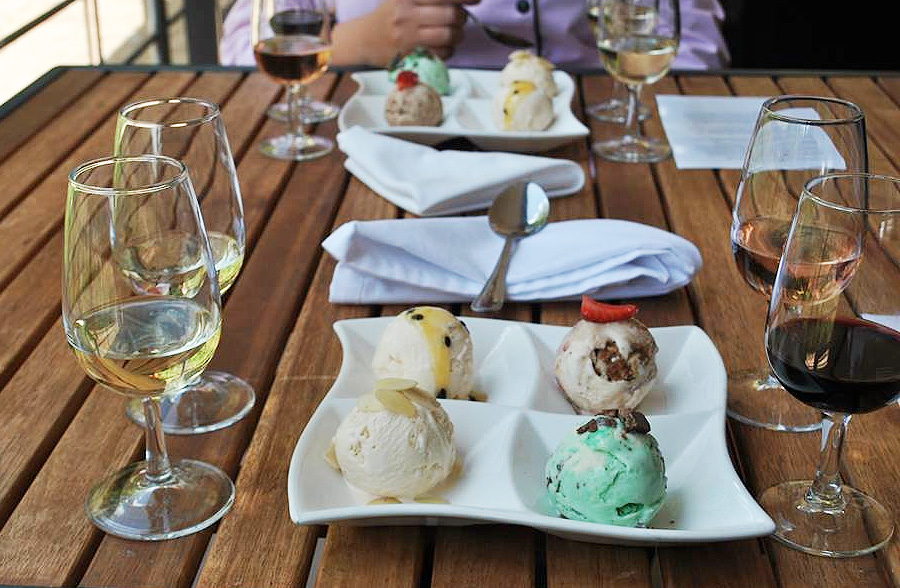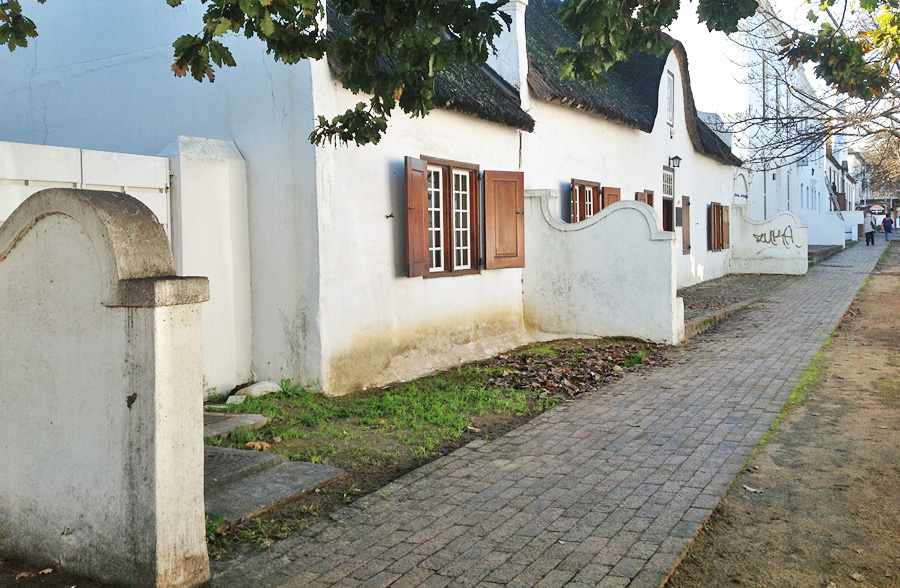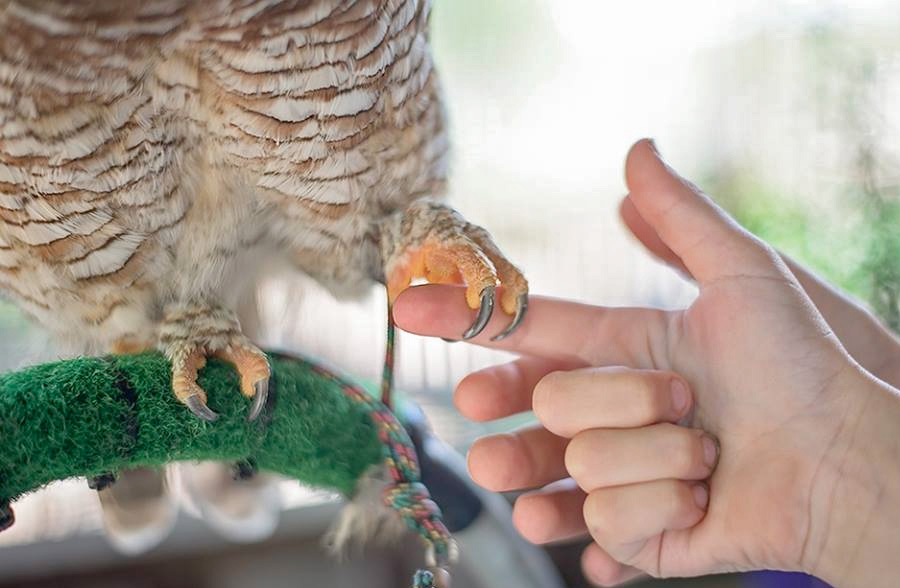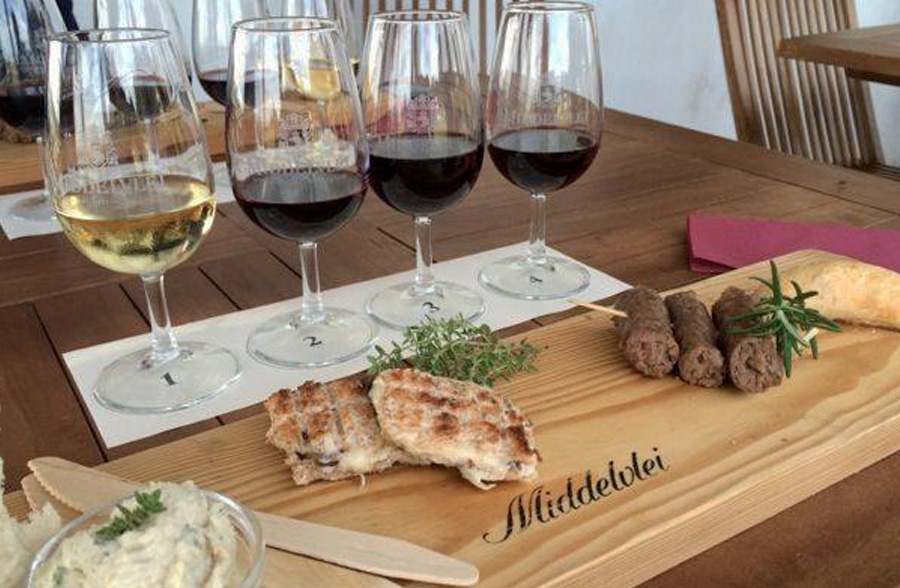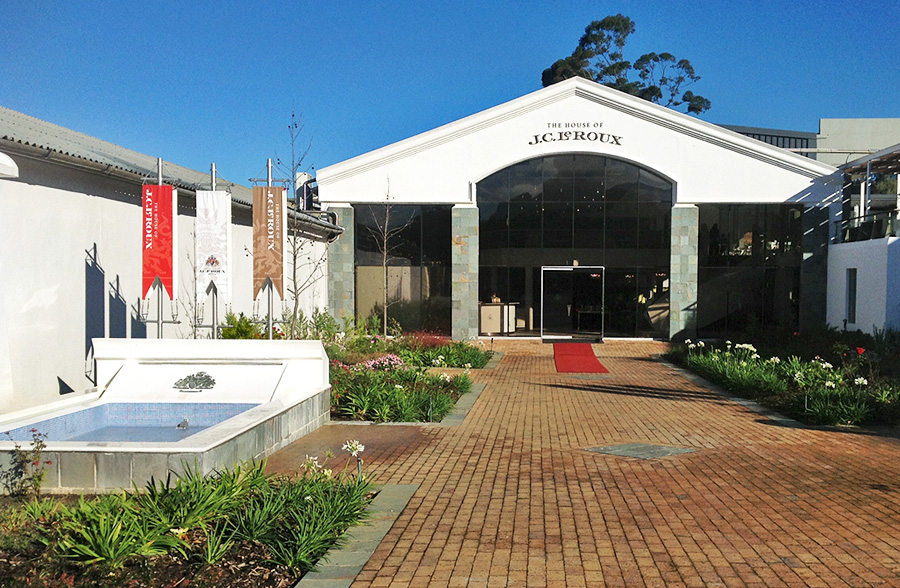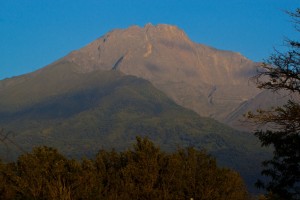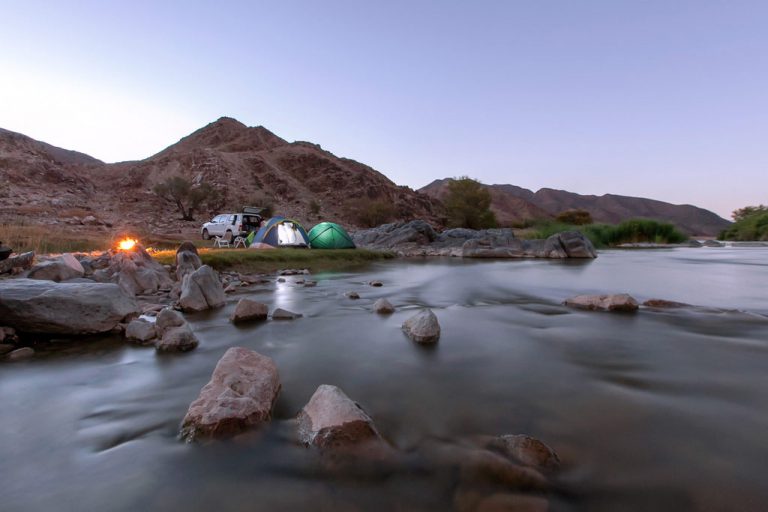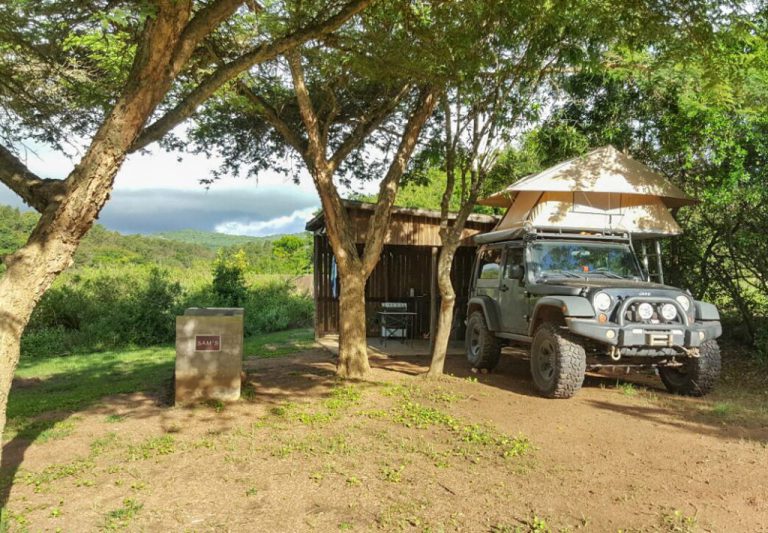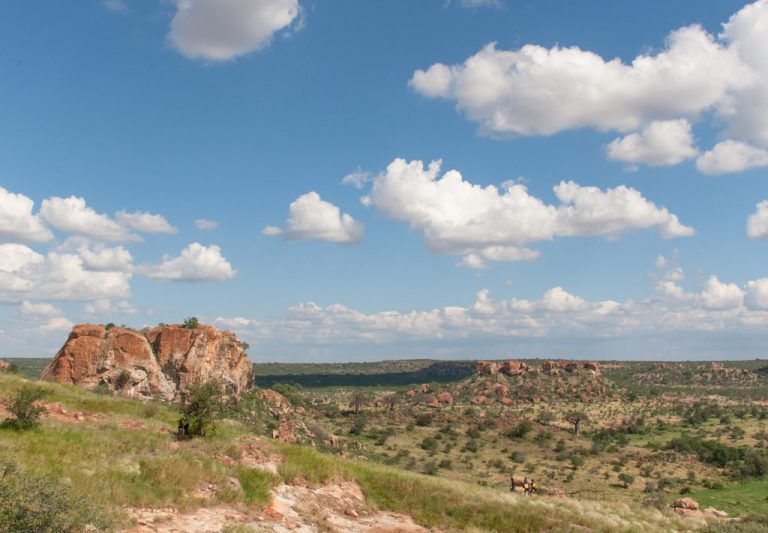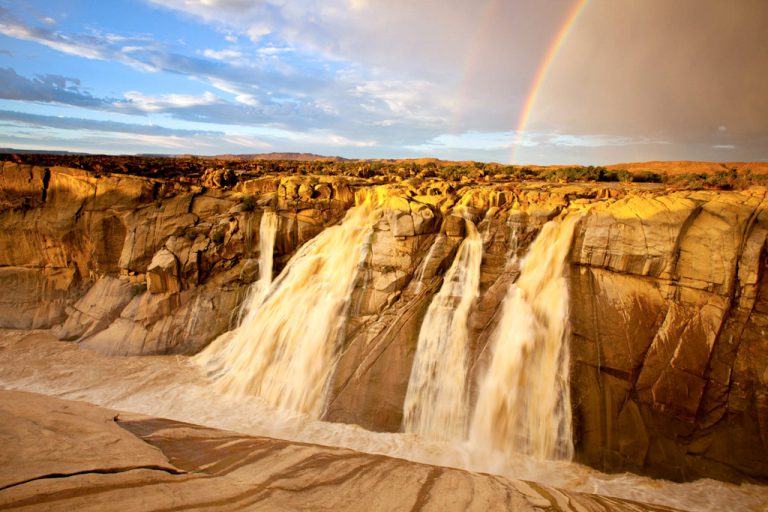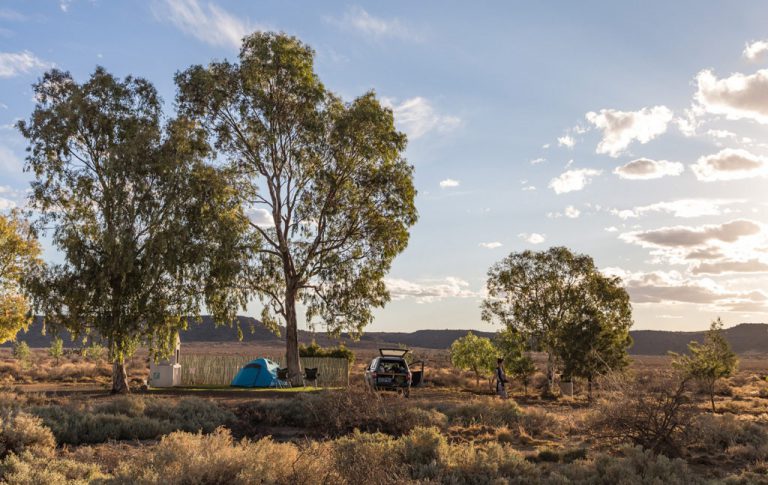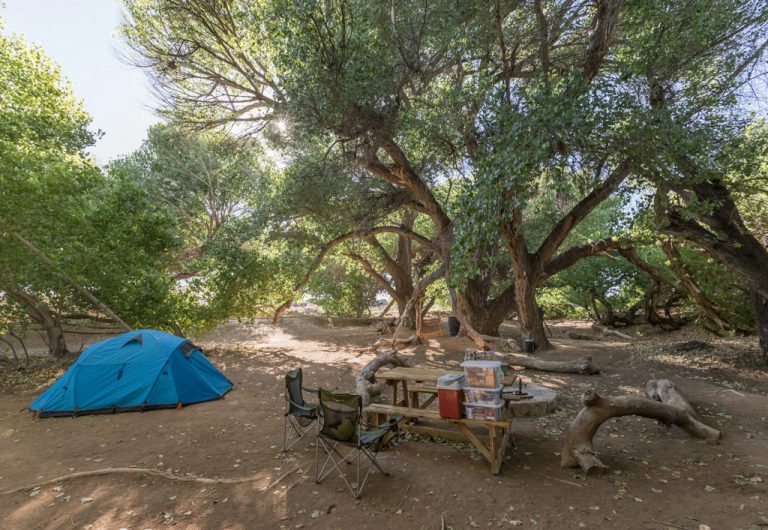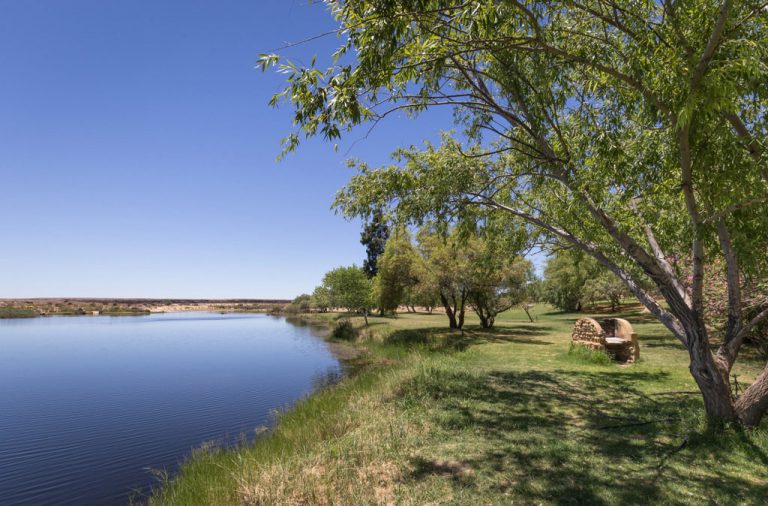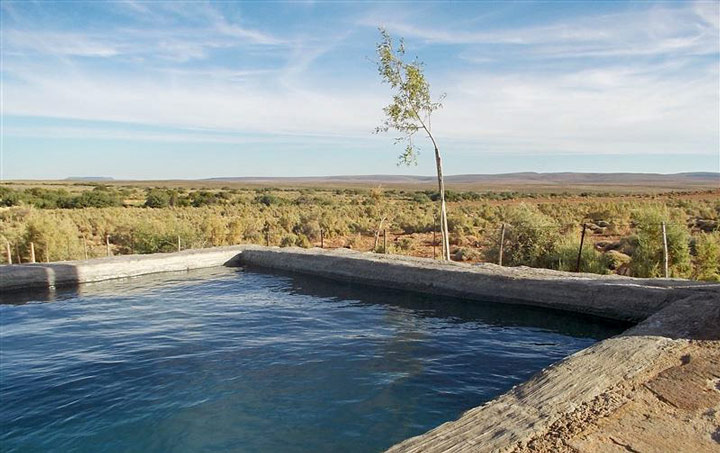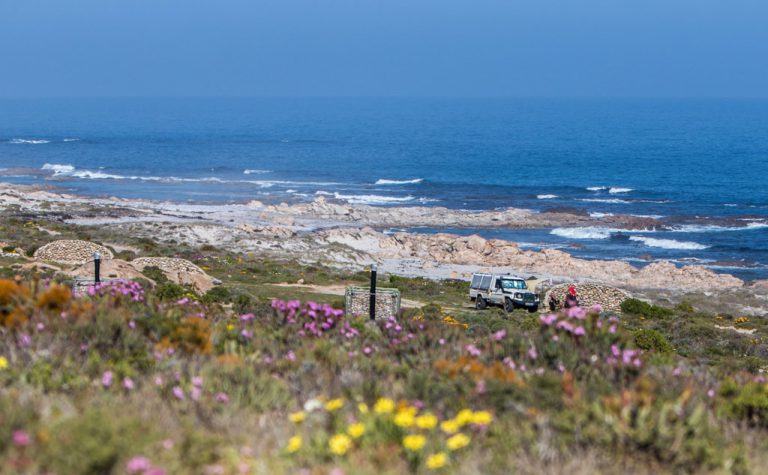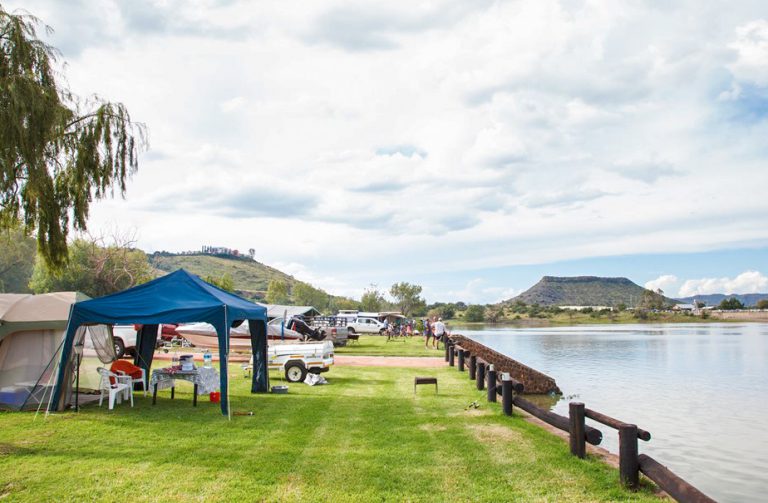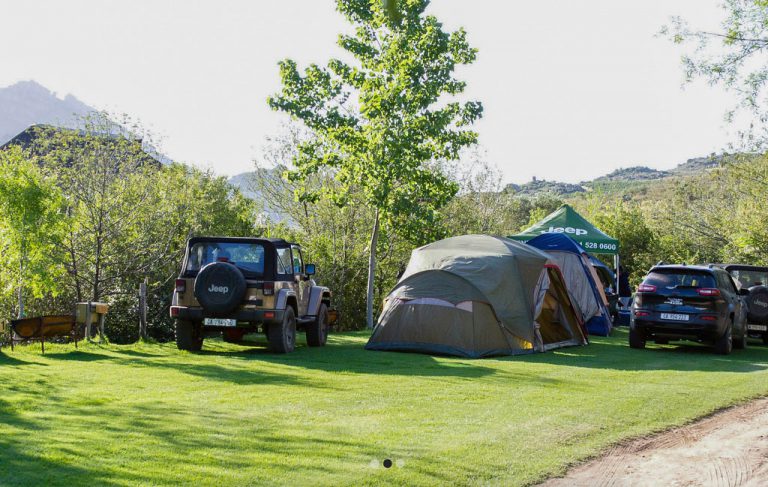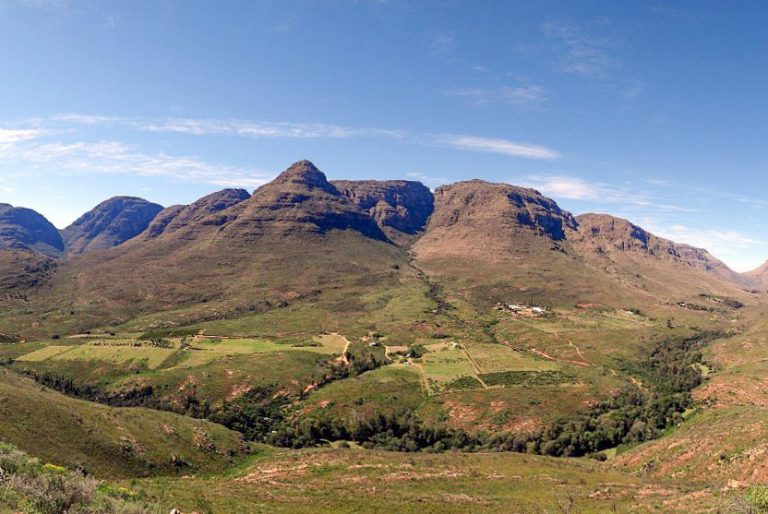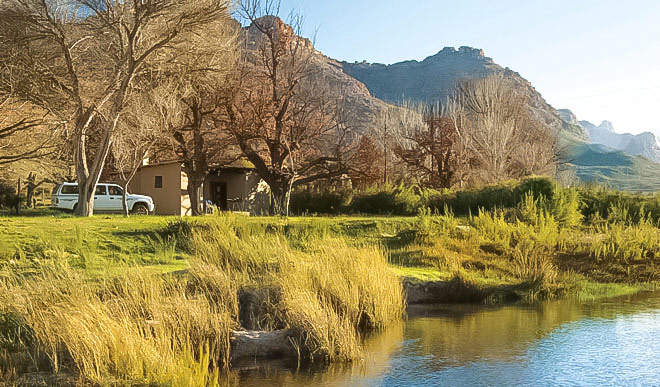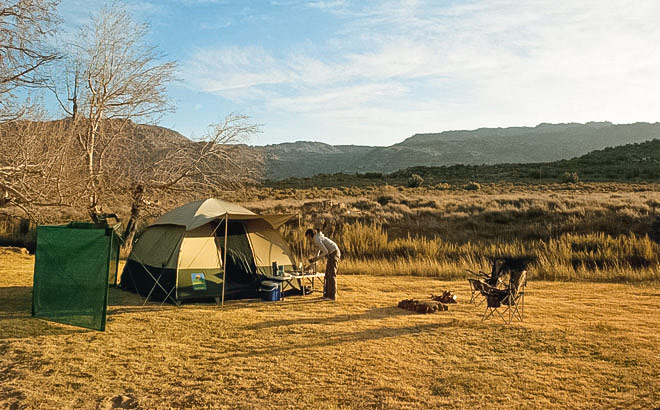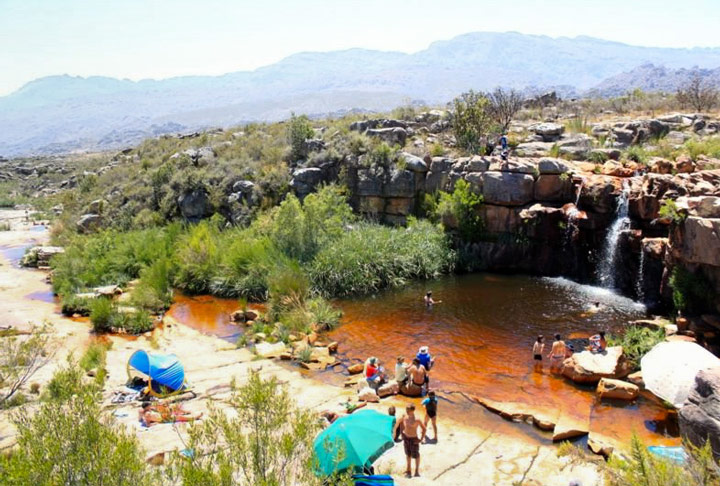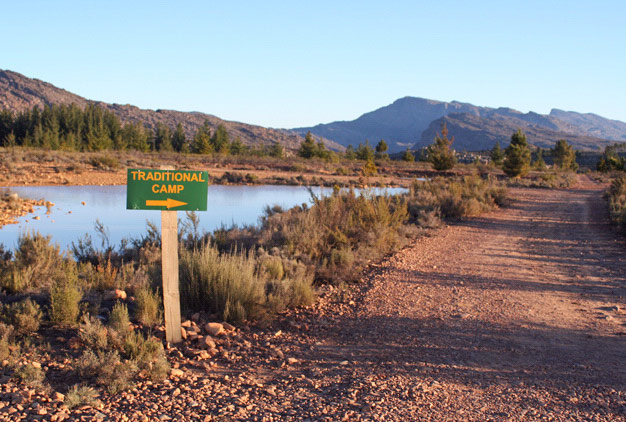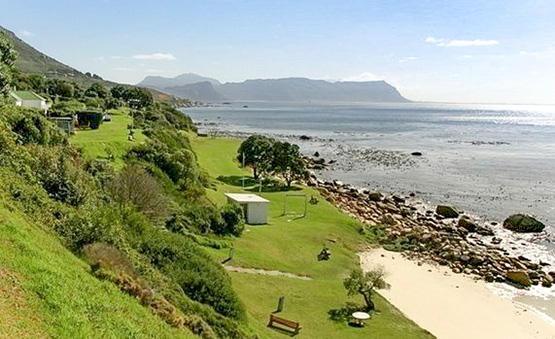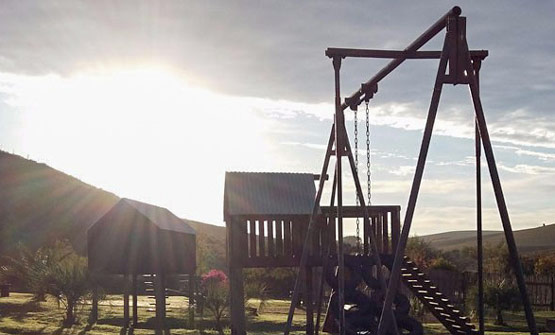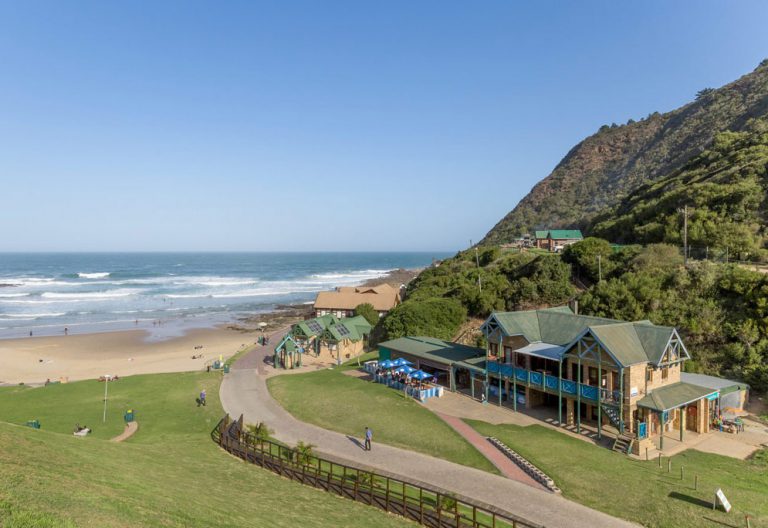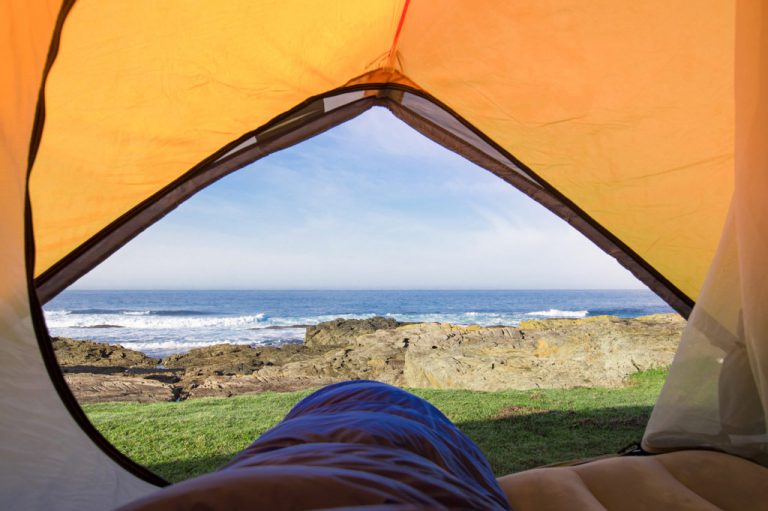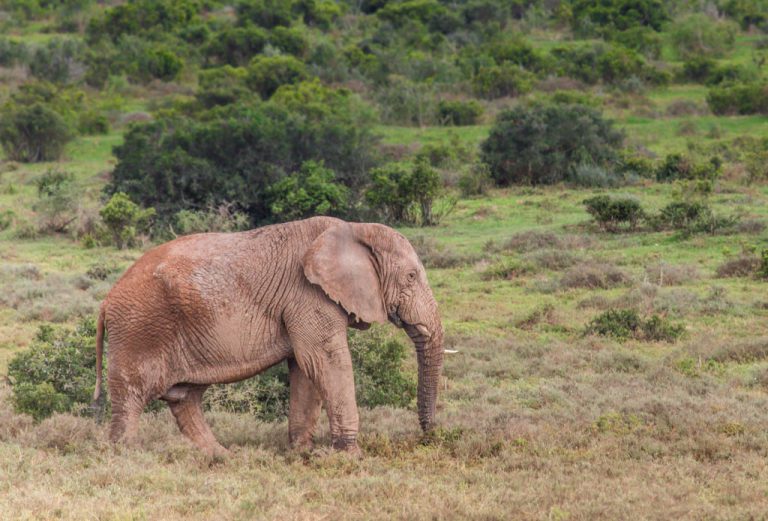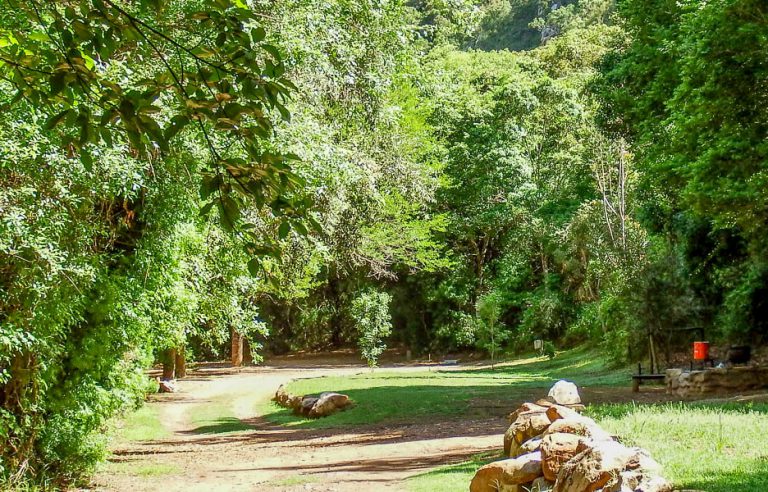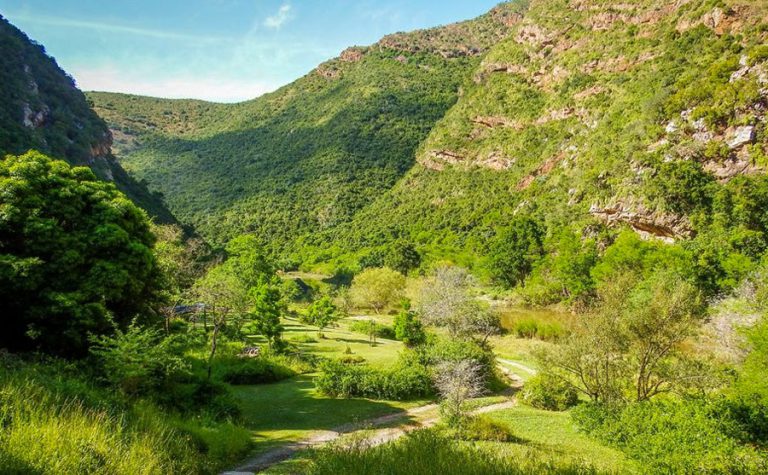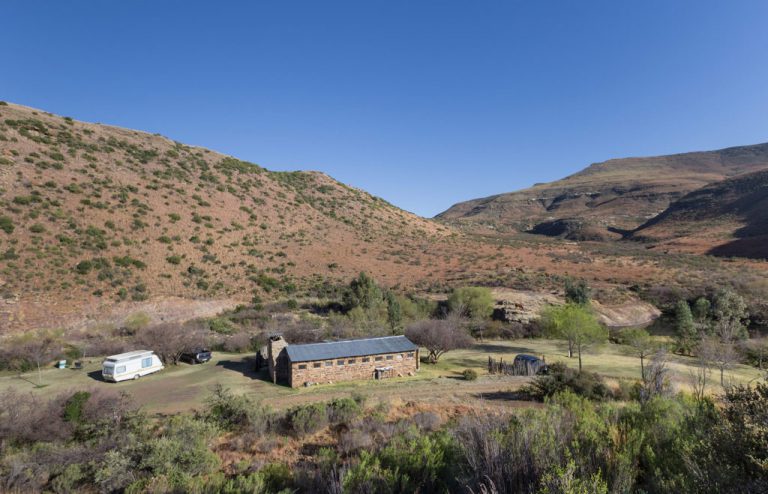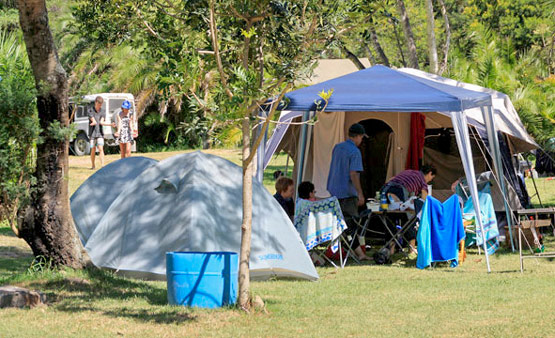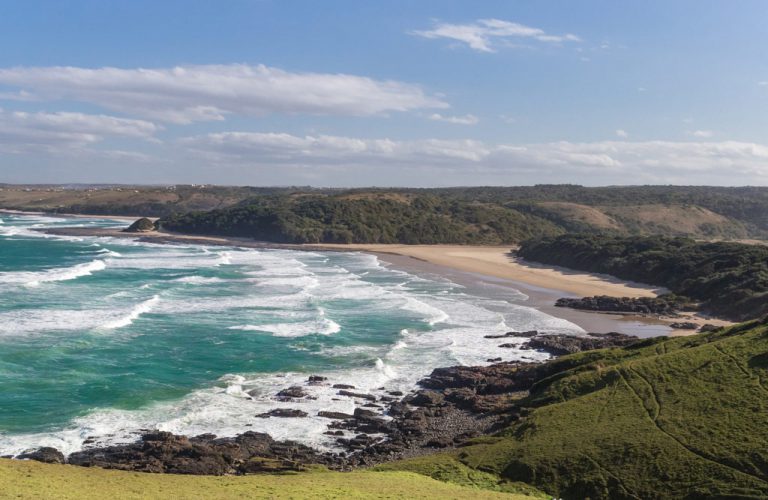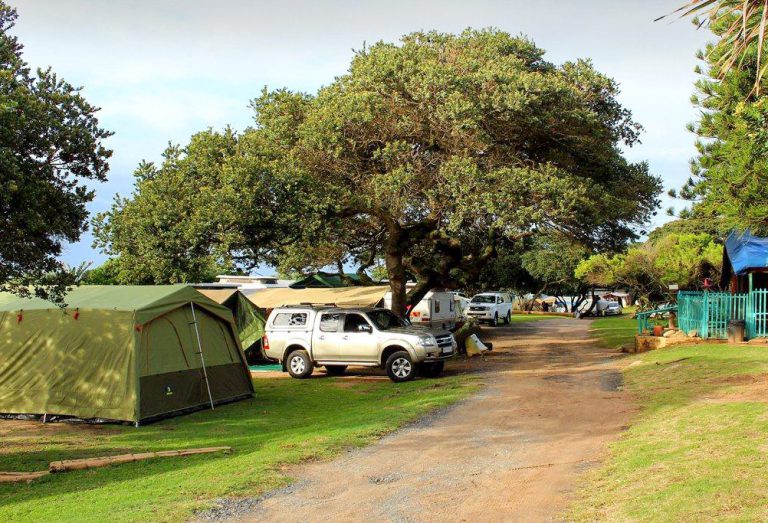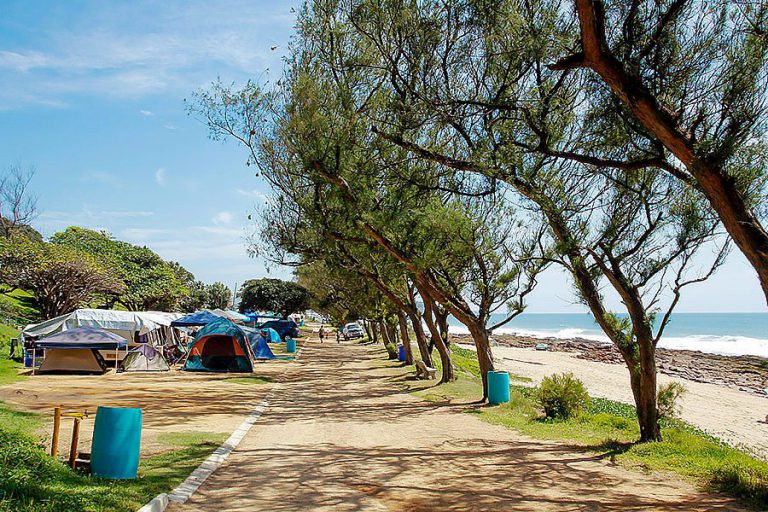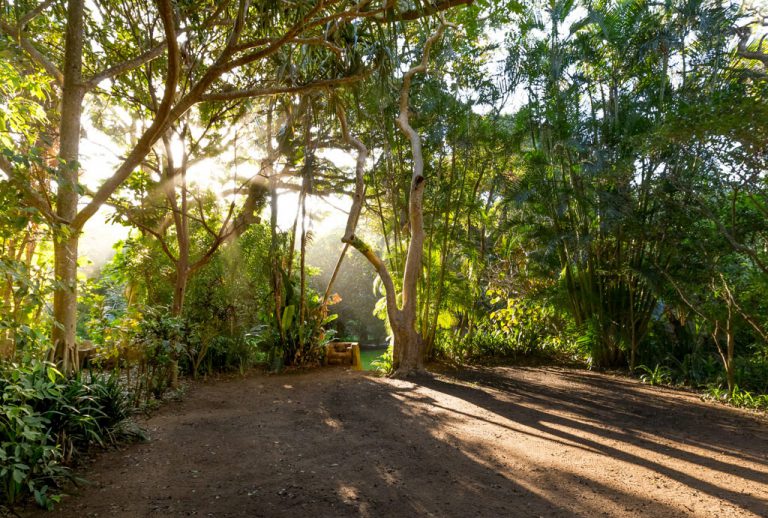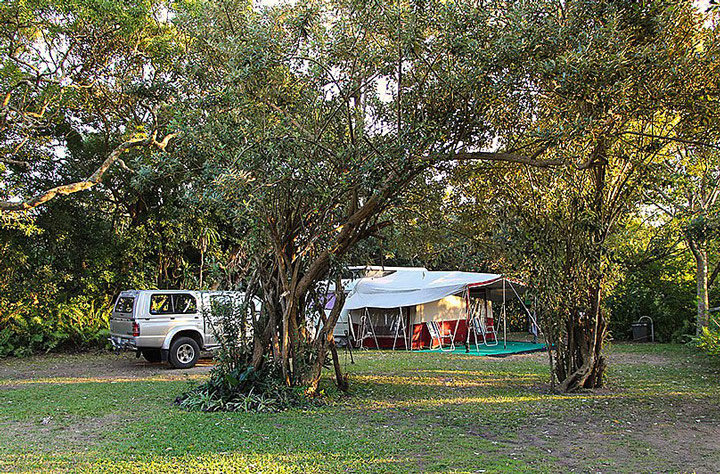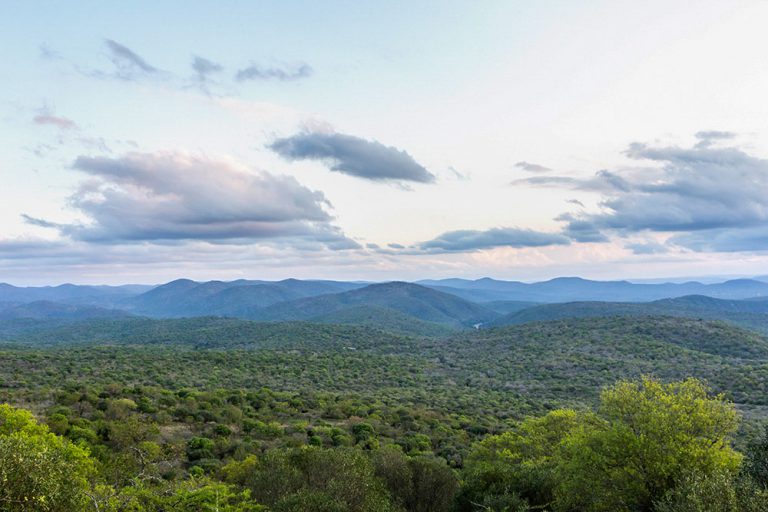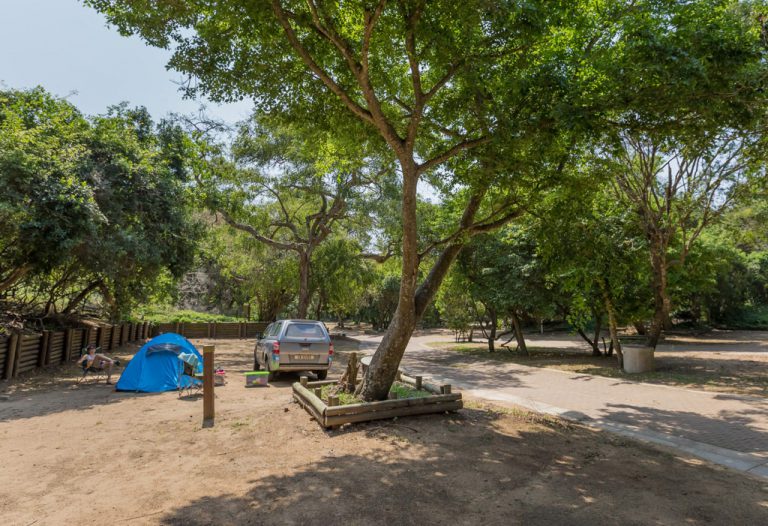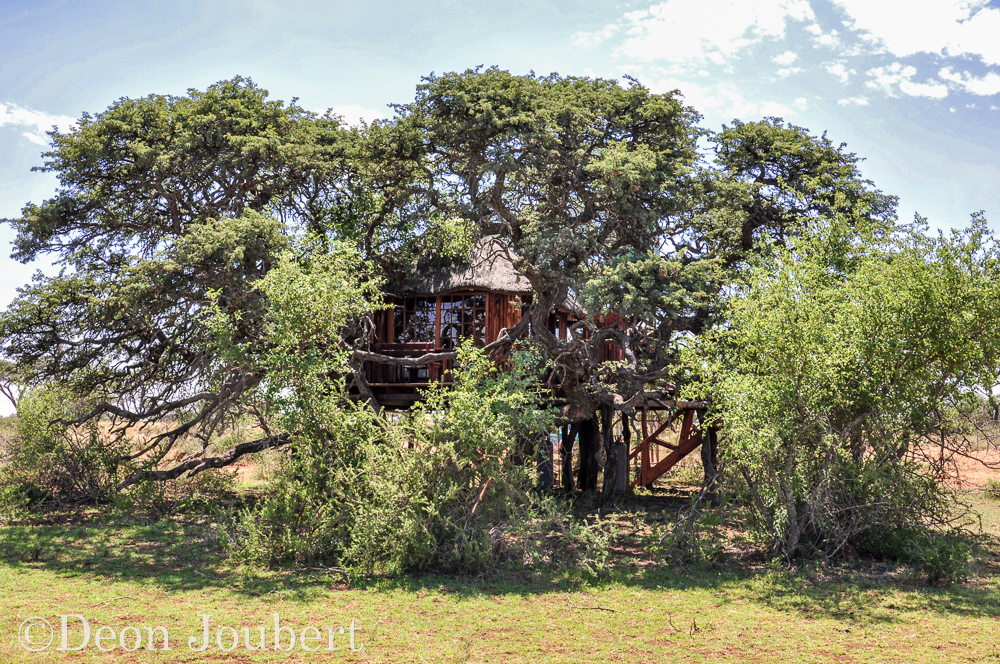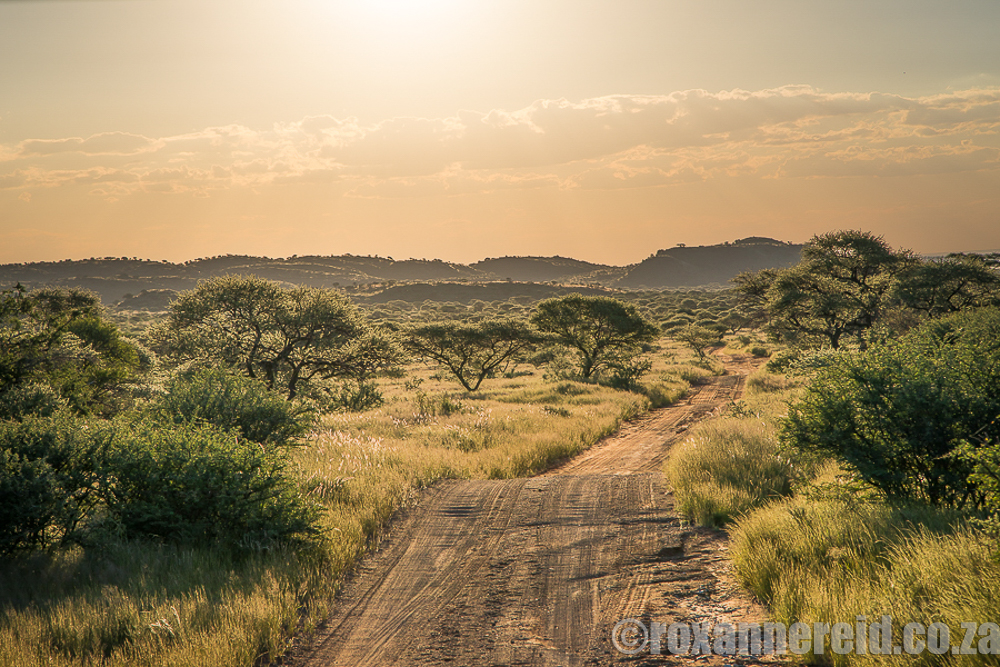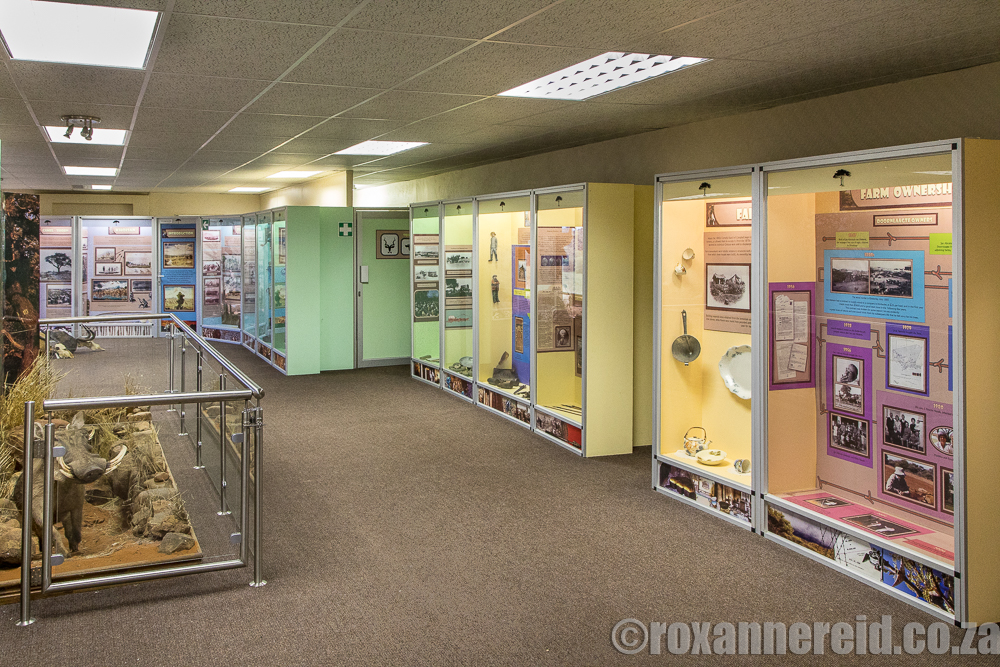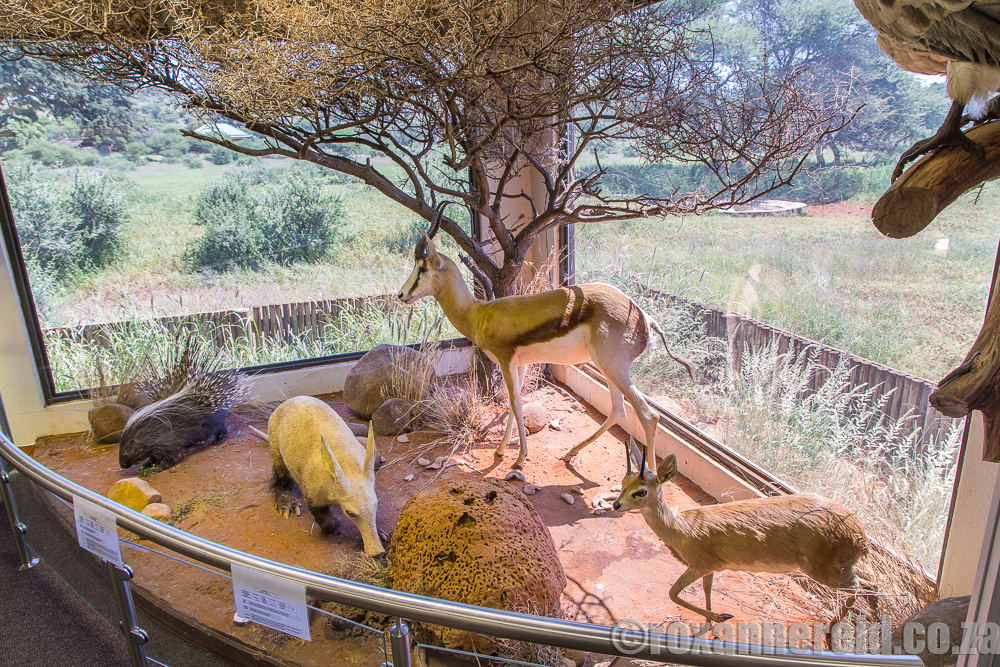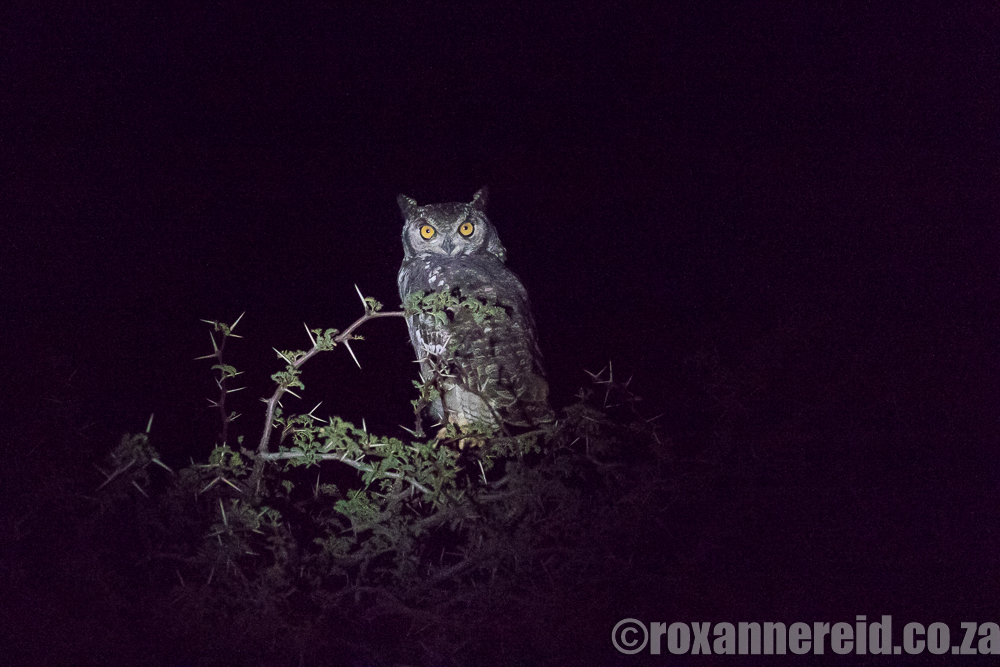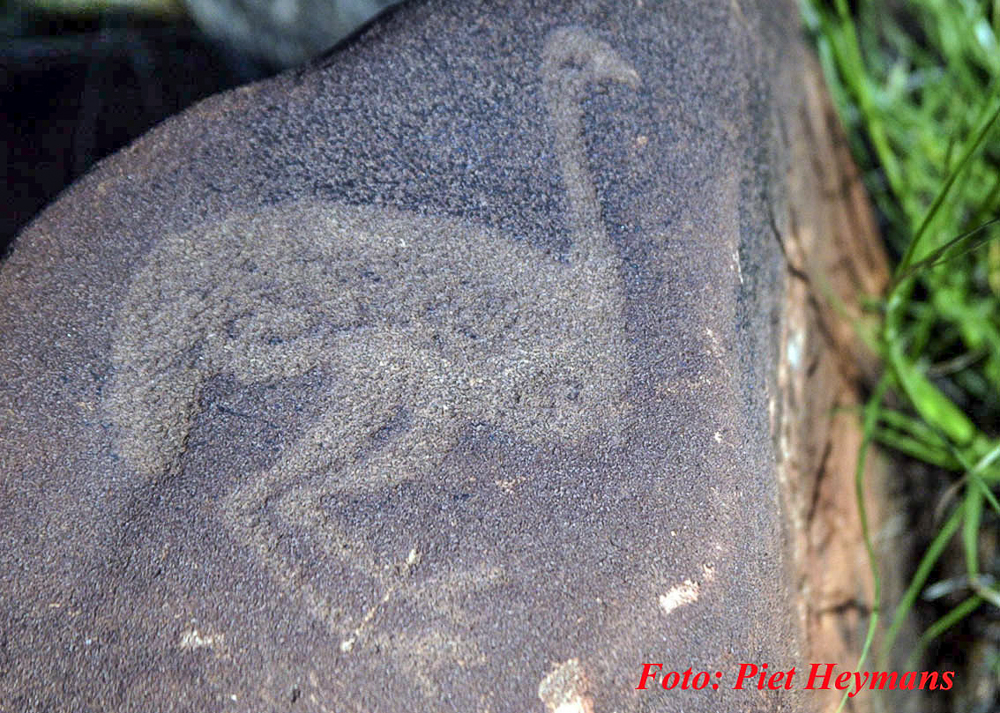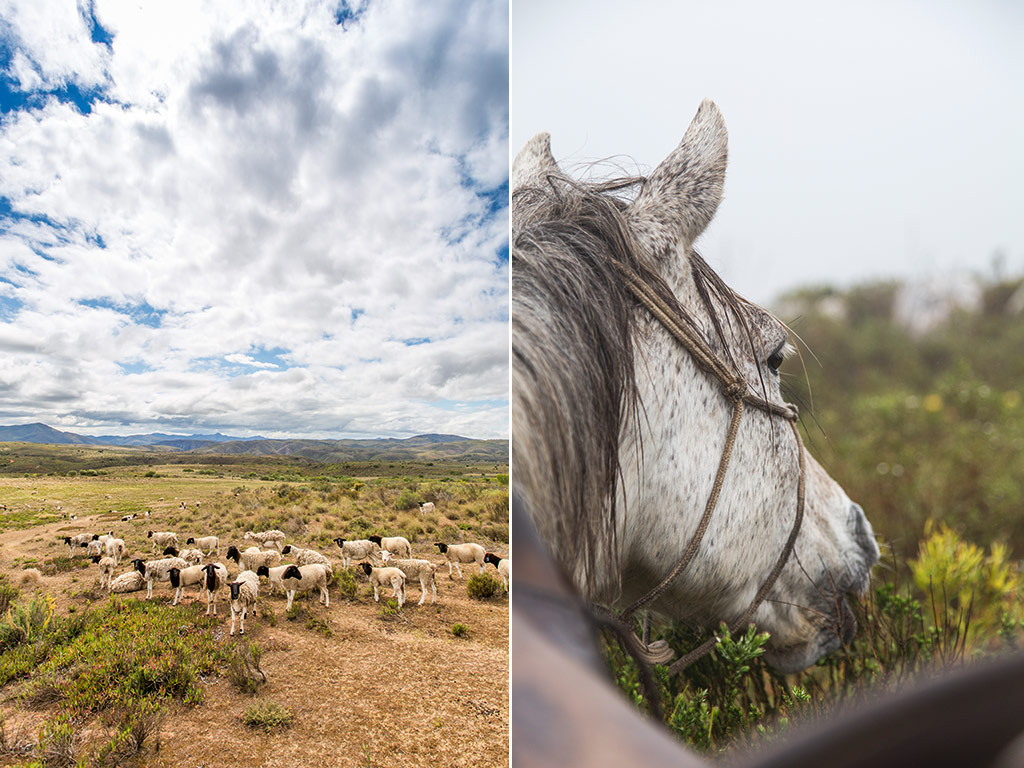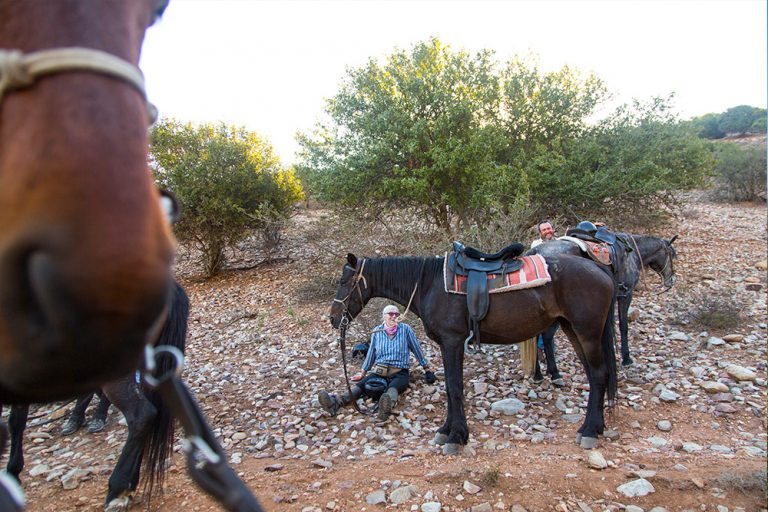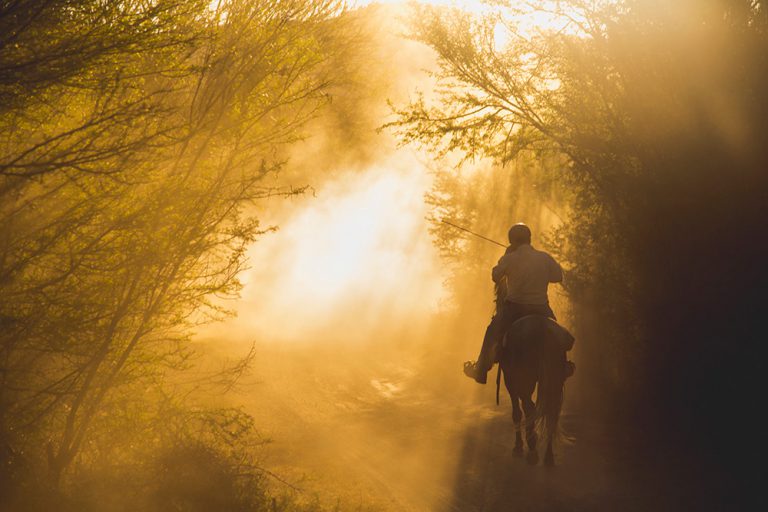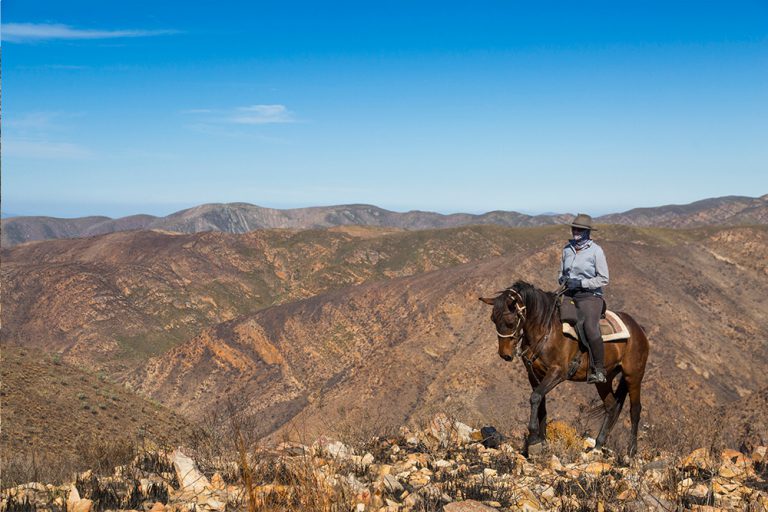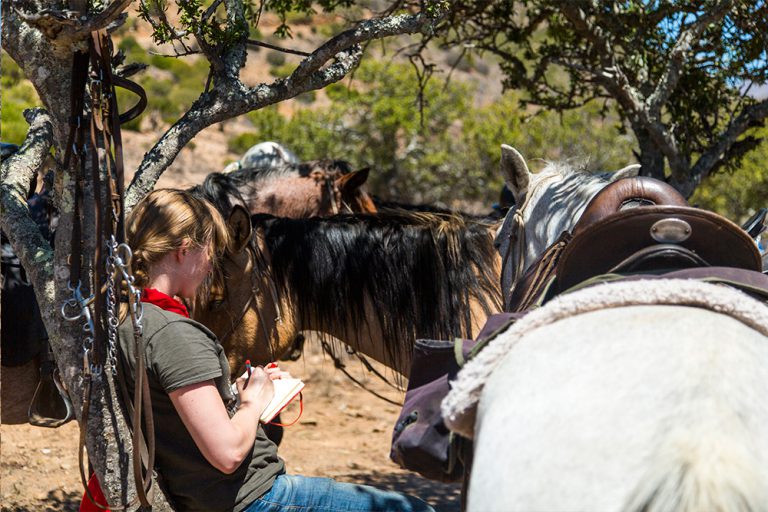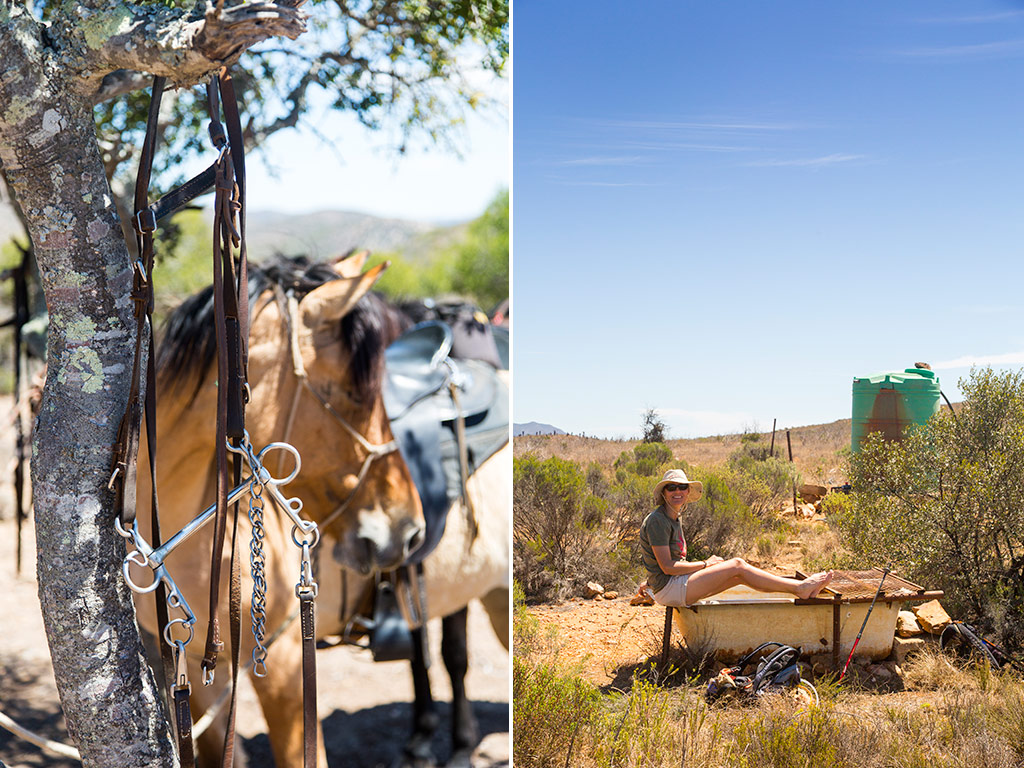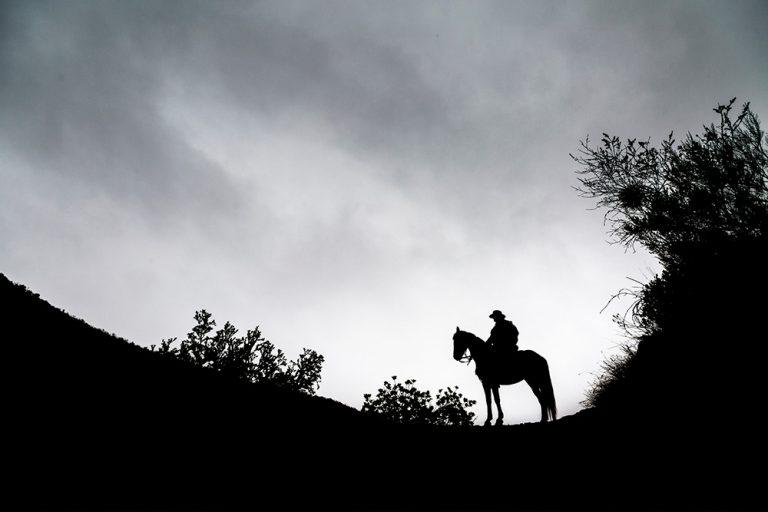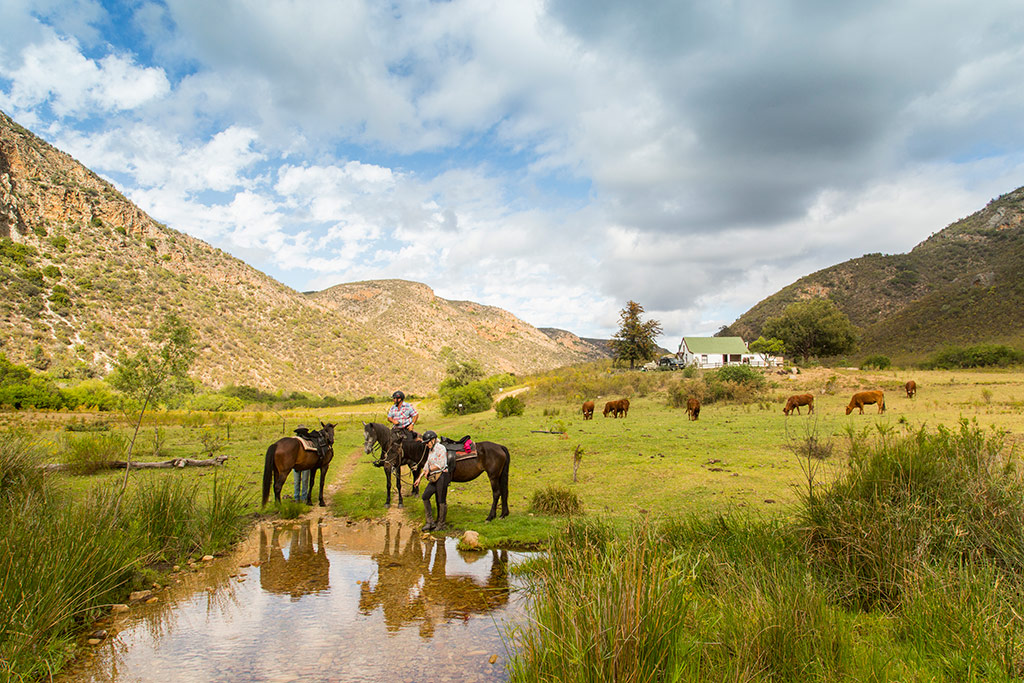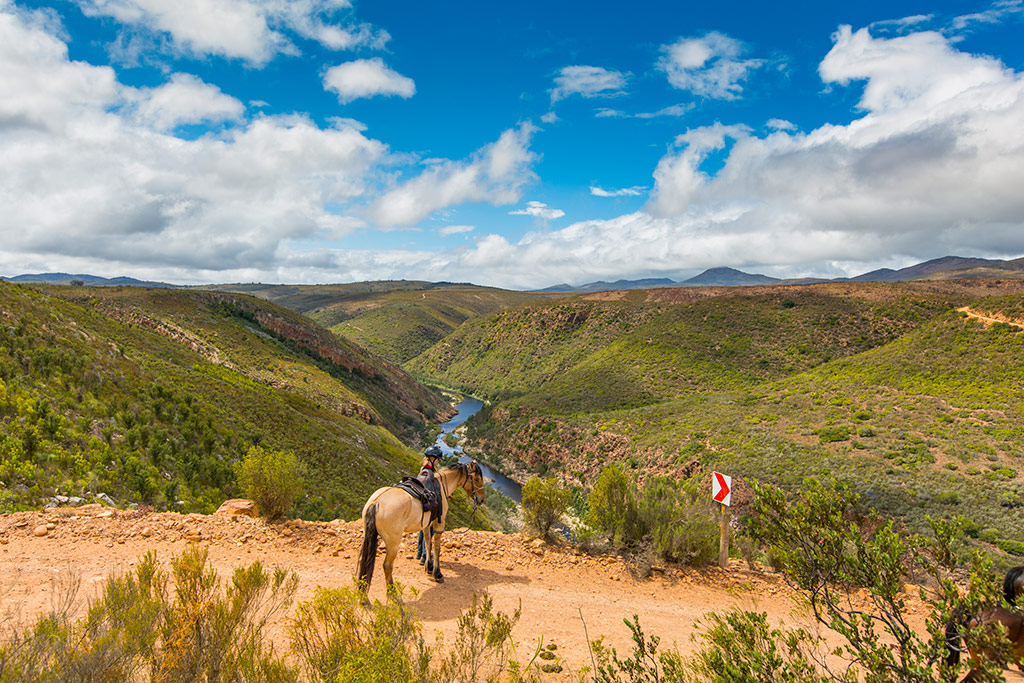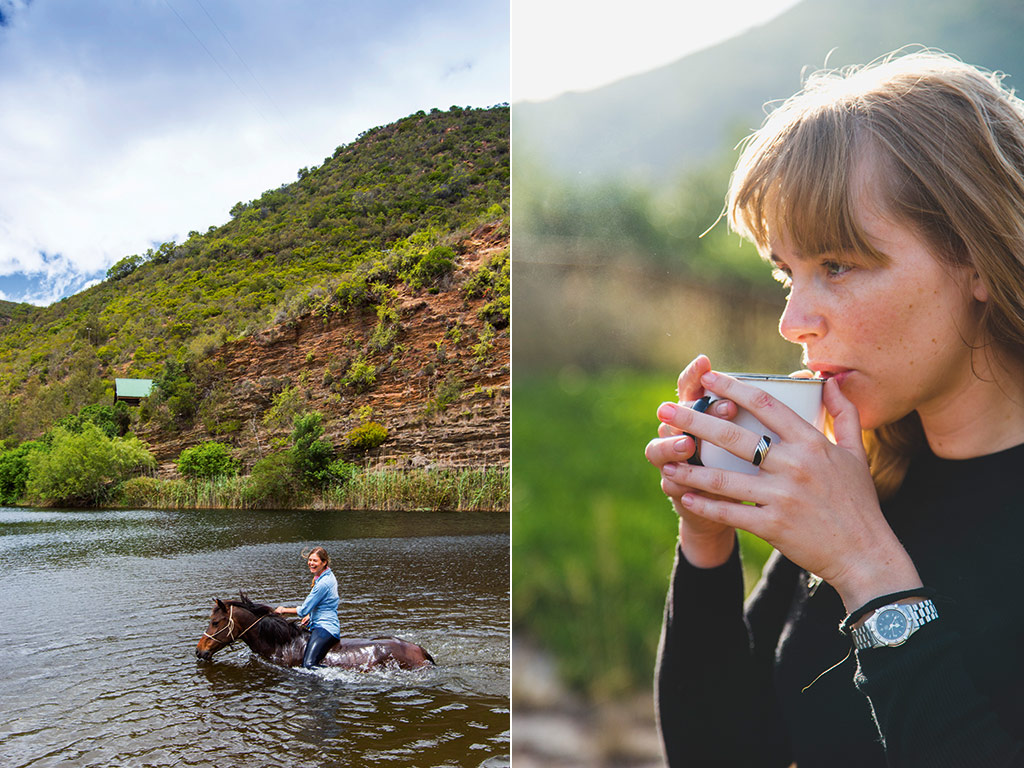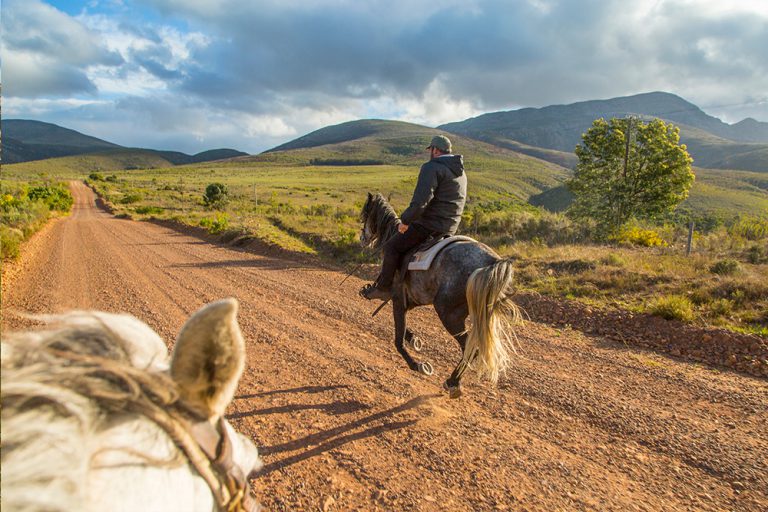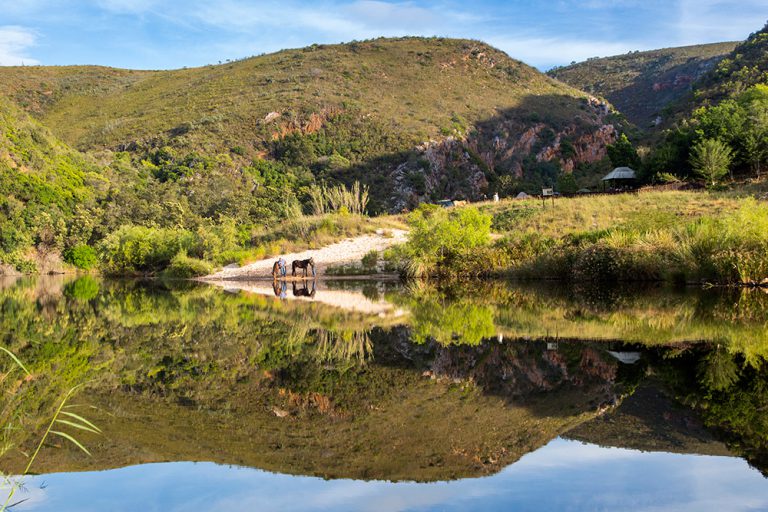![]()
South Africa is full of gorgeous campsites and deciding where to book your next camping holiday can get a little overwhelming. To help narrow down the hundreds of options, we’ve put together a list of our best campsites in South Africa. Whether on the banks of a river, nestled in the mountains, or walking distance from the beach, we’ve got a beautiful campsite waiting for you. Take your pick, and as ever, let us know (in the comments below) if you have a favourite campsite we’ve missed. And please remember to confirm availability and latest prices with each campsite before travelling.
Looking for campsites near Joburg?
Try these 10 great campsites for a Joburg break.
Campsites in Limpopo
1. Zvakanaka Farm, Soutpansberg
Location: -22.977981, 29.952550
![Zvakanaka Farm]()
Zvakanaka Farm, Soutpansberg.
On top of the Soutpansberg, just north of Louis Trichardt, the beautiful Zvakanaka Farm is the perfect stop
en route to Zimbabwe, Tuli or northern Kruger. The four campsites are private and well-spaced, and the two larger stands have a boma for extra shade and protection from the elements. There’s a small, communal pool a short distance away and the shared ablutions are neat, tidy and beautifully built, with an attention to detail that’s so often lacking in larger, public campsites. Be sure to bring your binos for the excellent bird life, and your walking shoes to tackle some of the many short trails around the farm and up the nearby ridge.
Number of stands: 4 private, plus a beautiful cabin and cottage
Electricity: Yes, at 2 stands
Braai facilities: Yes
Shade: Plenty of trees. Large shade/shelter at the 2 powered stands
Ground cover: Grass and dirt
Pets: No
Nearby activities: Hiking and birding
Cost: R100 per person (powered) and R75 per person (no power). Max 10 per stand. Kids under 12 half price, and under 4 free
Contact: Tel 0844004595, zka.co.za
2. Mazhou Campsite, Mapungubwe National Park
Location: -22.240303, 29.408439
![Mapungubwe National Park]()
View from Mapungubwe Hill, Mapungubwe National Park.
Mazhou is a peaceful campsite of 10 stands, surrounded by absolutely breathtaking scenery.
Mapungubwe National Park is a World Heritage Site and the camp is an ideal base to start your exploration. Go on sunset or night drives or explore the park on foot with the guided walks. Don’t miss the guided Heritage Walk which takes you to a graveyard on Mapungubwe Hill. The site has a wonderful sense of history and the views from on top are breathtaking.
Number of stands: 10
Electricity: Yes
Braai facilities: Yes
Shade: Partial trees
Ground cover: Grass and dirt
Pets: No
Nearby activities: Museum at the main gate (R55 per person). Daily, guided ‘Heritage Tour’ to the top of Mapungubwe Hill (R230 per person)
Important info: Mazhou allows caravans, but no caravans allowed in the eastern section of the park. Closest fuel is Musina, 70km away. Check gate times before travelling
Cost: From R265 per stand (2 people), and from R82 per person thereafter (max 6 per stand). R44 daily conservation fee (not applicable to Wild Card holders). Full rates and tariffs here
Contact: Tel 0155347923/24, sanparks.org
Also read: 5 unusual Gauteng getaways – these are not average B&Bs
Campsites in the North West Province
3. Bush Camps, Botsalano Game Reserve
Location: -25.560855, 25.709919
For an affordable taste of the Kalahari, Botsalano Game Reserve is a prize – a thornveld escape that’s close to Joburg and has an abundance of springbok, gemsbok, buffalo and giraffe. With luck, you might even spot a rhino. Four rustic bush camps, each with basic ablutions (cold/donkey boiler showers), are scattered around the park in unfenced bush where blue and violet-eared waxbills busy themselves in the acacias. Botsalano is an excellent first stop for trips into Botswana.
Number of stands: 4 bush camps. Pre-erected safari tents also available
Electricity: No. 3 of the 4 camps have a donkey for hot water
Braai facilities: Yes, but bring own grid
Shade: Partial thorn trees
Ground cover: Sand
Pets: No
Nearby activities: Game drives and birding
Important info: Can get very hot during the day and cold at night
Cost: R250 per stand (sleeps 8). Extra R20 per person up to 12 people. Park fees R40 per adult, R25 for kids 2-12 years old. R10 per vehicle, R20 per caravan
Contact: Tel 0183868900, botsalano@nwpb.co.za, tourismnorthwest.co.za
Campsites in the Northern Cape
4. Augrabies Rest Camp, Augrabies Falls National Park
Location: -28.593904, 20.337711
Augrabies National Park is best known for its wonderful main waterfall which, on average, dumps over 300 cubic metres of water per second down its 56m-high face. In full flood that figure has gone up to an an astonishing 7800 cubic metres per second, but if things get that wet you probably won’t be camping. The campsite itself is typically SANParks – neat and tidy, with communal ablutions, kitchen and laundry facilities. There are short trails, viewpoints, and a restaurant, and mountain biking is permitted on the main roads.
Number of stands: 40
Electricity: Yes, at all stands
Braai facilities: Yes
Shade: Plenty of trees
Ground cover: Grass and dirt
Pets: No
Nearby activities: Waterfall viewpoints, self-drive game viewing, hiking trails, cycling and guided night drives
Important info: Communal ablutions and kitchen wit two-plate stoves and sinks
Cost: From R235 per stand (2 people), and from R82 per person thereafter (max 6 per stand). R44 daily conservation fee (not applicable to Wild Card holders). Full rates and tariffs here
Contact: Tel 0544529200, sanparks.org
5. Potjiespram Campsite, ?Ai-?Ais/Richtersveld Transfrontier Park
Location: -28.074629, 16.963089
Situated in South African’s far northwestern corner, right on the Namibian border, the Richtersveld is for experienced campers looking to get as far as possible away from it all. You’ll need to bring everything with you to Potjiespram, although drinking water isn’t a problem as the campsite lies right on the banks of the Orange River. Winter and spring are the best times to visit, when the temperatures are cooler and the region’s famous flowers are on show.
Number of stands: 18, all along the river
Electricity: No. Cold showers only
Braai facilities: Braaiing allowed, but bring your own grid
Shade: Partial tree cover
Ground cover: Sand and dirt
Pets: No
Nearby activities: Fantastic flowers between June and October (rain dependent). Various guided hiking trails available. Swimming in the Orange River
Important info: Bring everything you need for your stay. There are no shops in the park, but fuel and drinks can be purchased at Sendelingsdrift. Day-time temperatures can reach 50°C in summer
Cost: From R225 per stand (2 people), and from R82 per person thereafter (max 6 per stand). R70 daily conservation fee (not applicable to Wild Card holders). Full rates and tariffs here
Contact: Tel 0278311506 sanparks.org
6. De Hoop Campsite, Richtersveld
Location: -28.183206, 17.177670
Not to be confused with the nature reserve in the Western Cape of the same name,
De Hoop Campsite lies southeast of Potjiespram, upstream on the Orange River. Enjoy the best of both worlds as you camp on the banks of the Orange, surrounded by the beautiful Richtersveld bush. Like Potjiespram Campsite, De Hoop is definitely one for the more experienced camper. It offers a brilliantly rustic environment, literally in the middle of nowhere between South Africa and Namibia.
Number of stands: 12, along the river
Electricity: No. Cold showers only
Braai facilities: Braaiing allowed, but bring your own grid
Shade: Partial tree cover
Ground cover: Sand and dirt
Pets: No
Nearby activities: Swimming and canoeing conditions are perfect on this quiet part of the river. There are no rapids close to the campsite
Important info: Bring everything you need for your stay. There are no shops in the park, but fuel and drinks can be purchased at Sendelingsdrift. Day-time temperatures can reach 50°C in summer
Cost: From R225 per stand (2 people), and from R82 per person thereafter (max 6 per stand). R70 daily conservation fee (not applicable to Wild Card holders). Full rates and tariffs here
Contact: Tel 0278311506 sanparks.org
7. Kambro Campsite and Farm Stall, Britstown
Location: -30.416351, 23.565799
![Kambro Campsite and Farm Stall]()
Kambro Campsite and Farm Stall, Britstown.
has six grassed campsites, each discretely spaced, with electricity, a light and a private braai. With no major city lights for over 200km in any direction, Kambro is a wonderful stargazing spot and the perfect place to enjoy the silence and wide open spaces of the Karoo. Be sure to check out the selection of preserves and biscuits in the farm stall; the springbok pies are also excellent.
Number of stands: 6, plus 10 self-catering cottages
Electricity: Yes
Braai facilities: Yes
Shade: Each stand has a tree, but some are more leafy than others
Ground cover: Grass
Pets: Well-behaved dogs (on a leash) by prior arrangement only
Nearby activities: Kambro is a fantastic place to stargaze
Important info: Meals (book in advance), beer and wine available at the farmstall which is also packed with delicious goodies
Cost: R180 per stand (sleeps 4)
Contact: Tel 0833056668, kambroaccom.co.za
8. Middelwater Camping, Carnarvon
Location: -31.235512, 22.210777
![Middelwater Camping]()
Middelwater Camping, Carnarvon.
At
Middelwater Campsite, pitch your tent under the trees, and move into the open when the stars come out. There’s a dam for swimming (rain dependent), plus a small, but neat ablution and donkey shower. After a hot day behind the wheel, the cool shade feels like an oasis, and if you climb up the small koppie across the dam, you can’t help but think that you’ve found the only patch of green in the entire Great Karoo.
Number of stands: Cosy, open-plan area under tall trees
Electricity: No
Braai facilities: Yes, but bring your own grid
Shade: Full tree cover
Ground cover: Dirt and sand
Pets: Yes
Nearby activities: Swimming in the dam (rain dependent), hike in the surrounding veld, fish and cycle
Cost: R180 per stand (sleeps 4)
Contact: Tel 0746470447, carnarvon.co.za
9. Die Mond, Tankwa Karoo
Location: -32.543689, 19.542150
![Die Mond campsite]()
Die Mond, Tankwa Karoo.
The lush green grass and wide, cool waters of Grootrivier make
Die Mond Campsite a true oasis in the hot, dusty Tankwa Karoo. After hours of unrelenting rock and sand in all directions, it’s wonderful to feel the lawn beneath your bare feet as you dive from the bank into the deep, refreshing river. There are no preallocated sites, it’s first come first served, but there’s plenty of space along the riverbank, and if you are lucky enough to get away midweek, you’ll probably have the whole place to yourself anyway.
Number of stands: Large, open-plan grassy area along the riverbank, plus 7 self-catering cottages
Electricity: No
Braai facilities: Yes, portable wheeled drums. Bring your own grid
Shade: Plenty of trees
Ground cover: Grass
Pets: No
Nearby activities: Canoe, fish and swim in the river, visit Tankwa Karoo National Park, hike in the surrounding veld
Cost: R70 per person
Contact: Tel 0233170668, facebook.com
10. Ymansdam, Tankwa Karoo
Location: -32.087517, 19.966385
Ymansdam has one main stand and a single, small ablution, and three further stands nearby that can accommodate extra campers. This is a great spot to book out with a single, large group and makes an excellent base from which to explore the nearby Tankwa Karoo National Park. Be sure to climb the peak just north of the camp – you’ll be rewarded with beautiful views of the plains to the south.
Number of stands: 1 main campsite near the ablutions, plus 3 additional stands nearby, and a self-catering cottage
Electricity: No
Braai facilities: Yes, bring your own grid
Shade: Limited tree cover
Ground cover: Sand
Pets: Yes
Nearby activities: Swim in the small dam, explore Tankwa Karoo National Park and test your 4×4 on the nearby passes
Important info: 1 shower and toilet serves the entire campsite
Cost: R80 per person, with space for up 4 tents on the main stand
Contact: Tel 0725054121
11. Coastal Camp Sites, Namaqua National Park
Location: -30.828925, 17.575889
![Namaqua National Park]()
Coastal camp sites, Namaqua National Park.
It’s hard to single out any specific camping spot from Namaqua National Park’s nine
coastal camping sites, which are spread out along 40km of pristine west coast shoreline. Without a 4×4 however, you’ll be limited to the two southern campsites near the Groen River Gate – Delwerskamp and Groen River Camp. North of the gate, the track gets very sandy and 4X4 is definitely required. If we had to pick one site, it would be Kwass se Baai, about 20km north of Groen River. It’s one of the smaller campsites, with only four stands, and there’s a beautiful sandy beach nearby – perfect for west coast sundowners!
Number of stands: 9 separate campsites with a total of 46 stands
Electricity: No
Braai facilities: Braai pit. Bring your own grid
Shade: No
Ground cover: Sand
Pets: No
Important info: Wonderful place for spring flowers, although the park gets extremely busy during flower season. Bring everything with you, including drinking water
Cost: From R135 per stand (sleeps 6). R37 daily conservation fee (not applicable to Wild Card holders). Full rates and tariffs here
Contact: Tel 0276721948, sanparks.org
Campsites in the Free State
12. Gariep, A Forever Resort, Gariep Dam
Location: -30.605555, 25.502290
Gariep Dam campsite is an excellent stopover on the long N1 drive between Joburg and the Cape. It’s neat, clean and covered in lush grass, with beautiful views (especially at sunrise) over the small yacht-filled bay that lies directly in front of the campsite. There’s plenty for the kids to do – Putt-Putt, tennis, trampolines, and more – plus swimming and canoeing on the dam. If you have a bit of time, the guided tour of the main dam wall and turbines is definitely worth it too.
Number of stands: 106 stands, plus 16 private caravan sites (closed from May to August) and a range of self-catering accommodation
Electricity: Yes
Braai facilities: Yes
Shade: Plenty of trees
Ground cover: Grass
Pets: No
Nearby activities: Fishing, boating and canoeing on the dam, guided dam wall tours, swimming pool, on-site restaurant and bar, plus plenty of activities for kids
Important info: All stands are first come first serve. One vehicle per stand (additional vehicles at an extra fee)
Cost: From R135 per stand, plus R55 per person (max 6 per stand)
Contact: Tel 0517540045, forevergariep.co.za
Campsites in the Western Cape
13. Koningskop, Citrusdal
Location: -32.499003, 18.848462
Relax on the green lawns of this beautiful rooibos and citrus farm, just west of the N7 between Citrusdal and Clanwilliam. You can explore the farm trails on foot or bicycle, and swim or fish in the dams. There are also two 4×4 trails which head up into the nearby mountains, with beautiful views of the Swartland and Cederberg.
Number of stands: 50, plus three self-catering cottages
Electricity: Yes
Braai facilities: Yes
Shade: Plenty of tree cover
Ground cover: Grass
Pets: No
Nearby activities: Hiking, mountain biking, fishing in the dam, and 4×4 trails
Important info: Restaurant only open during peak season or by arrangement. No loud music allowed. Minimum four-night stay during holiday season
Cost: R120 per person, kids 2-11 years R65
Contact: Tel 0761752520, koningskop.com
14. Jamaka Organic Farm & Resort, Cederberg
Location: -32.341164, 19.028404
![Jamaka Organic Farm]()
Jamaka Organic Farm & Resort, Cederberg. Image credit: jamaka.co.za
Beautifully situated along the bubbling Rondegat River, these shady, relaxed campsites are some of the best in the Cederberg. Rooibos, mangoes and a variety of citrus are organically farmed in the surrounding valley and harvest time is a bustle of activity. The two camping areas each have their own rock pools to swim in, but book one of the many river-side stands and you’ll have your own private stretch to splash around in as well. For the more energetic there are also five hiking trails which you can join from the farm, and from there explore the surrounding mountains.
Number of stands: 2 camping areas along the riverbank with 81 stands, plus 11 self-catering cottages
Electricity: Yes
Braai facilities: Yes (pit or drum). Bring your own grid
Shade: Plenty of tree cover
Ground cover: Some grass, but mostly sand and dirt
Pets: No
Nearby activities: Hiking trails, swimming in the river and rock pools
Important info: Wood and basic supplies sold on site. Communal fridge/freezer available
Cost: From R180 per stand (sleeps 4)
Contact: Tel 0274822801/0824106417, jamaka.co.za
15. Kromrivier Campsite, Cederberg
Location: -32.539149, 19.282041
![Kromrivier Campsite]()
Kromrivier Campsite, Cederberg.
is a working farm bordering the Cederberg Wilderness Area and is ideal for those seeking a quiet and tranquil break. The campsite lies along on the banks of the Krom River and the children will love looking at the farm animals and swimming in the mountain streams. Those looking for a bit of adventure can go rock climbing or horse-back riding and the farm also has a shop and restaurant where you can buy basic supplies and farm produce.
Number of stands: 18, with private ablutions, plus self-catering chalets
Electricity: Yes
Braai facilities: Yes, but bring your own grid
Shade: Partial tree cover
Ground cover: Grass
Pets: No
Nearby activities: Horse riding (book in advance), swimming, hiking, rock climbing, fishing, mountain biking
Important info: No cell reception. Breakfast, lunch and dinner served at the restaurant, but needs to be booked in advance
Cost: R100 per person
Contact: Tel 0274822807, cederbergpark.com
16. Driehoek Tourist Farm, Cederberg
Location: -32.442490, 19.189830
![Driehoek Tourist Farm]()
Driehoek Tourist Farm, Cederberg.
Situated at the foot of Tafelberg, 20km from Algeria,
Driehoek Farm is well forested for the region, making it perfect for summer camping in the Cederberg. The farm is the ideal base from which to hike the surroundings mountains and peaks and there are many great pools to swim in. You can also go hiking, horseback riding, cycling and fishing.
Number of stands: 25, plus a variety of huts and cottages
Electricity: Yes
Braai facilities: Yes, bring your own grid
Shade: Plenty of trees
Ground cover: Grass
Pets: No
Nearby activities: Hiking, swimming, horse riding, mountain biking and fishing
Important info: No cellphone reception. Driehoek wines can be purchased at reception
Cost: From R290 per stand (sleeps 4)
Contact: Tel 0274822828, cederberg-accommodation.co.za
17. Beaverlac, Grootfontein Farm, Cederberg
Location: -32.907872, 19.067480
Beaverlac is an old favourite of the Cape camping crowd and rightly so. The river boasts plenty of deep rock pools and beautiful waterfalls in which to wash away the summer’s heat, and the caves around the farm are decorated with well-preserved rock paintings. Old hands should be aware that while in the past you never had to book in advance, these days you’ll need to register and login on their website before you can make a booking.
Number of stands: Large, open-plan camping area
Electricity: No
Braai facilities: Yes, bring your own grid
Shade: Partial tree cover
Ground cover: Grass
Pets: Yes (R50 per night)
Nearby activities: Hiking and swimming in the awesome rock pools
Important info: The shop sells basic supplies, including wood, beer and ice. No music or loud noise of any kind
Cost: R60 per person, kids 4-17 years R40, and R30 per vehicle
Contact: Tel 0229312945, beaverlac.co.za
Also read: Top tips for camping at Beaverlac
18. Matroosberg Private Nature Reserve, Ceres
Location: -33.330238, 19.611104
![Matroosberg]()
Matroosberg Private Nature Reserve, Ceres.
Although this is one of the Western Cape’s most popular destinations to see snow, Matroosberg is also a perfect destination for a summer getaway. The fairly small and peaceful camping area is far removed from the chalets and houses in the reserve, in a shady pine tree area beside the Spek River. If you enjoy getting active, they offer abseiling, hiking, mountain biking, kloofing, horse riding and even target shooting. If, however, you just want to relax, you can walk to the rock pools and spend an afternoon swimming and soaking up the sun.
Number of stands: 14 in the main campsite, plus private sites and self-catering cottages
Electricity: No
Braai facilities: Yes, bring your own grid
Shade: Plenty of trees
Ground cover: Mostly sand, with some grass
Pets: Yes
Nearby activities: There’s lots to do, from hiking to target shooting. Great place for winter snow
Important info: No access after 9pm. No single night bookings over weekends
Cost: From R55 per person
Contact: Tel 0233122282, matroosberg.com
19. Miller’s Point Caravan Park, Simon’s Town
Location: -34.228424, 18.469935
![Millers Point]()
Miller’s Point, Simon’s Town.
Miller’s Point Resort is 5km south of Simon’s Town, as you follow the M4 towards Cape Point. Large boulders line this stunning stretch of coastline with sheltered, sandy coves in between. The wind shadow protecting the northern side of the point makes for some beautiful, sheltered swimming areas – if you can stand the icy water!
Number of stands: 16
Electricity: Yes
Braai facilities: Communal braai area, bring your own grid
Shade: Partial tree cover
Ground cover: Grass
Pets: No
Nearby activities: Cape Point is just down the road, and in the other direction, Simon’s Town is full of interesting shops and great restaurants. the Boulders Beach penguin colony is also nearby
Important info:
Cost: R165 per stand (sleeps 6)
Contact: Tel 0217861142
Also read: 26 affordable weekend getaways near Cape Town
20. Vloedbos Campsite, Caledon
Location: -34.333374, 19.694399
Vloedbos is a Cape campsite specifically geared to families. Between the paintball and the table tennis and super tube, you’re sure to find something exciting to keep the kids occupied and you might even find time to have a few swings at the driving range yourself. There’s no music allowed in camp, and strict silence after 10pm, so a good night’s sleep is guaranteed.
Number of stands: 46, plus various chalets and cabins
Electricity: Yes
Braai facilities: Yes
Shade: Scattered trees
Ground cover: Grass
Pets: No
Nearby activities: The pool, trampoline and super tube will keep the kids busy
Important info: This is a family campsite so expect to find plenty of young kids around. R100 cash key deposit required for all vehicles. Shop sells basic supplies, but no alcohol
Cost: From R350 per stand (sleeps 4), additional adults R85 each (max 6 per stand). Price increases during peak season
Contact: Tel 0833591505, vloedbos.co.za
21. Victoria Bay Caravan Park, Victoria Bay
Location: -34.004796, 22.547882
![Victoria Bay Caravan Park]()
Victoria Bay Caravan Park, Victoria Bay.
is a popular surfing spot, frequented by sun-kissed board riders young and old. The two camping areas are perched half way up the surrounding cliffs and offer great views of the surfing action. The bay is small, with a restaurant and bar just off the beach, and a row of beachfront cottages along the western side. There’s also a tidal pool that’s safe for kids. A narrow promenade separates the cottages from the water and most who walk it wear a smile.
Number of stands: 20 caravan stands on the Western Terrace, plus another separate camping area across the bay
Electricity: Yes
Braai facilities: Yes
Shade: No
Ground cover: Grass
Pets: No
Nearby activities: Surfing, fishing and exploring the Garden Route
Important info: The Western Terrace usually only allows caravans during peak season, unless by prior arrangement
Cost: From R220 to R440 per stand depending on the season (sleeps 6)
Contact: Tel 0448890081, victoriabaycaravanpark.co.za
Campsites in the Eastern Cape
22. Storms River Mouth Rest Camp, Garden Route National Park
Location: -34.022236, 23.885529
![Storms River Mouth Rest Camp]()
Storms River Mouth Rest Camp, Garden Route National Park.
is the jewel in the crown of the Garden Route National Park. Between the pounding surf and steep cliffs of indigenous forest, wood cabins, caravans and camping sites sit side by side along a beautiful, narrow strip of coastline. Many of the sea-facing stands are reserved for caravans, so if you’re in a tent, ask for stand numbers 101 to 112 to ensure the best sea views, but be aware that these stands don’t have power.
Number of stands: 30 for tents and 82 for caravans, plus various self-catering chalets and cottages
Electricity: Yes, but not at all stands
Braai facilities: Yes, bring your own grid
Shade: Limited. 38 to 47 are tucked into the forest and have some shade
Ground cover: Grass
Pets: No
Nearby activities: Beautiful hiking trails and a range of adventure activities both inside and outside the park (tubing, zip lining, bungee jumping)
Important info: The park has an excellent shop for most supplies, plus a restaurant
Cost: From R300 per stand (for 2 people), plus R82 per additional adult (max 6 per stand). R49 daily conservation fee (not applicable to Wild Card holders). Full rates and tariffs here
Contact: Tel 0422811607, sanparks.org
Also read: Guide to Storms River – South Africa’s most adventurous town
23. Mvubu Campsite, Addo Elephant National Park
Location: -33.340898, 25.360591
![Addo Elephant National Park]()
Addo Elephant National Park.
is a small campsite on the banks of the Sundays River in the Kabouga section of the
Addo Elephant National Park and serves as a wonderful base for exploring the park while enjoying quiet evenings in the bush. If you’re not out exploring the park on self drives or hikes you can relax in the river and pools inside the camp or set out on a day of bird watching.
Number of stands: 6
Electricity: No, but hot shower available
Braai facilities: Yes, bring own wood and grid
Shade: Partial shade at some sites
Ground cover: Grass
Pets: No
Nearby activities: Swimming, fishing and canoeing on the Sundays River, game drives
Important info: High clearance vehicle required. Bring your own drinking water
Cost: R140 per stand (2 people), R60 per additional adult (max 4 per stand). R62 daily conservation fee (not applicable to Wild Card holders). Full rates and tariffs here
Contact: Tel 0422338600, sanparks.org
24. Kudu Kaya Campsite, Baviaanskloof
Location: -33.653132, 24.583987
Kudu Kaya is a working citrus, potato and tobacco farm on the eastern end of Baviaanskloof. Lush, indigenous forest surrounds the campsite, which hugs the banks of the Ysrivier, a small mountain stream, and there are hikes up into the surrounding mountains and rock pools. Each stand is tucked into its own small clearing in the forest, providing some privacy, and there’s also a large, private stand (number 16) with its own ablutions.
Number of stands: 17, 1 private, plus 6 self-catering cabins
Electricity: Yes
Braai facilities: Yes, bring your own grid
Shade: Plenty of tree cover
Ground cover: Grass and dirt
Pets: No
Nearby activities: Mountain biking, hiking and swimming in the nearby rock pools. The farm owners will happily show interested guests around the farm on request
Important info: Toilet paper not provided
Cost: R80 per person, kids 5-12 half price
Contact: Tel 0738621968, kudukaya.co.za
25. Bruintjieskraal, Baviaanskloof
Location: -33.705347, 24.609979
Bruintjieskraal lies on the banks of the Groot River, 8km from the end of the tar road on the eastern edge of Baviaanskloof. The river is wide here, and ideal for swimming and fishing and there are plenty of short walks nearby. Each campsite has its own shower and toilet (cold water) and they’re well-spaced along the riverbank. Pick stands 11 to 14 for maximum privacy.
Number of stands: 13, 4 more private, plus 3 self-catering chalets
Electricity: No
Braai facilities: Yes, bring your own grid
Shade: Plenty of tree cover
Ground cover: Grass, with some dirt
Pets: By prior arrangement only
Nearby activities: Fishing (bass, carp, barber), swimming, hiking
Important info: Bring your own drinking water
Cost: From R70 per person (low season). Kids under 9 half price
Contact: Tel 0845150993, bruintjieskraal.co.za
Also see: In photos – Baviaanskloof’s Leopard Trail
26. Karnmelkspruit River Resort, Lady Grey
Location: -30.805977, 27.267700
![Karnmelkspruit River Resort]()
Karnmelkspruit River Resort, Lady Grey.
This small, intimate campsite is perfect for fishing and nature lovers. The facilities are basic, but neat and functional – all you need for a secluded camping trip, deep in the southern Maluti Mountains. The crystal-clear Karnmelkspruit runs right past the campsite and there’s 10km of fly fishing to be had along its course.
Number of stands: 2 open-plan grass areas – 25 to 30 stands, plus 1 private, self-catering cottage
Electricity: Only at the central ablution block
Braai facilities: Communal, covered braai area at the ablutions
Shade: Scattered small trees
Ground cover: Grass
Pets: Yes
Nearby activities: Fly fishing along the spruit (R100 per rod per day), hiking, exploring the old railway tunnel nearby
Important info: The 2.5km dirt track to the campsite is bumpy, but sedan-friendly if you go slow
Cost: R180 per tent, plus R10 per person
Contact: Tel 0845847036, facebook.com
27. Double Mouth Campsite, Morgan Bay
Location: -32.724126, 28.313872
A 15-minute drive south of Morgan Bay you’ll find Double Mouth Campsite, a stunning, secluded site, surrounded by river, beach, cliffs and sea. There’s plenty of shade to camp under and loads of space for the kids to play. The sea can get a bit rough along this coast, but there are plenty of rock pools to explore at low tide, and the river and estuary are safe to swim in. There’s excellent shore fishing, and wonderful views from the cliffs above.
Number of stands: 30
Electricity: Yes (caravan socket)
Braai facilities: Yes, bring your own grid
Shade: Plenty of tree cover
Ground cover: Grass
Pets: No
Nearby activities: Shore fishing, swimming and canoeing in the estuary, stunning walkings along the surrounding cliffs and beach
Important info: Six people per site
Cost: R225 per site off peak, R300 in peak season
Contact: Tel 0437054400 or 0434920881
28. Yellowwood Forest Campsite, Morgan Bay
Location: -32.696946, 28.333667
On the banks of the Inchara River, this peacefully shaded campsite is only 1.5km from the beach at Morgan Bay, known to many as the gateway to the beautiful Wild Coast. A bird watcher’s paradise,
Yellowwood Forest Campsite offers a quiet, intimate place for nature lovers. If you’re not relaxing beside the river, swimming in it or identifying the many birds that grace the area, you can make your way down to the beach or relax in the tea garden, letting the children play in the play area while you enjoy wood-fired pizzas, light meals and refreshments.
Number of stands: 30
Electricity: Yes, at 12 stands
Braai facilities: Yes, at the stands and communal. Bring own grids
Shade: Plenty of tree cover
Ground cover: Grass
Pets: By prior arrangement only
Nearby activities: Hiking, beaching and volunteering opportunities
Important info: Restaurant and bar on site. Laundry and wifi available. Wood for sale. No music allowed
Cost: From R115 per stand, plus R15 per person (max 6 per stand). Electricity from R65 per day (low season)
Contact: Tel 0848522601, yellowwoodforest.co.za
29. Rendezvous Caravan Park, East London
Location: -32.840959, 28.114426
Not as well known as the other Sunshine Coast campsites, the lush Rendezvous Caravan Park offers secluded camping on a spectacular beach. Each campsite has a private bathroom, portable braai (with grid), electricity, running water and scullery. Laundry is communal. There’s also a playground and trampoline, and a fenced kids’ pool.
Number of stands: 29 secluded stands for tents and caravans
Electricity: Yes
Braai facilities: Yes
Shade: Plenty of tree cover
Ground cover: Grass
Pets: By prior arrangement, low season only
Nearby activities: Beautiful beach on the doorstep and plenty of activities in the area – fishing, hiking, horse riding
Important info: Laundry facilities available
Cost: R100 per stand, plus R50 per adult and R40 per child/pensioner (low season, max 7 per stand). High season is R600 per stand for 4 people (max 6 per stand)
Contact: Tel 0437343072 / 0731443005, rendezvouscaravanpark.co.za
30. Dwesa Campsite, Dwesa-Cwebe Nature Reserve
Location: -32.303896, 28.830280
![Dwesa-Cwebe Nature Reserve]()
View of Dwesa-Cwebe Nature Reserve.
The Wild Coast doesn’t get wilder than
Dwesa-Cwebe Nature Reserve and Dwesa Campsite, on its southwestern edge (in the Dwesa section of the reserve), is a beautiful, befittingly wild and rustic spot to soak it all in. The reserve was created to preserve some of the last indigenous coastal forest in the region and there’s not much more to do here than appreciate it, and the many species of bird who call it home. There are numerous footpaths along the surrounding cliffs where you’re sure to spot whales (during the winter months) and dolphins as they cruise along the protected coastline.
Number of stands: 40, plus 2- and 4-sleeper wooden chalets
Electricity: No (gas showers)
Braai facilities: Yes, bring your own wood and grid
Shade: Plenty of trees
Ground cover: Grass
Pets: No
Nearby activities: Spectacular beach and cliff-top hiking, excellent birding (290 species, including Narina trogon and mangrove kingfisher)
Important info: Access to the reserve is along 2 hours of bumpy dirt roads from the N2, high clearance vehicle recommended
Cost: From R212 per stand (sleeps 6)
Contact: Tel 0437054400, visiteasterncape.co.za
Campsites in KwaZulu-Natal
31. Ilanga Resort and Caravan Park, Banana Beach
Location: -30.663469, 30.514817
This beautifully green and shaded campsite is directly adjacent to Banana Beach where the Indian Ocean’s waters are warm and inviting. This section of the coast is protected by shark nets and life guards are on duty during the holidays – so don’t worry about the children enjoying a splash in the ocean. When you’re not relaxing in the shade or on the beach, you can enjoy a good surf next to Banana Beach or go scuba diving in the area.
Ilanga Resort also has a tidal pool and an entertainment area with pool, darts, swimming pool and table tennis for the younger children, and a some excellent golf courses only a short drive away.
Number of stands: 100
Electricity: Yes
Braai facilities: Yes, bring your own grid
Shade: Plenty of tree cover
Ground cover: Mostly grass, with some dirt and sand
Pets: No
Nearby activities: Fishing, scuba diving, golf, plenty of beach time and a swimming pool, pool table, table tennis at the resort
Important info: Laundry facilities available
Cost: From R150 per person, kids under 5 R50 (low season). Minimum R700 in high season (3 people). Max 6 per stand
Contact: Tel 0396813280, ilangaresort.com
32. Scottburgh Caravan Park, Umdoni Coast
Location: -30.283429, 30.759432
Just 30 minutes south of Durban,
Scottburgh Caravan Park is nicknamed ‘The one on the beach’ for good reason. This large camping and caravan site walks down onto the beach and is ideal for large family getaways. Apart from the beach, there are also water slides, mini-golf, restaurants and shops all within walking distance of your camp spot.
Number of stands: 265, plus self-catering cottages
Electricity: Yes
Braai facilities: Yes, bring your own grid
Shade: Partial tree cover
Ground cover: Mostly grass, with some sand
Pets: Yes, by prior arrangement (R25)
Nearby activities: Entertainment and kids’ play area in the resort, plus horse riding, fishing, scuba diving, and Durban is a 30-minute drive north
Important info: Laundry facilities available. The resort shop sells basic supplies and there is a shopping centre nearby
Cost: From R175 per person, R85 for kids (low season). Minimum R840 per stand in high season (4 people)
Contact: Tel 0399760291, scottburghcaravanpark.co.za
Also read: Affordable weekend getaways near Durban
33. Zinkwazi Lagoon Lodge, Zinkwazi
Location: -29.277755, 31.439972
![Zinkwazi Lagoon Lodge]()
Zinkwazi Lagoon Lodge, Zinkwazi.
A thick canopy of subtropical trees screens
Zinkwazi Lagoon Lodge’s forest campsite from the bright North Coast sunshine, and the ample greenery between the stands also helps provide privacy. The trees are home to a huge variety of birds and their calls and songs echo through the campsite. This is a great family destination, with plenty for the kids to explore around camp, a beautiful, sandy beach and a safe lagoon to canoe and swim in.
Number of stands: 89, including 6 extra large ‘super sites’, plus various self-catering options
Electricity: Yes, but single outlets serve multiple stands so bring a 25m extension cord
Braai facilities: At some stands. Bring your own portable to be safe
Shade: Full tree cover
Ground cover: Mostly dirt, some with grass
Pets: Small dogs by prior arrangement
Nearby activities: Fishing, golf, canoes for hire, swimming (pool, sea and lagoon) and surfing. Bar and restaurant on site
Important info: No jetskis allowed, R100 deposit for gate access key, laundry facilities available
Cost: From R160 per person, R80 for kids. Max 4 adults, or 2 adults and 4 kids per stand
Contact: Tel 0324853344, zinkwazilagoonlodge.co.za
34. Richards Bay Caravan Park, Richards Bay
Location: -28.790092, 32.101609
As you enter, Richards Bay may seem like just another industrial port town with nothing but cargo ships, tugboats, cranes and warehouses, but push past the outskirts towards the coast and you’ll find a small, pleasant town and a
peaceful campsite beside the Indian Ocean. The campsite is just a few minutes walk from the beautiful beach and there’s lots to do in the area, from day trips to
iSimangaliso Wetland Park and
Hluhluwe Umfolozi Game Reserve, to local attractions like deep-sea fishing, scuba diving, golf and lots more.
Number of stands: 261, of varying sizes, privacy, shade and ground cover
Electricity: Yes
Braai facilities: Yes, bring your own grid
Shade: From full tree cover, to no shade, depending on the stand
Ground cover: Grass and dirt
Pets: Small dogs, by prior arrangement, out of season
Nearby activities: Nearby game parks, golf, paintball, fishing, swimming and access to a beautiful private beach
Important info: Boat parking on stands at additional cost, wheelchair friendly, laundry facilities available
Cost: From R130 per adult and R80 for kids in low season. R250 per adult in high season
Contact: Tel 0357531971, richardsbaycaravanpark.co.za
35. Scotia Camp, Somkhanda Game Reserve
Location: -27.592964, 31.844946
Scotia Camp is a single, private campsite in a secluded section of Somkhanda Game Reserve. There are two options: either bring your own equipment and set up on your own or, for an extra fee, Somkhanda will provide a fully equipped mobile safari camp for you and your group, including a kitchen tent, gas fridge and a two-plate cooker. There is space for about 10 tents and all guests have access to flushing toilets and gas hot showers. Full board is also available.
Number of stands: 1 large stand for up to 10 tents
Electricity: No
Braai facilities: Yes
Shade: Plenty of tree cover
Ground cover: Grass and dirt
Pets: No
Nearby activities: Game drives and guides walks available
Important info: 4×4 access only
Cost: From R120 per person (own equipment and self-catering), to R575 per person (full safari tent accommodation and full board)
Contact: Tel 0333302269 / 0741297185, africaninsight.co.za
36. Cape Vidal Campsite, iSimangaliso Wetland Park
Location: -28.132018, 32.552347
![Cape Vidal Campsite]()
Cape Vidal Campsite, iSimangaliso Wetland Park.
Tucked into the dune forest behind a seemingly endless golden beach,
Cape Vidal Campsite is a wonderful place to experience the best of the sea and bush. Buffalo and large plains antelope graze the lush coastal vegetation while just over the long line of dunes, the warm Indian Ocean is alive with fish and a top destination for shore and ski-boat anglers. The campsite can get busy in high season, but in quieter months it can feel like you have the whole place to yourself and there are a number of stands tucked away into nooks and corners for added privacy.
Number of stands: 50 stands, plus various self-catering cabins
Electricity: Yes
Braai facilities: Yes. Fixed at some stands, otherwise portable braais are available
Shade: Plenty of tree cover
Ground cover: Sand and dirt
Pets: No
Nearby activities: The beautiful, wide beach makes for great walking and safe swimming. Shore and ski-boat fishing available. Game drives and picnic sites in the area
Important info: The small camp shop has basic supplies. Pack your foodstuffs securely at night or they might be dinner for the hungry camp honey badger
Cost: R540 per stand (4 people), plus R135 per additional adult (max 6 per stand)
Contact: Tel 0338451000, kznwildlife.com
37. Cobham Campsite, Southern Drakensberg
Location: -29.702225, 29.414355
Get back to basics at Cobham, an open-plan campsite where you choose where you want to camp. Pick a spot in the shade and enjoy the peaceful atmosphere and beautiful views of the Southern Drakensberg. There are plenty of hikes in the area, some to caves where you can spend the night, as well as streams to swim in and loads fresh mountain air to breath.
Number of stands: Large, open-plan camping area
Electricity: No, but hot gas showers
Braai facilities: No, bring your own free-standing braai and grid
Shade: Partial tree cover
Ground cover: Grass
Pets: No
Nearby activities: Numerous hiking trails, swimming and fly fishing in the Pholela River
Important info: The area can get very cold in winter and even on some summer evenings, so pack accordingly
Cost: R80 per adult. First 2 kids under 12 stay free
Contact: Tel 0337020831 / 0839623934, kznwildlife.com
Also read: Scott Ramsay’s take on the uKhahlamba Drakensberg Mountains
This article,
37 of South Africa’s best campsites, was originally posted on the Getaway Blog by
Getaway.
